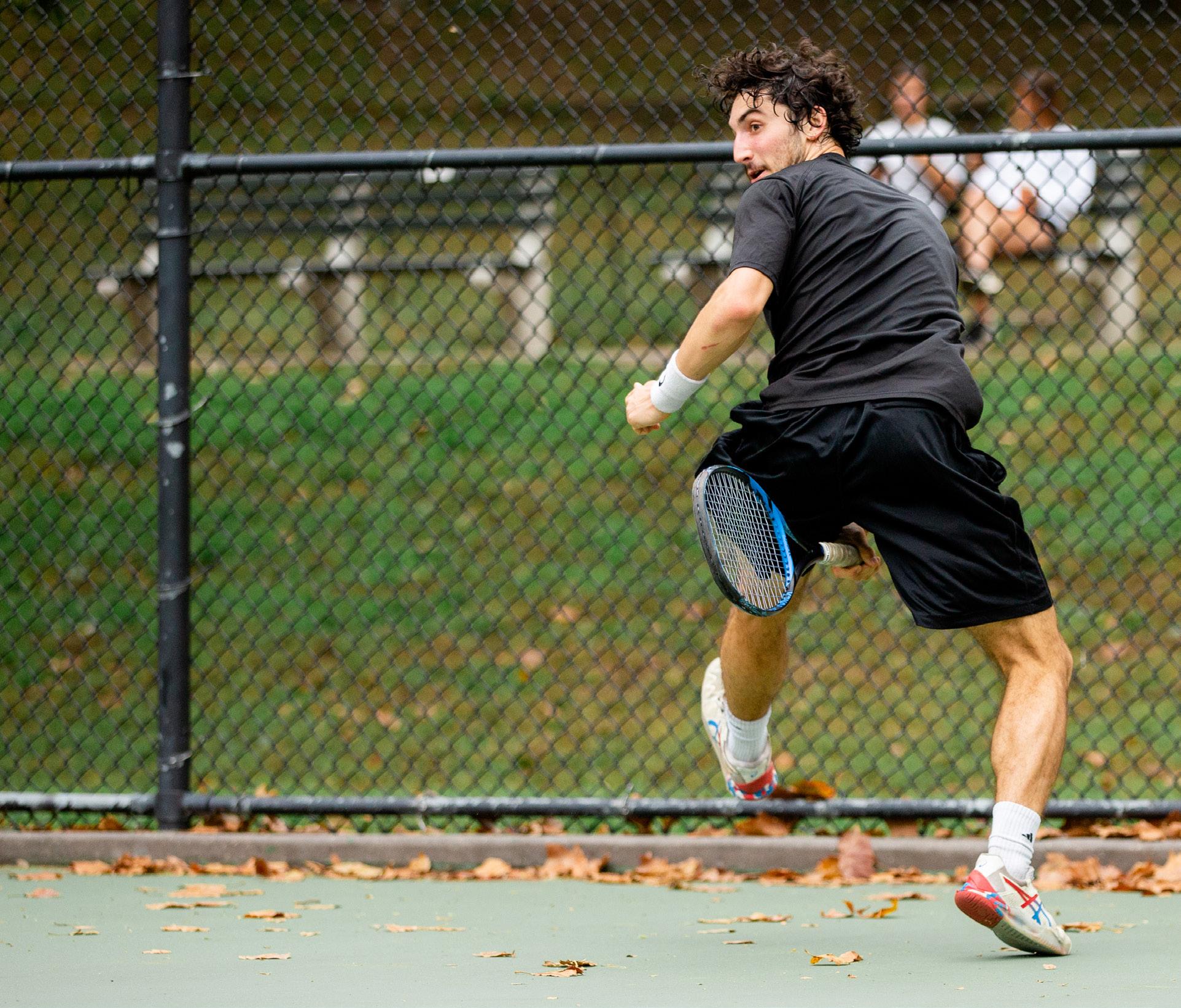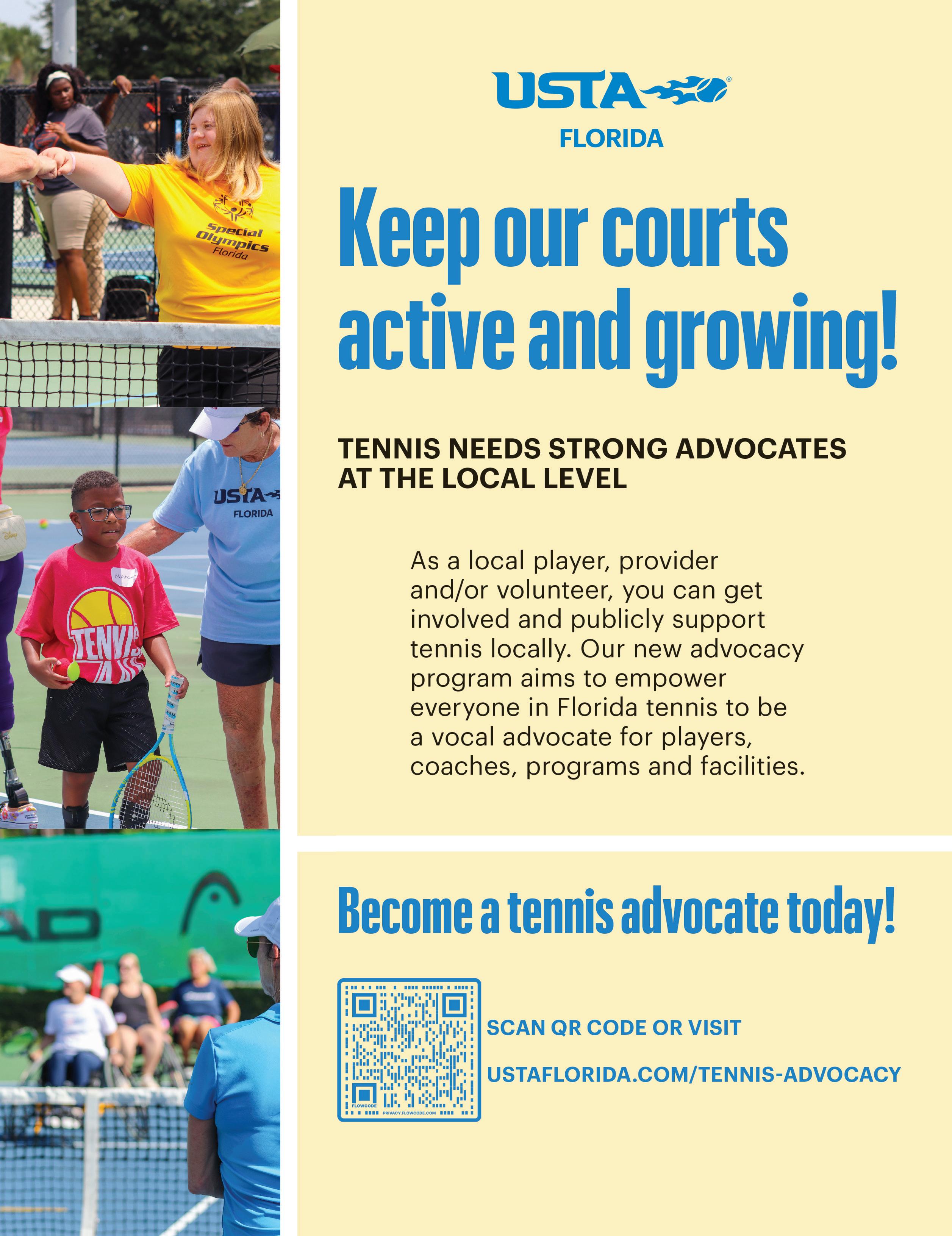












By Phil Girardi
I started volunteering for USTA Florida as a District Director during the 50th celebration in 1999. Over the past 25 years, I have volunteered for this section under 12 Past Presidents. I thank all of them for the leadership that they brought before me. It’s amazing how fast time has gone. Over the years, the face of tennis has been changing and our organization has and still needs to change with it.
In the mid 1980’s and into the early 1990’s I travelled on the road as a musician. I played tennis during the day and music at night. There were many times when I was not allowed in certain facilities, not just private, due to my look, hair length and who I was playing with. Especially if I was playing with a bandmate that didn’t look like most people playing there. How times have changed...
When I started volunteering with USTA Florida, I was warmly welcomed in, and my opinions were valued. Over the last 25 years not only has my hair changed but so has this organization. Inclusion is a key to keeping our sport relevant.
I’ve learned as a volunteer leader over the years that leadership means listening. To have effective leadership you must be willing to listen to those in the grassroots of tennis to get a sense of what is going well and what isn’t. I am blessed to have leadership on my Board, Committees, and Task Forces that work in the trenches of tennis in the Public and Private sectors. We’re tackling
challenges in our section such as facility infrastructure, coaching, and advocacy.
Other things I’ve learned: The relationship between volunteers, staff, and players is crucial. Don’t be afraid of trying things even if you fail. Cultivate relationships with other organizations (“All Hands on Deck”). Communication is essential; and the list goes on.
Our past helped us make a decision about our 75th Anniversary. A oneday celebration would not fit this milestone year. It was going to take a year. Taking the whole year not only gives us a chance to celebrate, but a way to do it with as many of you as possible. If you haven’t already been to an event, there will be two more held this year. One will be in Jacksonville in October and then another event in Tallahassee in December. Please go the USTA Florida website and register to be updated on the 75th Anniversary happenings. I would love to see and meet as many of you that are in the northern part of our section.
There is also still time to host your own event. Register to get an event kit at ustaflorida.com/eventkit and make one of your own events special. While you’re on the website, find the merch tab and get your hands on some limited edition 75th Anniversary gear.
So many individuals in our state make this THE best place in the world to play tennis. Please know that you are truly appreciated not only by me, but by all those around you. Have fun and play hard!
By Jaret Kappelman
USTA Florida, originally known as the Florida Lawn Tennis Association, owes its existence to four founding fathers, Eddie Herr, Gardnar Mulloy, Edward Turville, and Clarence Varner, who had an idea and turned it into reality.
The vision of these four individuals to secede from the Southern Lawn Tennis Association, in 1949, to form the Florida Lawn Tennis Association started as a way to better meet the needs for the Florida population of tennis competitors. This move to become an independent Section has played a pivotal role in helping create what would become one of the most influential tennis organizations in the entire country.
Eddie Herr, a prominent figure in Florida tennis, was instrumental in the establishment of USTA Florida. As a passionate advocate for the sport, especially in the junior tennis space, Herr recognized the need for an organization that could promote
tennis at all levels across the state. His vision and tireless efforts laid the groundwork for the formation of what would become USTA Florida, setting the stage for the organization’s future growth and success. Another Founding Father, Gardnar Mulloy, who was a legendary tennis player, reaching the top ten ranking the world, and a great coach, brought valuable experience and expertise to the table. With his career spanning several decades, Mulloy understood all aspects of the game and the challenges facing tennis enthusiasts in Florida. His insights and leadership played a crucial role in shaping the mission and objectives of USTA Florida, ensuring that the organization remained focused on its goal of promoting tennis excellence with a competitive ground.
Edward Turville, a respected tennis administrator, was another key figure in the founding of FLTA. Turville’s background in sports management
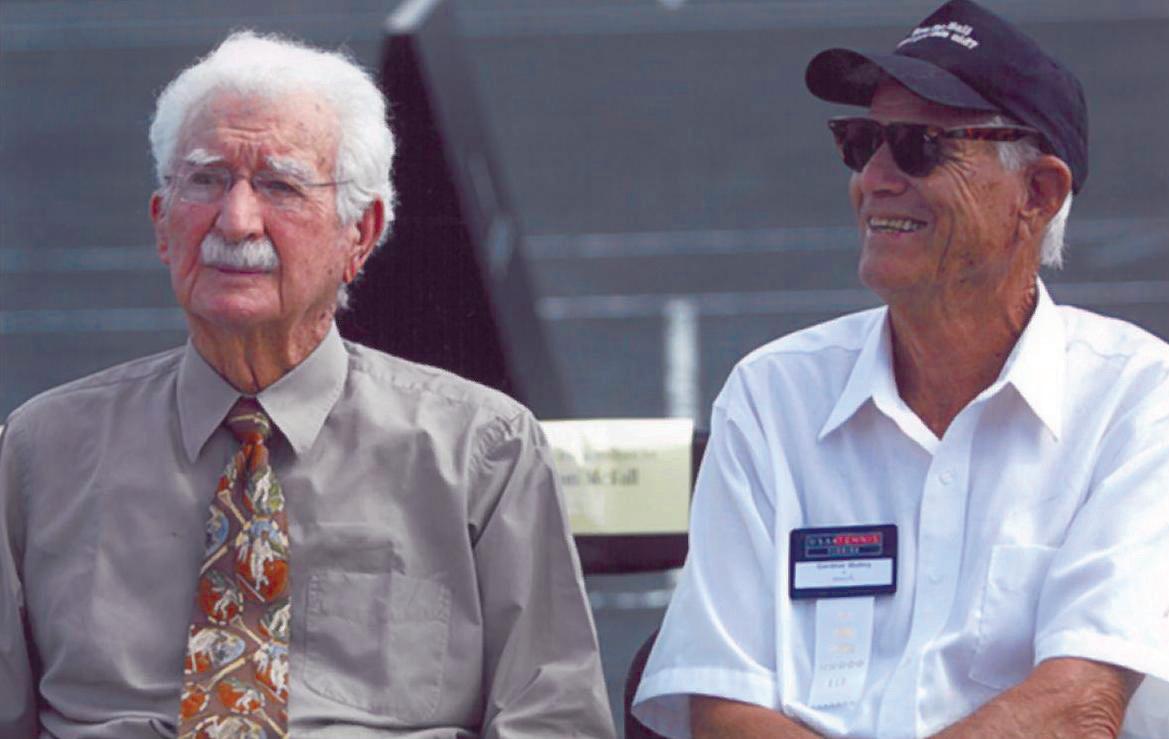
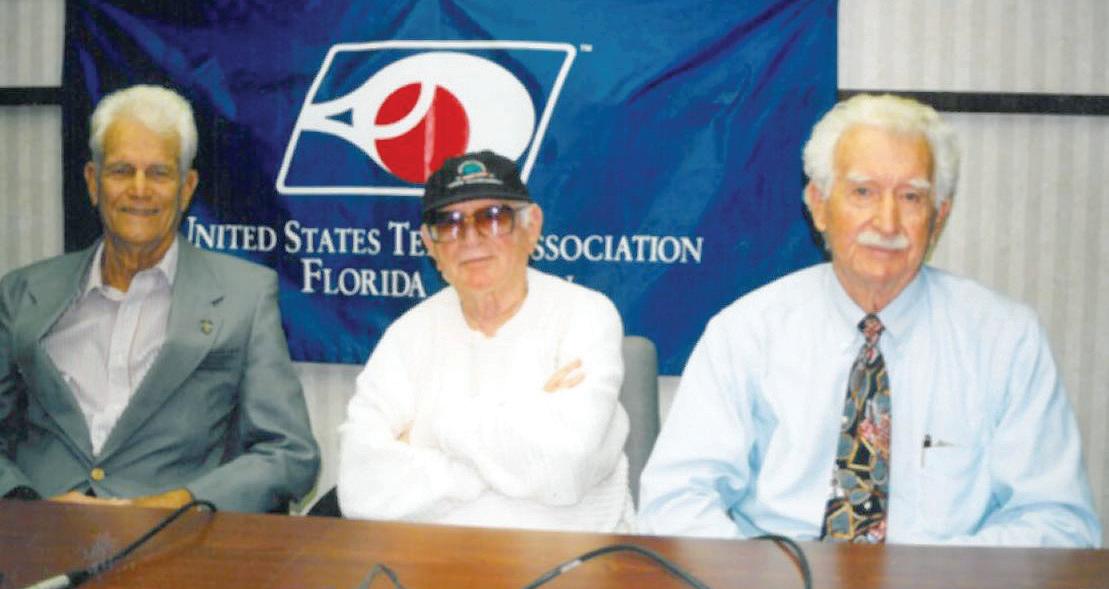
and governance provided the organization with the necessary structure to thrive. His commitment to excellence and dedication to the sport helped establish USTA Florida as a premier tennis organization. He was named the first president of the FLTA. Finally, Clarence Varner, a passionate tennis and community leader, rounded out the group of founding fathers. Varner’s support and advocacy for tennis at the grassroots level were instrumental in the early success of the FLTA. His efforts to promote the sport among communities helped make Florida one of the world’s hotspots for junior and adult tennis.
Together, these four shared a common goal, which was to elevate the sport of tennis in Florida, especially on the competitive side. Without the bold decisions that Herr, Mulloy, Turville, and Varner made, Florida Tennis would not have the reputation it is proud to claim today.
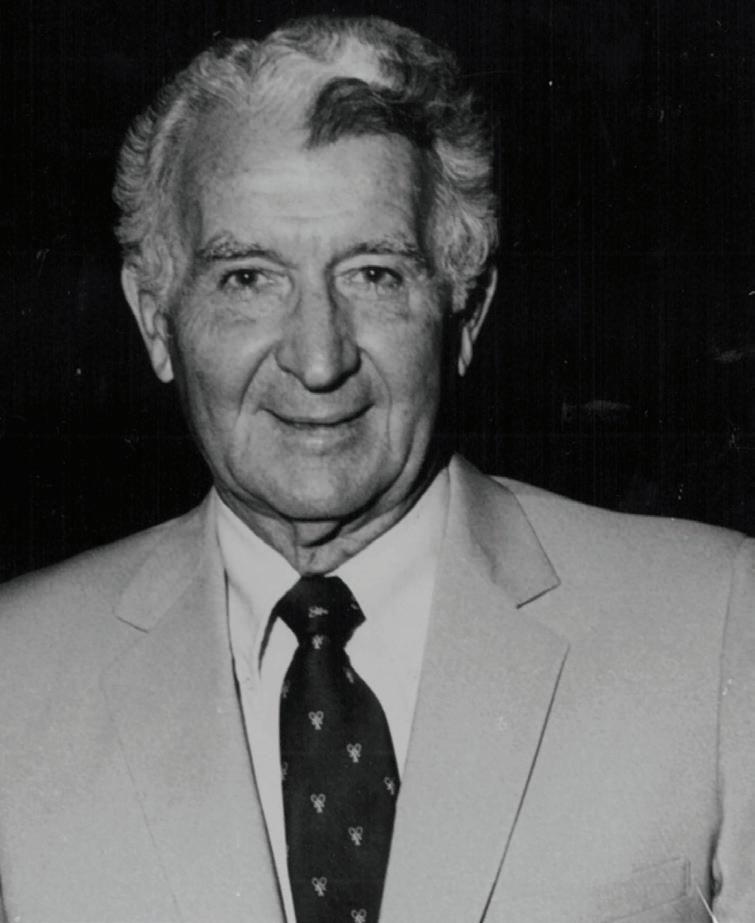
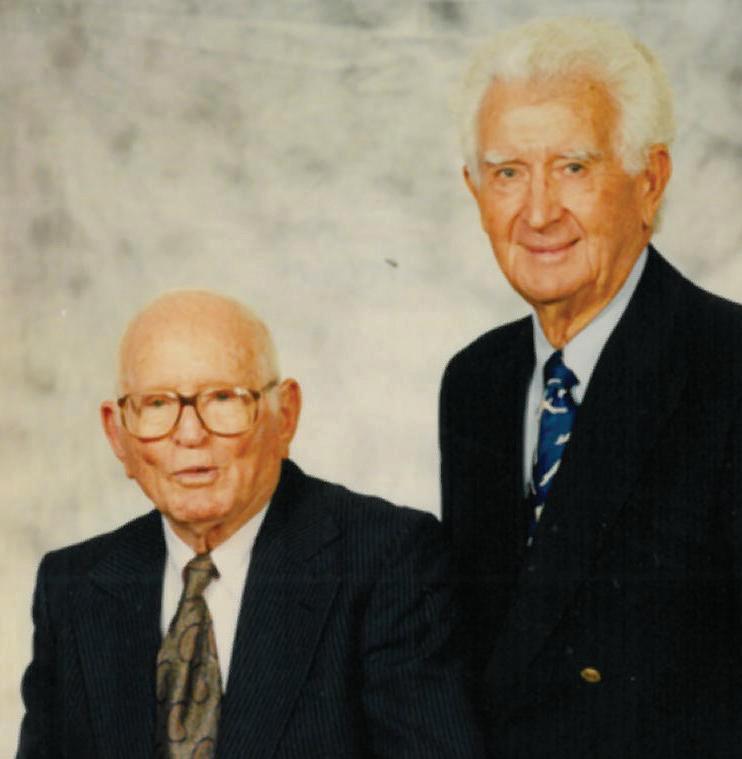

By Jaret Kappelman
The USTA Florida Tennis Trail is a journey through the rich tapestry of tennis history in the Sunshine State. From iconic venues to public parks pushing the sport forward, this trail offers a glimpse into the vibrant legacy of tennis in Florida. With over 40 locations listed and growing, here’s a look at just a few:
Ashe-Buchholz Tennis Center at Moore Park
Moore Park was instituted in 1927 when T.V. “The Pineapple King” Moore donated the land to the City of Miami. Six years later the park hosted the college football bowl game that would eventually become the famed Orange Bowl. Bobby Curtis, who is broadly recognized as the founder of the Florida Junior Team Tennis program (eventually adopted nationwide by the United States Tennis Association) got his start teaching tennis at Moore Park in the 1950s.Serving a diverse and economically challenged neighborhood in Miami, Curtis turned the Moore Park tennis center, now the Ashe-Buchholz Tennis Center at Moore Park, into a safe haven for children of all backgrounds, despite their means.
Tennis legend Arthur Ashe conducted clinics here, inspiring generations of players. It is the home of National Junior Tennis and Learning (NJTL) organization, First Serve Miami, which has impacted lives of many players. This was also the first location in southern Florida to host an American Tennis Association sanctioned tournament. The park’s influence on local tennis is profound, as it has nurtured both aspiring players and future legends of the game - including Mary Joe Fernandez, who played her first tournament here.
Biltmore Tennis Center
With 10 lighted courts and a recreation center, the Biltmore Tennis Center rests in the shadow of the Biltmore Hotel under a giant banyan tree. The public facility includes a tennis pro shop with tennis professionals on site.
The Tennis Center is named after the late William H. Kerdyk Sr. who served as a Coral Gables City Commissioner for 28 years. Among his many accomplishments, Mr. Kerdyk is credited with saving the Biltmore Hotel from demolition after it closed as a Veteran’s Administration Hospital in 1968. The William H. Kerdyk Biltmore Tennis Center in Coral Gables has a rich history closely associated with Mary Joe Fernandez and the Orange Bowl. As a prominent venue for the Junior Orange Bowl, it has witnessed the rise of numerous junior talents, including future stars. The Junior Orange Bowl’s legacy continues to thrive at this center, fostering the next generation of tennis champions.
Flamingo Park, situated in Miami Beach, has deep ties to USTA Florida. It is close to the Blackstone Hotel (now apartments), which was the first meeting place for the newly formed Florida Lawn Tennis Association.
The park was originally a golf course and part of the Flamingo Hotel. It was eventually purchased by the City of Miami Beach in 1929 for $300,000 and then used for multiple sports and activities.
Flamingo Park has hosted many prominent tennis tournaments, most notably the Orange Bowl International Tennis Championships, which were hosted at the site from 1947 to 1998 Legends Bjorn Borg, John McEnroe, Ivan Lendl, Chris Evert, Mary Joe Fernandez and Gabriela Sabatini all won titles on its grounds. These events not only showcased young talent but also contributed to the sport’s growth in the state.
Florida A&M University’s significance in Florida tennis extends to being the place where Althea Gibson, a trailblazing African-American tennis icon, both studied and played tennis. Her time at FAMU was instrumental in shaping her tennis career, and her subsequent breaking of the color barrier at the U.S. Nationals marked a pivotal moment in the sport’s history. FAMU continues to
stand as a symbol of diversity and inclusion in Florida tennis, inspiring generations of players.
Nestled in Daytona Beach, the Florida Tennis Center features world-class facilities and has played host to hundreds of tournaments of varying levels. Home of the USTA Florida Section office from 2001 until 2017, the Florida Tennis Center has shaped the careers of many future homegrown tennis stars, and through the hosting of the USTA Pro Circuit Daytona Beach Women’s Pro Tennis Championship has bolstered the careers of international tennis stars.
After undergoing recent renovations resulting in state-of-the-art tennis courts, the facility continues to serve as a central hub for tennis administration and event organization, actively facilitating the growth of tennis in the region. From programming to competitive play, the Florida Tennis Center is sharing the joy of tennis with many people in the community.
With 24 clay courts and 20 of them lit for the night, the possibility for play never ends. The Florida Tennis Center isn’t just a facility, it’s a historical landmark that has played a key role in the growth of USTA Florida as an organization and the landscape of competitive tennis in the state.
The IMG Academy in Bradenton is a tennis powerhouse with a significant impact on the sport in Florida. Founded by Nick Bollettieri, it has produced numerous tennis professionals, cementing its status as a premier tennis academy. The academy’s influence extends beyond Florida, with its reputation for developing elite players known worldwide.
The Jimmy Evert Tennis Center is Fort Lauderdale’s premier tennis facility. Recognized as the “Home of Champions,” it is one of the country’s top municipal tennis centers. This City of Fort Lauderdale Parks and Recreation facility is in Holiday Park, a 90-acre urban park in downtown Fort Lauderdale.
Known throughout the world as the “Home of Chris Evert,” the Jimmy Evert Tennis Center has a rich and distinguished history, which includes contributing to the development of tennis professionals such as Chris Evert, Jennifer Capriati, Brian Gottfried, and Harold Solomon. In addition, the Jimmy Evert Tennis Center is credited with producing six National Junior Singles Champions and 21 of “Florida’s All-Time Jr. Players.” Jimmy Evert, a longtime Fort Lauderdale resident, played a significant role in developing the center. His 49 years of dedicated service brought the center from its humble origins to what is now a world-renowned tennis center. Upon his retirement in 1997, the City of Fort Lauderdale honored its “Patriarch of Tennis” by renaming the former Holiday Park Tennis Center to its present name, the Jimmy Evert Tennis Center.
Crandon Park
The land Crandon Park occupies was once part of the largest coconut plantation in the United States, operated by William John Matheson and his heirs. In 1940 the Matheson family donated 808.8 acres of their land to Dade County (now Miami-Dade County) for a public park. In return, county commissioner Charles H. Crandon promised that the county would build a causeway to Key Biscayne.
Crandon Park has a rich history intertwined with the Miami Open, one of the world’s great tennis tournaments. It was held at Crandon Park from 1987 to 2018. The efforts of Butch and Cli Buchholz, along with Merrett Stierheim and others, led to the tournament’s relocation to this world-class facility that made Key Biscayne one of world’s most famous sites in tennis.
Crandon Park was the epicenter of the Miami Open, hosting world-class players and creating memorable moments in the sport’s history.
The dream of an international tennis tournament in Miami began in the 1960s, when top tennis players such as Jack Kramer, Frank Sedgman, Pancho Gonzalez, Pancho Segura and Butch Buchholz toured the country in a station wagon, playing tennis in darkened arenas and fairgrounds. In 1980, when Buchholz was executive director of the Association of Tennis Professionals (ATP) – the player’s union – he met a vice president of the Thomas J. Lipton Company who liked his idea of creating a two-week players tournament. A sponsorship agreement would eventually be reached for $1.5 million a year for five years and Lipton would own the title. The “Winter Wimbledon,” as it was first dubbed, would be the first major tournament of the year (the Australian Open was then held in December). It was decided that the first tournament would be held at Laver’s International Tennis Resort in Delray Beach, 50 miles north of Miami. On Feb. 4, 1985, following 20 years of nurturing a dream to create a world-class tennis tournament, the first ball was struck at the International Players Championships and a new tradition in tennis began. The first champions were Tim Mayotte and Martina Navratilova. The women’s final between Navratilova and Chris Evert was a sellout.
Pompey Park, located in Delray Beach, holds great significance in Florida tennis history. It was a pivotal location for Coco Gauff’s tennis journey, where she developed her skills and laid the foundation for her remarkable career. Additionally, the park occasionally served as a practice location for tennis superstars Venus and Serena Williams. Richard Williams aimed to integrate them into the local community while they trained with Rick Macci, further enriching the park’s tennis heritage.
Riverside Racquet Complex
The newest member of USTA Florida Managed facilities, Riverside Racquet Complex has been an integral part of Florida tennis history. It was here that Mardy Fish, a Davis Cup standout and captain, honed his skills, going on to become one of the state’s top tennis performers. His contributions to the Davis Cup and his unwavering commitment to tennis and overall well-being make
this complex a hub for inspiration, proving that it’s more than just a facility—it’s a place where champions are made.
In January 2024, USTA Florida held an event at Riverside to honor Mardy Fish for his dedication to tennis, both on and off of the courts. Two courts were named in his honor, and this event marked the launch of the Historic Florida Tennis Trail.
The University of Miami’s tennis program, founded by Gardnar Mulloy in 1930, reflects the state’s supreme tennis legacy. Mulloy’s induction into the Tennis Hall of Fame, along with his dual roles as a player and coach, underscores the university’s historical significance. The storied history of Hurricane tennis has been highlighted by one of the best dual match records in collegiate sports. Since 1930 the Hurricanes have compiled a record of 1198-455-9. In fact, from 1957-1964, the Hurricanes rolled up 137 consecutive dual match victories, one of the most impressive winning streaks in sports history. The University of Miami women’s collegiate tennis program spans more than half a century and boasts one of the most storied programs in the nation. Miami, which owns nine conference titles, is one of just seven schools with multiple NCAA Singles Championship winners and one of only seven with both a singles crown and a doubles crown.
Notable Florida tennis names connected to UM are Pancho Segura, Doris Hart, Ed Rubino, Jay Berger, and Megan Bradley (Rose).
Finally, The USTA National Campus in Orlando is a crown jewel in American tennis, dedicated to advancing the sport at all levels. Its world-class facilities and commitment to player development have shaped the game of countless tennis enthusiasts. With the ability to host prestigious tournaments and training programs, it continues to be a crucial player in promoting tennis at both regional and national levels.
As you embark on the USTA Florida Tennis Trail, you’ll discover the rich history and heritage, spanning generations and encompassing a wide range of experiences. To view the full Florida Tennis Trail, or to submit a location to be added, visit ustaflorida.com/tennistrail.
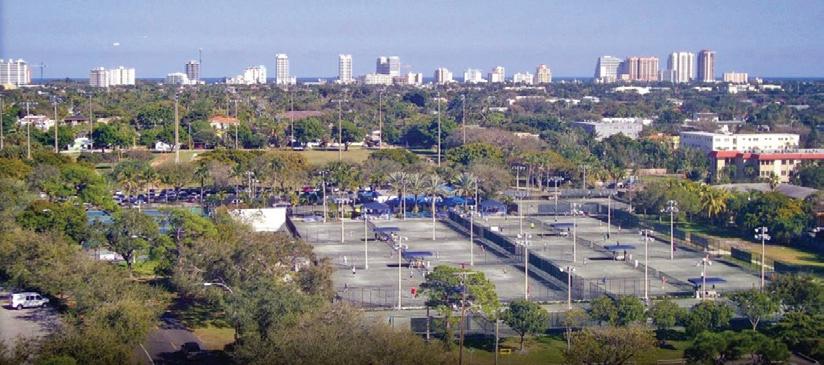
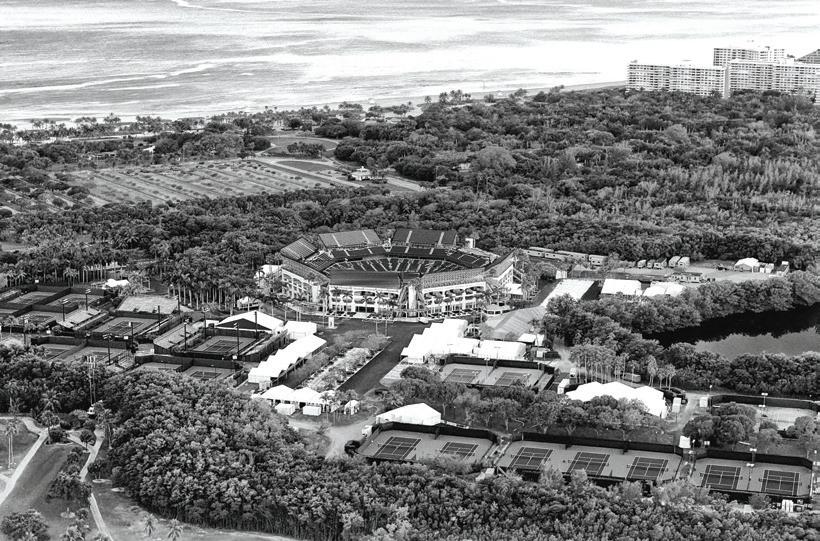

Eddie Herr, Clarence Varner, Gardnar Mulloy and Edward Turville, the founders of the Florida Lawn Tennis Association, now known as USTA Florida, were visionaries. They recognized that competition, especially between the best Florida and international junior players, was a key to tennis success. To foster competition in Florida they oversaw the “Great Secession” of Florida from the Southern Lawn Tennis Association in 1949. In 1951, the FLTA officially gained sectional status following action by the USLTA, now the USTA.
In 1945 Eddie Herr founded the Miami Beach Tennis Association. Herr was concerned that his daughter, Suzanne, and other Florida junior players, did not have access to enough tournaments. His answer was to create the Orange Bowl International Tennis Championships in 1947, initially played in Miami Beach, which became one of the most important junior tennis events in the world.
It is a ‘Grade A’ ITF tournament that features both boys and girls, singles and doubles draws at both ‘18 and under’ and ‘16 and under’ age groups. Since 2011, it has been held at the Frank Veltri Tennis Center in Plantation, Florida.
According to Harold Solomon, the former Orange Bowl tennis champion in 1969 and 1970 and the 2024 Orange Bowl Hall of Fame Tennis Inductee, the Orange Bowl is the most important junior tennis event in the world. “The Orange Bowl was considered the premiere [junior] tournament in the world. Junior Wimbledon was not that big, and the Australia and the French really were not quite there either. So, this was the tournament that everybody wanted to play.”
Players who have competed at the Orange Bowl include: Andre Agassi; Arthur Ashe; Boris Becker; Bjorn Borg; Jimmy Connors; Jim Courier; Stefan Edberg; Chris Evert; Roger Federer; Mary Joe Fernandez; Steffi Graf; Jusine Henin; Ivan Lendl; Hana Mandlikova; Andy Roddick; Gabriela Sabatini; Monica Seles; Andy Roddick; Dominic Thiem; Guillermo Vilas; and Mats Wilander.
In 1957 Eddie Herr founded the Sunshine Cup junior team competition for boys. In 1976, with Mrs. Frank Jeffert, he cofounded the Continental Players Cup for team play for girls. In 1987, Herr’s grandson, Glenn Feldman, founded the Eddie Herr International Junior Championships in Bradenton, Florida.
Currently, the Eddie Herr International Junior Championship is held at IMG Academy. This invitation-only event welcomes over 2,000 junior tennis players from over 90 countries. Many professionals have won this tournament, including: Maria Sharapova: Jelena Jankovic; Whitney Osuigwe; Miomir Kecmanovic; Michael Mmoh; Andy Roddick and Xavier Malisse.
The Junior Orange Bowl International Tennis Championships began in 1962 in Coral Gables, Florida for boys and girls in the “14 and under” and “12 and under” age divisions. This tournament brings together 800 of the top ranked male and female junior players representing 76 countries.
Tennis legends that have played in the Junior Orange Bowl include: Andre Agassi; Jimmy Connors; Chris Evert; Mary Joe Fernandez; Steffi Graf; Justine Henin; Juan Martin del Potro; Andy Roddick; Monica Seles; Maria Sharapova and Caroline Wozniacki.
There are several professional tournaments that have shaped the Florida tennis horizon. Two of those events are the Miami Open and the Delray Beach Open.
The Miami Open is a Masters 1000 event, often referred to as the 5th Major. It is the brainchild of HOF tennis player Butch Buchholz and his brother, Cliff Buchholz. The Buchholz Family Court is named for them at Hard Rock Stadium in Miami Gardens, the home of the event since 2019.
The first iteration of the tournament was held in February 1985 at Laver’s International Tennis Resort in Delray Beach, Florida. In 1986, the tournament was played at Boca West and then it was relocated to Crandon Park in Key Biscayne in 1987.
This year marked the 39th edition of the event, which was held from March 19, 2024 through March 31, 2024 with prize money for male and female winners of $1,100,000.00. Jannik Sinner was the Men’s singles champion and Floridian Danielle Collins was the Women’s winner. The 2024 Miami Open set an all-time attendance record of 395,683.
Past Men’s singles winners include: Ivan Lendl; Andre Agassi; Jim Courier; Pete Sampras; Marcelo Rios; Andy Roddick; Roger Federer; Andy Murray; and Novak Djokovic.
Past Women’s singles champions include: Martina Navratilova; Chris Evert; Steffi Graf; Monica Seles; Arantxa Sanchez-Vicario; Martina Hingis; Venus Williams; Serena Williams; Kim Clijsters; Vika Azarenka; Sloane Stephens; Ashleigh Barty and Iga Swiatek.
The Delray Beach Open, an ATP 250 event began in 1993 under the stewardship of Mark Baron, the owner and Tournament Director. The Delray Beach Open has grown into the world’s only 10-day ATP Champions Tour and ATP 250 event.
Coral Springs was the tournament’s site from 1993-1998 and it was initially known as America’s Red Clay Championships. Todd Martin won the first singles title, his first career ATP title. The tournament moved from the red clay of Coral Springs to the Delray Beach Stadium & Tennis Center in 1999. In its first year in Delray Beach, the tournament shifted to a hard court event. Lleyton Hewitt became the first singles champion in Delray Beach.
Floridian Mardy Fish captured the crown in 2009. That year was also the first Delray Beach Open doubles title for Bob and Mike Bryan. In 2018, 20-year-old American Frances Tiafoe won his first ATP Tour title at the DBO.
In 2020, 15-year-old Coco Gauff won the first women’s exhibition match at the DBO over NCAA Division 1 champion Estela PerezSomarriba from the University of Miami. 2020 also marked the final match for thet Bryan Brothers on the ATP Tour. They won their 6th Delray Beach Open doubles trophy and 119th career title.
The 2024 Delray Beach Open was the 32nd edition of the tournament. It took place between February 12th and February 18th, 2024. A record 65,135 fans attended the 10-day tournament. Taylor Fritz defeated Tommy Paul to claim his second consecutive DBO title.
Past singles champions include: Jan-Michael Gambill; Tommy Haas; Xavier Malisse; Kei Nishikori; Juan Martin Del Potro; Kevin Anderson; Ivo Karlovic; Marin Cilic; Sam Querrey; Jack Sock; and Reilly Opelka.
The founders of the USTA Florida sought to encourage competition amongst Floridians and international tennis players to expand the game and to develop the best players in the world. Florida has had massive success in the junior, adult, senior and professional tournament spaces. Competition has also been the hallmark of USTA Florida Leagues.
The amazing growth of tennis in Florida is the result of solid and forward-thinking staff leadership. And volunteers have been and continue to be the bedrock of the USTA Florida. The staff is extraordinary but can’t do it alone.
Here’s to another 75 years of healthy tennis competition and beyond!
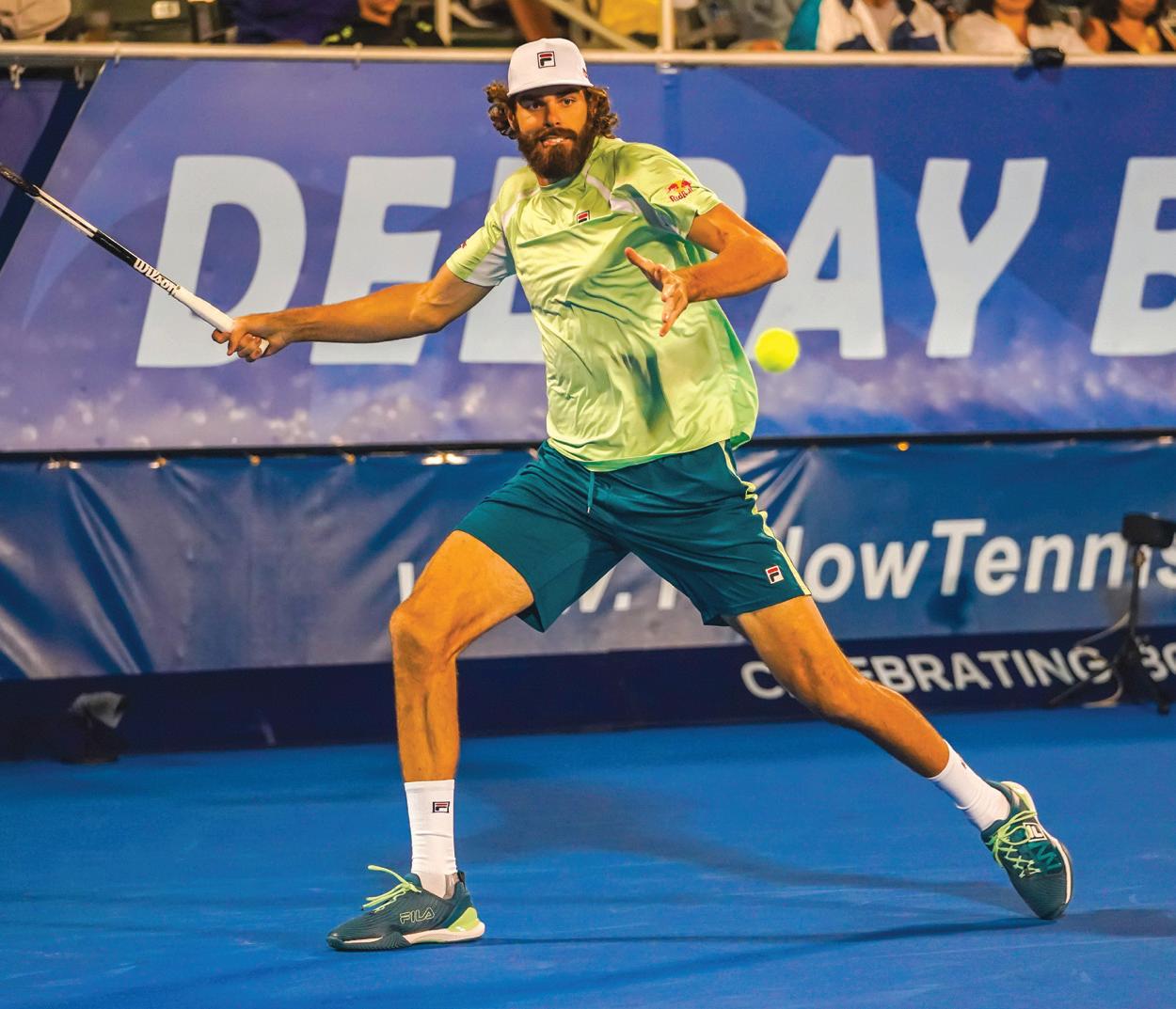
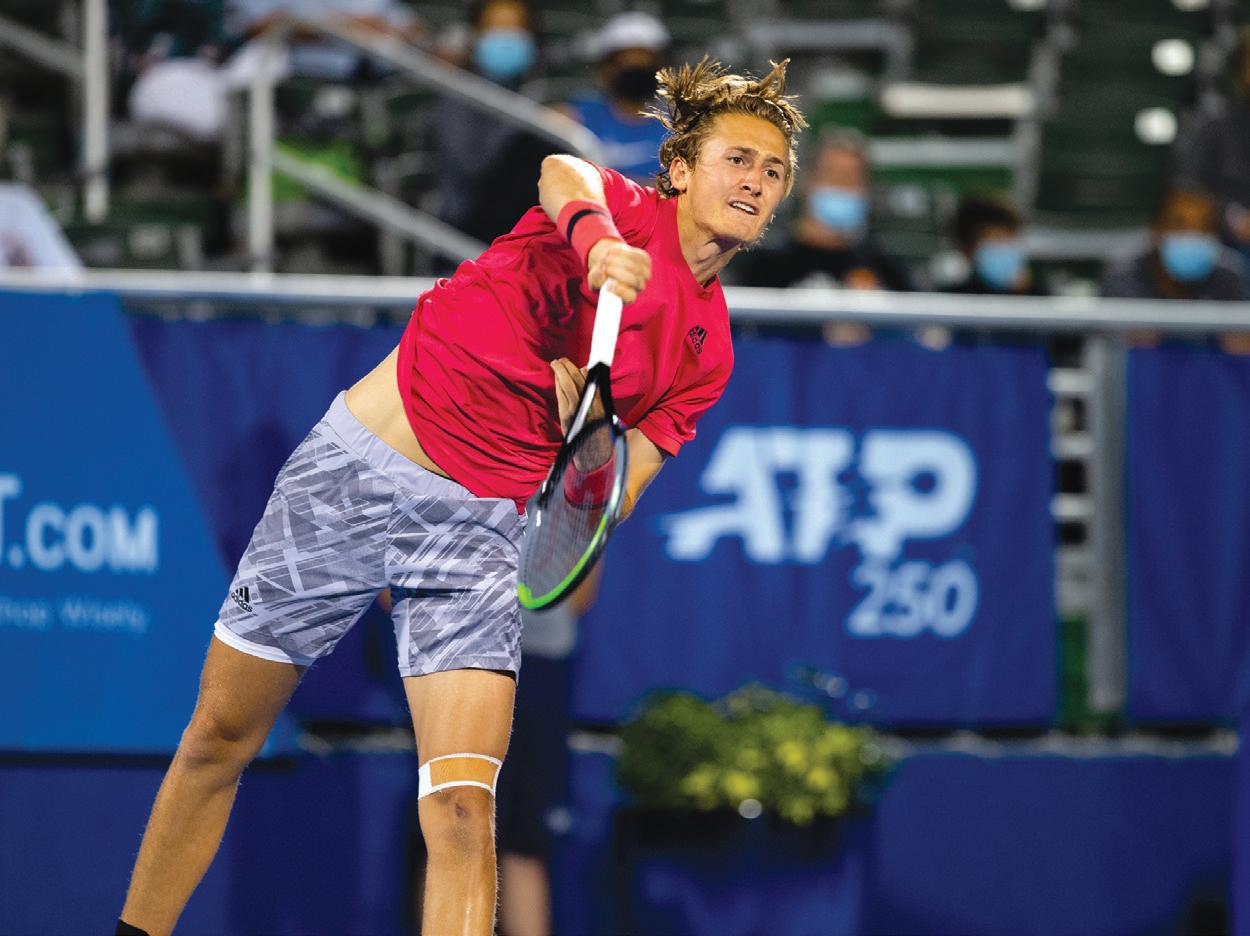
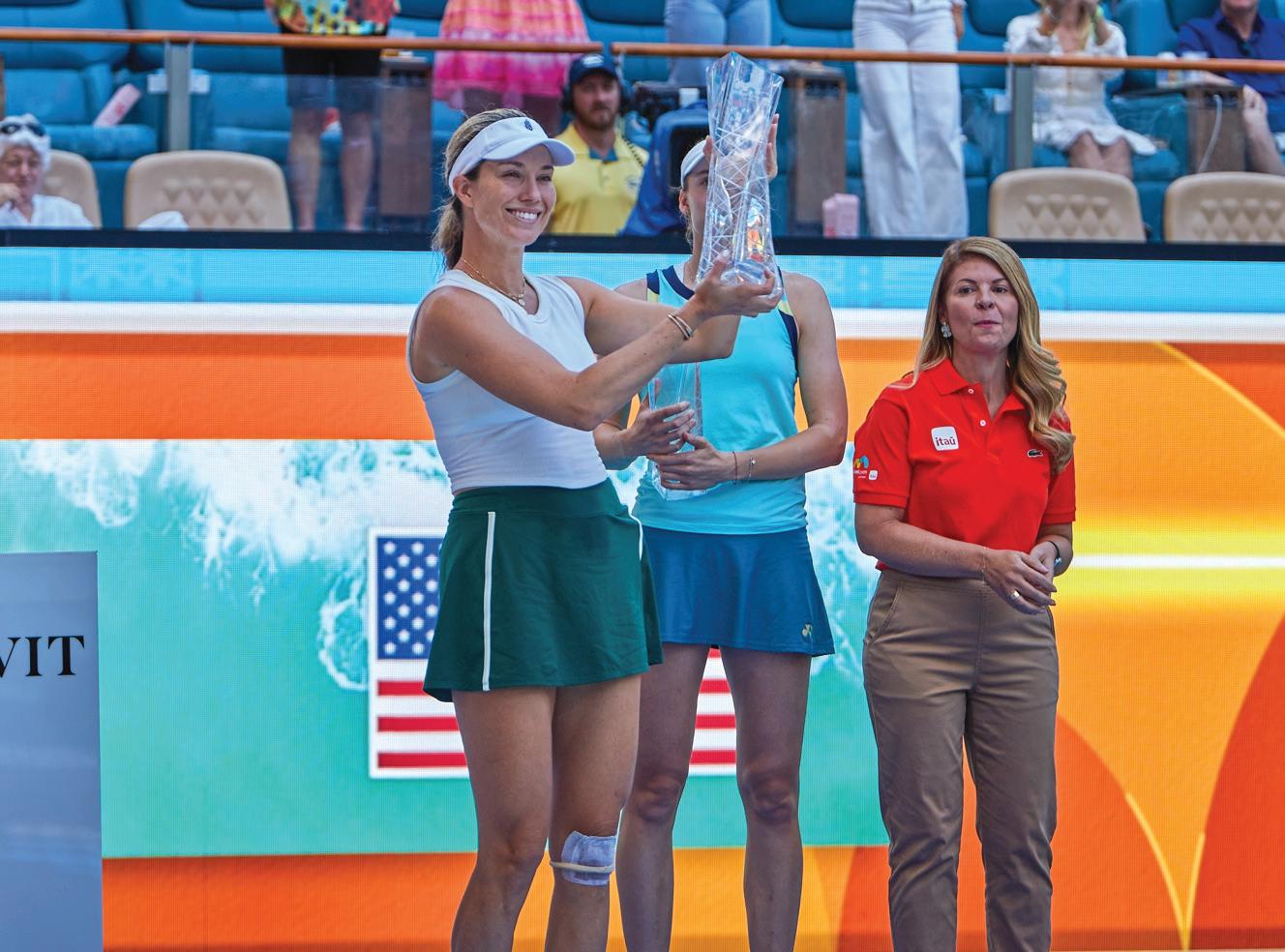
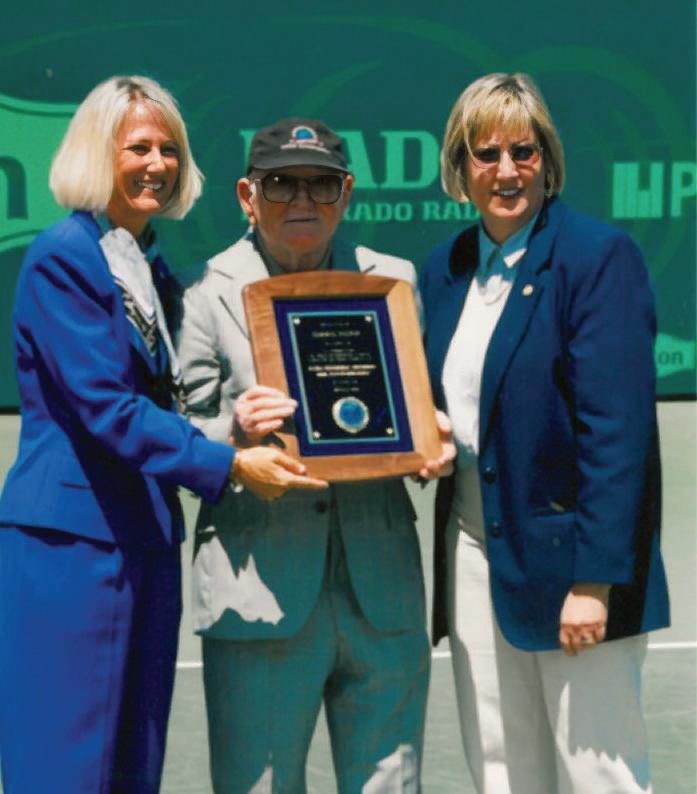
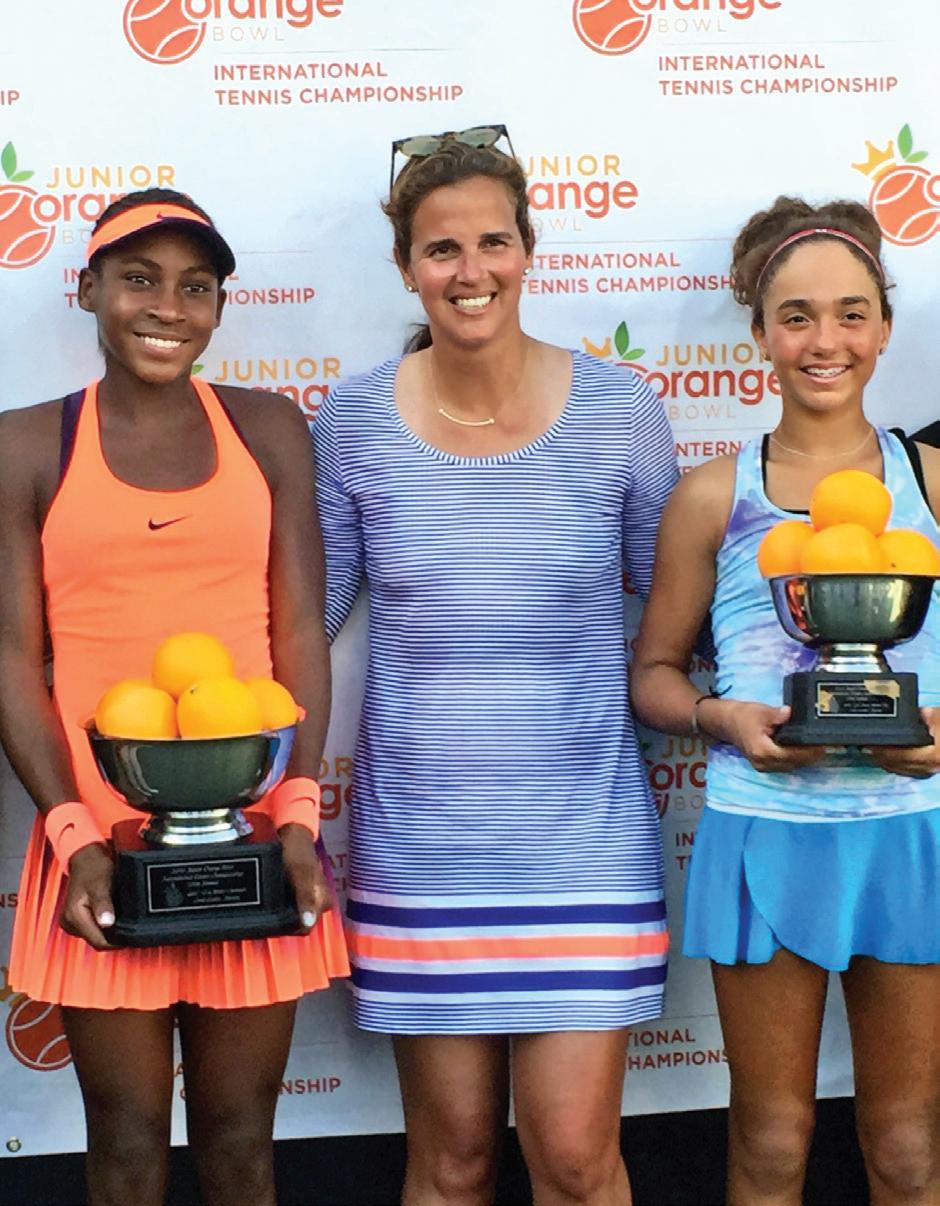

By Jaret Kappelman
The USTA Florida Bobby Curtis Junior Sectional Championship, known as the most prestigious event of junior tennis in Florida, has a storied history that reflects the growth and passion for the sport within the state. Named in honor of Bobby Curtis, this renowned tournament has been the proving ground for countless young tennis talents, some who have gone on to achieve greatness on national and international stages.
The origins of Florida’s Junior State Championship date back to the early 1950s, when it was first established as a platform for junior players in Florida to showcase their skills and compete at the highest level.
Over the decades, the tournament evolved, expanding in size and significance, and has become a pivotal event in the USTA Florida calendar. It provides young athletes with an opportunity to compete in a structured, highly competitive environment, allowing them to test their abilities and gain valuable match experience.
One man who played a pivotal role in the creation of the just the junior tennis space in Florida, is none other than Bobby Curtis, also known as “Mr. Junior Tennis” to many.
Bobby Curtis was one of the state’s most impactful figures in the junior tennis space. From organizing countless events to teaching youth players the game, Curtis was more than a tennis advocate.
He got the nickname “Mr. Junior Tennis,” for many good reasons. In Miami, Curtis took to a troubled neighborhood and created a place for kids to escape from reality and enjoy the game of tennis. In the 1950s, he taught tennis at Moore Park, now known as the Ashe-Buchholz Tennis Center at Moore Park. It didn’t matter what background you came from, what you looked like, or how good you were at tennis, Curtis took time for everyone that came out to play the sport.
That’s what it was all about for Curtis, making sure that kids had a platform to compete and play tennis on. He was all for the kids, watching them
play and work toward reaching the next level.
When he wasn’t teaching kids the sport, he was working diligently for the Youth Tennis Foundation of Florida, where he worked toward establishing Junior Team Tennis nationwide, which today holds more than 60,000 youth players.
Curtis’ dedication to junior tennis in Florida didn’t go unnoticed. In 1977, he was awarded the USTA Community Service Award, which is awarded to individuals who have made significant contributions over a long period of time to the development of tennis in their communities. In 1980, he received the Florida Tennis Association (FTA) Merit Award, in 1989 he was honored with the United States Professional Tennis Association’s Florida Division Award for Service to Tennis, and in 1994 Curtis was inducted into the USTA Florida Hall of Fame.
Curtis was the first employee of USTA Florida, when it was still called the FTA and is one of the main reasons that USTA Florida is thriving today. He was a visionary who understood the importance of development for young-aged players and his contributions have had a lasting impact on the tennis community in Florida.
Throughout the years, the Junior State Championship has undergone many changes, both in format and impact on the sport. To honor Curtis’ legacy, the USTA Florida Junior Counsel voted to rename the Junior State Championship in his name for both singles and doubles in 2012.
Now, the event attracts hundreds of the best junior players from across the state, all vying for the prestigious title and the honor of being recognized among the elite in Florida junior tennis. The tournament has been instrumental in nurturing young talent and has served as a springboard for many players who have gone on to achieve remarkable success.
Four former Bobby Curtis champs have ranked No. 1 in the world on the ATP and WTA rankings. Those players are Chris Evert (1971 18s, 197069 16s, 1968 14s, and 1966 10s champion), Jennifer Capriati (1986 12s champion), Jim Courier (1986
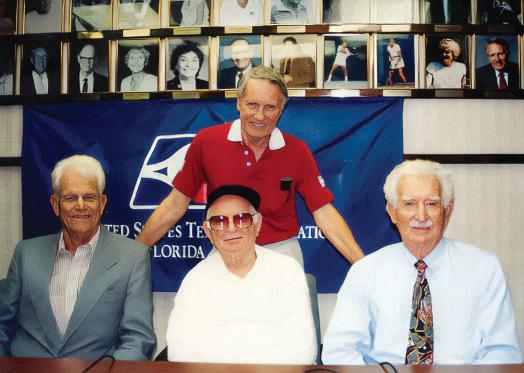
18s champion) and Andy Roddick (1996 14s, 1994 12s champion).
Current WTA players Amanda Anisimova (2014 14s, 2011 10s champion), Sofia Kenin (2010 12s), Danielle Collins (2011 & 2009 18s, 2006 12s), and Bethanie Mattek-Sands (1998 14s) are also notable winners. Prominent Florida legends who were winners include three-time Grand Slam runner-up and two-time Olympic gold medalist Mary Joe Fernandez (1983 14s, 1982 12s); former world No. 8-ranked Carling Bassett (1980 12s); former world No. 7 and current U.S. Fed Cup Captain Kathy Rinaldi (1980 14s, 1979 12s); former world No. 7 Jay Berger (1985-84 18s, 1983 16s); former world No. 3 and two-time Slam doubles winner Brian Gottfried (1970 18s, 1966 14s, 1963-64 12s); former world No. 5 Eddie Dibbs (1969 18s, 1967 16s, 1965 14s); and former ATP player and legendary tennis organizer Charlie Pasarell (1958 15s, 1957 13s).
Today, the tournament format features singles and doubles divisions for boys and girls in age categories ranging from 12 to 18, ensuring that players of all levels can compete. There is also a Green Ball competition for 10 and under players.
The impact of the Bobby Curtis Junior State Championship on young players cannot be overstated. For many, it’s their first experience of highlevel competition, providing a valuable learning opportunity and a chance to test their skills against the best in their age group. The tournament also offers a pathway for players to progress to national and international competitions, as this event holds a ton of weight.
As the USTA Florida Bobby Curtis Junior State Championship continues to grow and evolve, the organization remains committed to its core mission that Bobby Curtis lived by, promoting junior tennis and providing young players with the opportunities they need to succeed. The tournament’s ongoing success is a testament to the vision and dedication of Curtis and the countless individuals who have contributed to its development over the years.
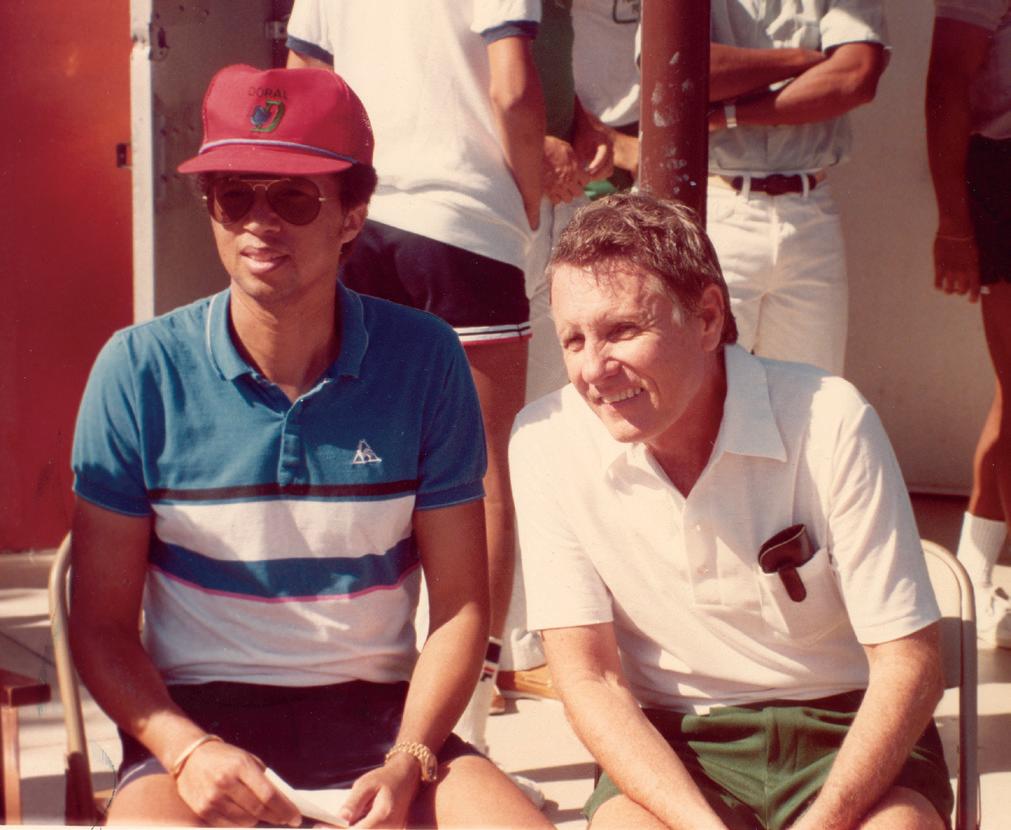
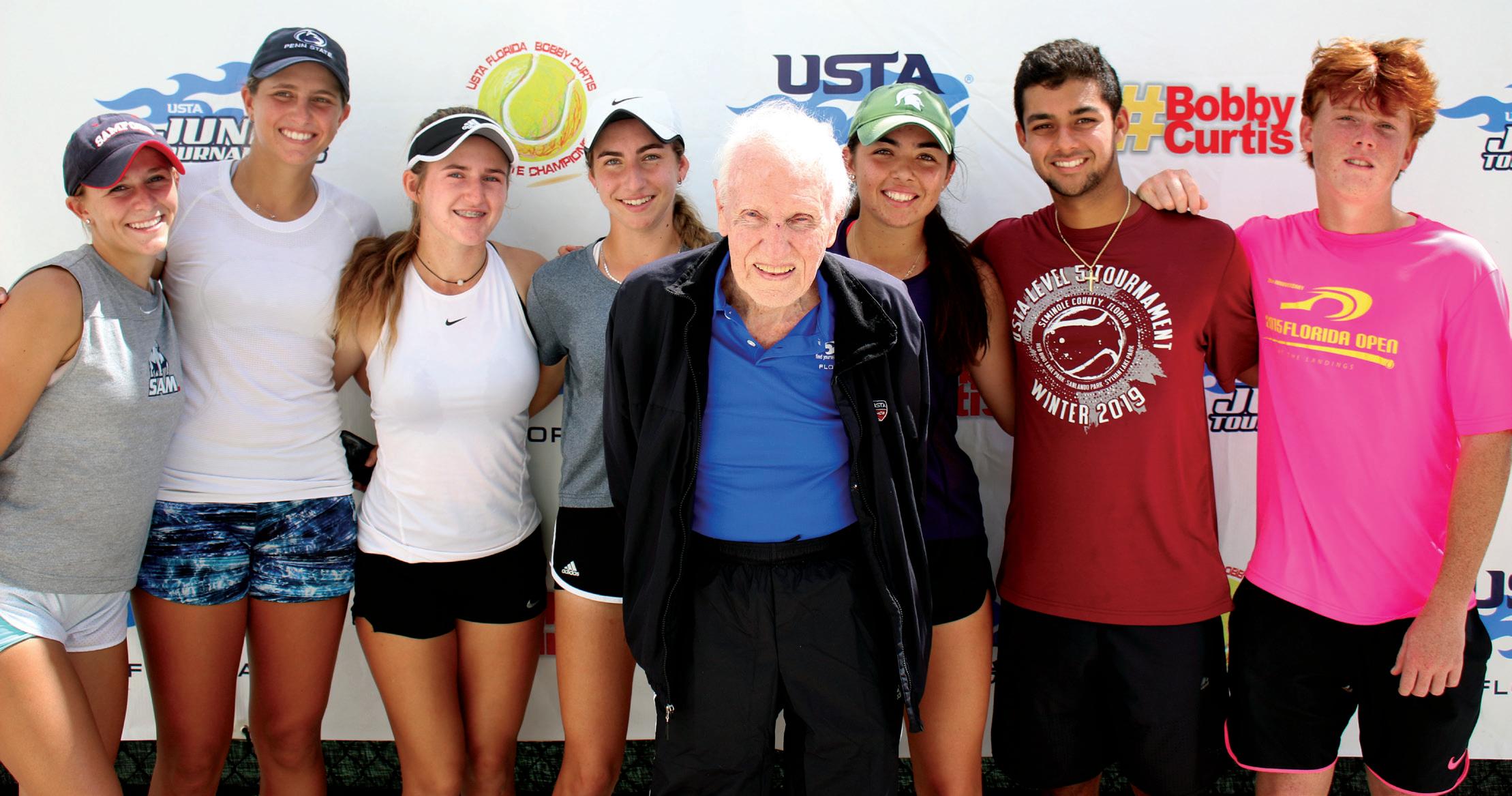
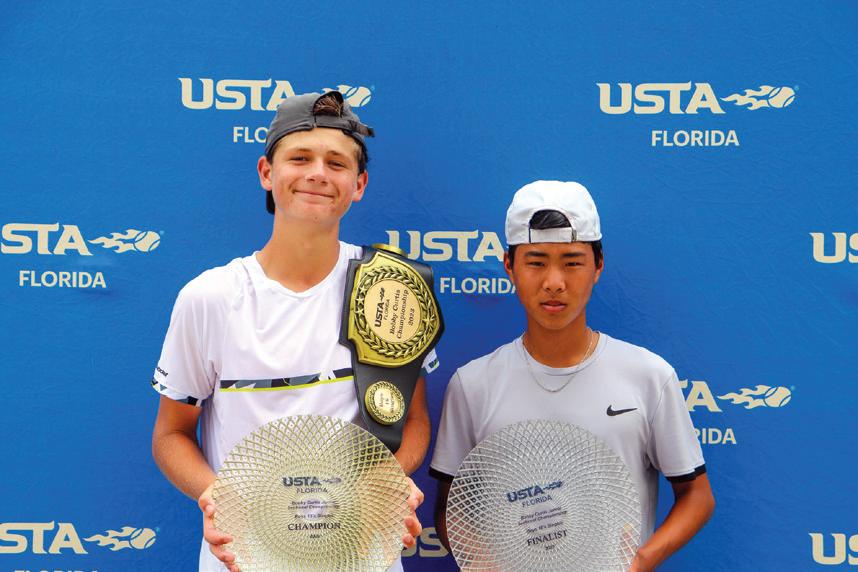
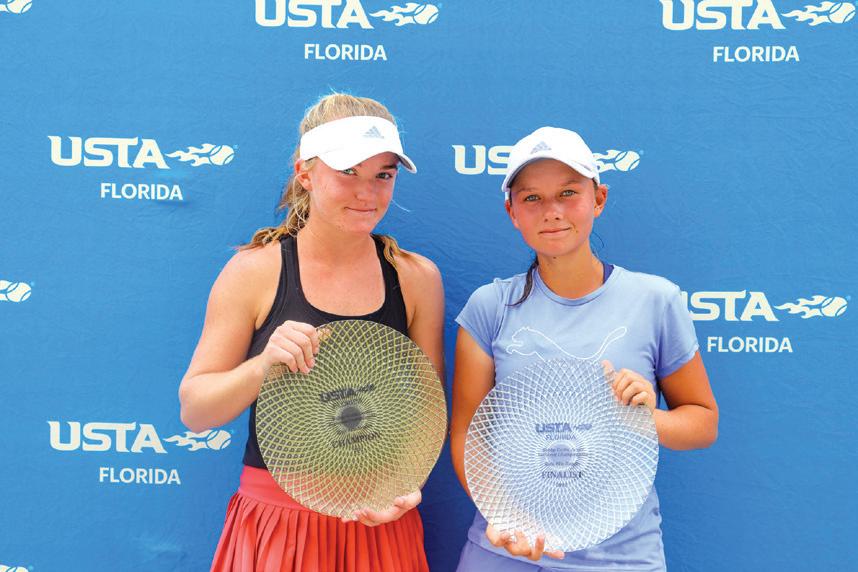
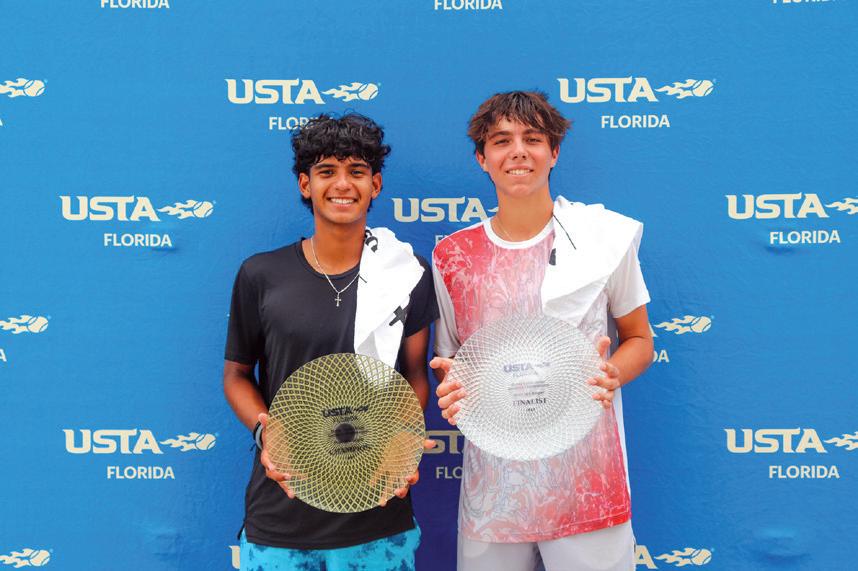
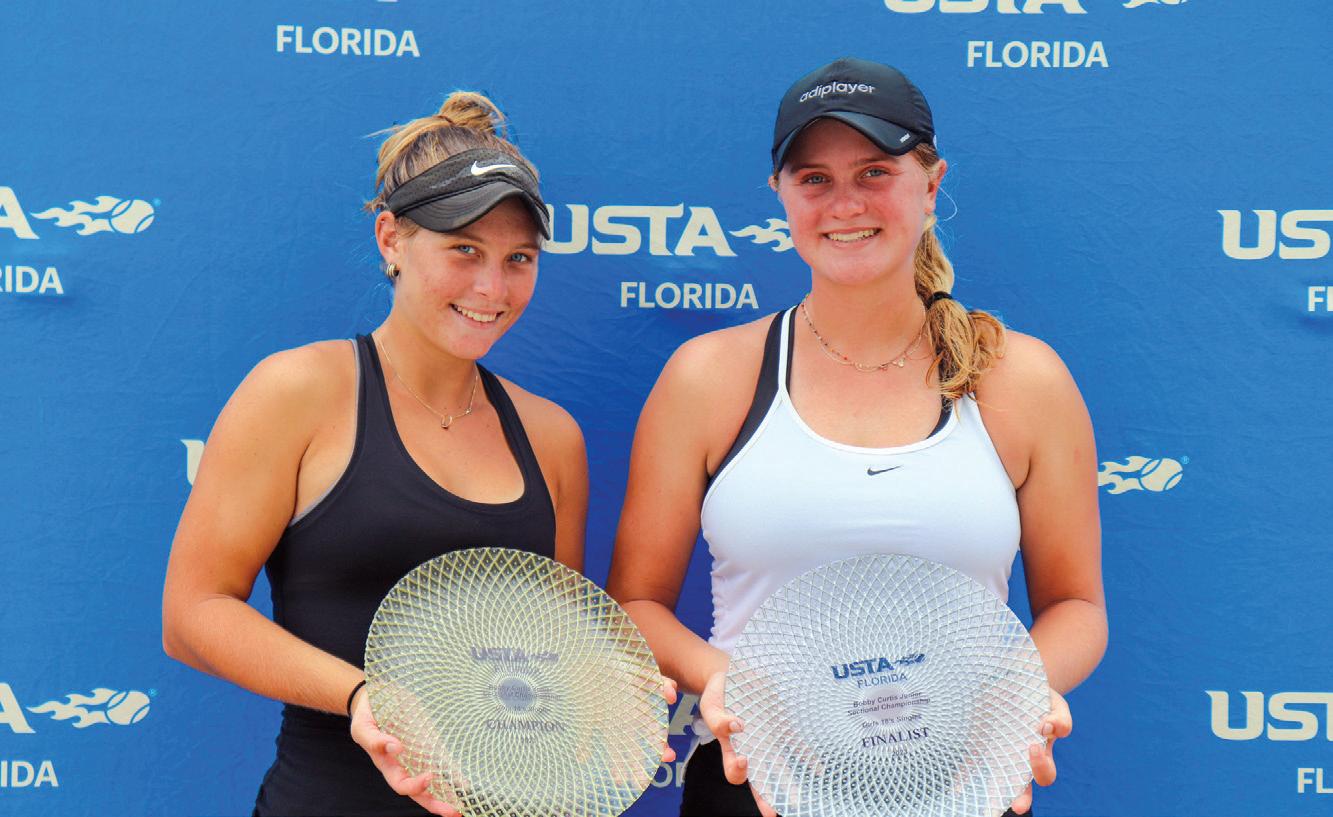
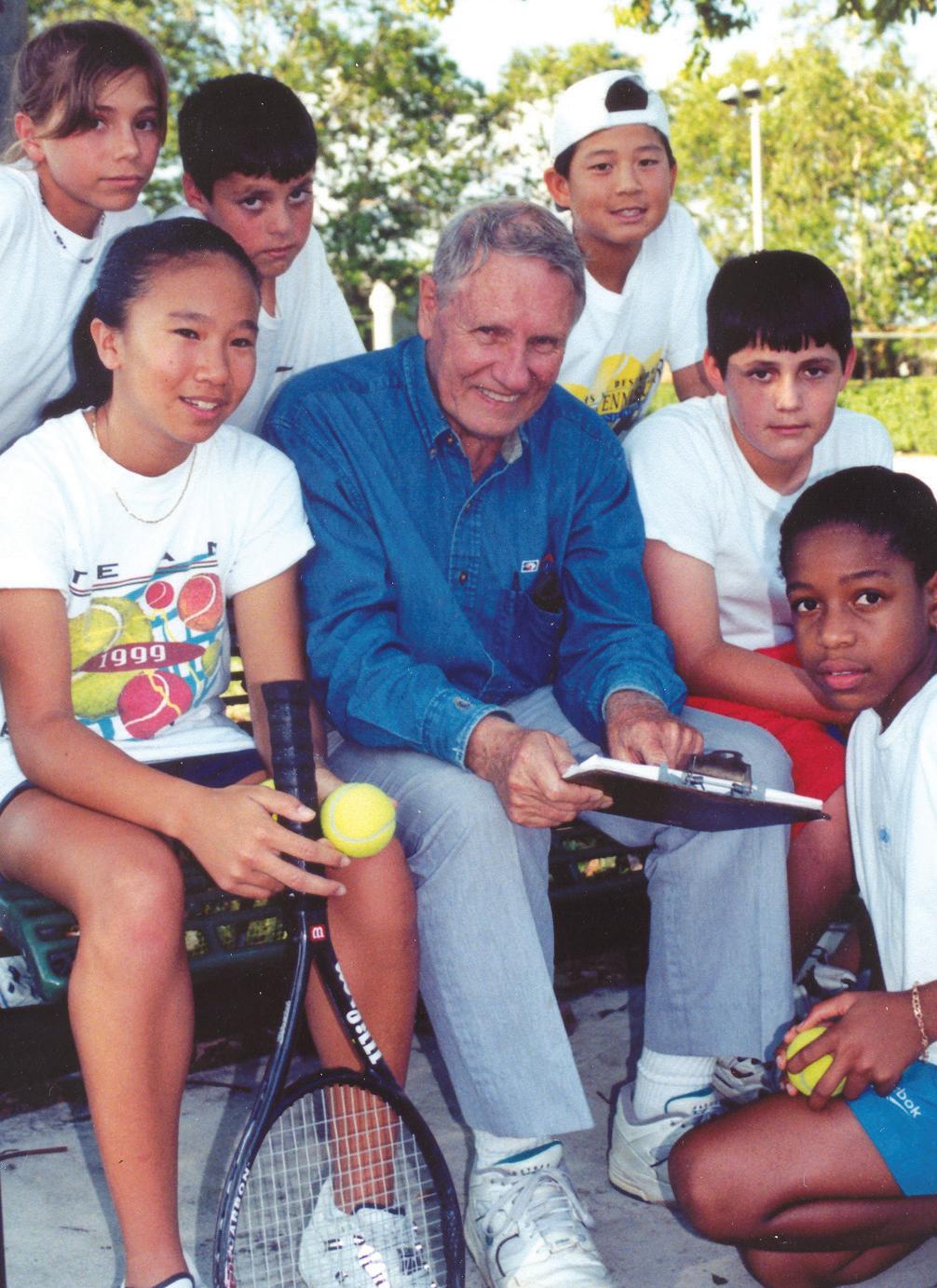
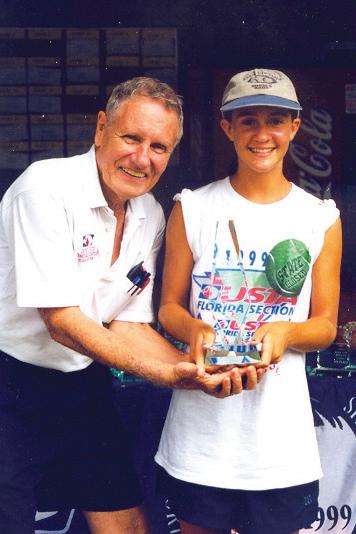
I was 35 years old at the time of my first volunteer position with a nonprofit organization. I quickly learned that, in making decisions for an organization, it is important to know the history. We are celebrating 75 years of bold initiatives by USTA Florida to grow the game of tennis for ALL. It takes “all hands-on deck” to accomplish goals of the organization over the years, which includes volunteers, providers and staff working as one team.
Presidents of the board are part of that team, and as our current President Phil Girardi refers to himself as “our coach”. Each President brings unique talents and perspective to the position to mold and outline a strategic plan. What I have learned from past Presidents, is that the common denominator in making strategic decisions is always, “What is best for the organization and the sport of tennis.” Leave the egos at the door!
By Dana Andrews
At the time I was blessed to become President in 2021, I was advised that I was making my own history, becoming the first Father and Daughter President duo of the organization with my dad, B.A. Grubbs. I was able to share some history as well, by pointing out that the first woman president of the organization, Marian Green in 1986, was my father’s President Elect! B.A. has always been a trailblazer, and I am not surprised by his selection of his successor.
Following Marian’s tenure, Margaret Newfield stepped into the role, in 1988. No doubt the two of them were prime examples of women encouraging one another to embrace a leadership role within the organization. We have had a total of 8 women Presidents, thus far, within the organization, including Sue Delong, Jean Mills, Nancy Morgan, Celia Rehm, and Nancy Horowitz.
I have had the pleasure of knowing some of these leaders personally. Celia Rehm and Jean Mills graciously accepted me to the USTA Florida Foundation Board. I was inspired not only by their wisdom and kindness, but also the fact that as past Presidents they were still giving back to the organization with their time and talents. Nancy Horowitz would encourage me in almost every conversation, that I was capable of being President and of course if it happened, to “have fun!”
Not to leave out the fine gentleman mentors that have helped shape this amazing organization, and continue to give back, to name a few; Bruce Boiko who was grievance chair after his presidency. I accepted that role after Bruce and he was always available if I had any questions. Bob Pfaender has never turned down a phone call to discuss an issue and to share his vast knowledge of the tennis ecosystem. I became a part of the Board because of Robert Hollis, who always told me where he stood on an issue, while displaying the kindest heart. Clark Higgs continues to serve, especially in the area of officials. While I served as President Elect, then President, Clark assured me I was ready for the position. Hope he does
not regret that! And not to be bias, but the “gold star” of a past president continuing to give his time and talents to our organization with the humblest attitude, I must “tip my hat” to Donn Davis, serving in numerous capacities and our guru on Robert’s Rule of Order.
As my time on the board is ending, I am excited to continue to serve this organization in areas such as the Advocacy Advisory team and our Women’s and Girl’s in Tennis initiatives. I cannot express how thankful I am for my own personal growth and learning that I have experienced thus far in volunteering for USTA Florida.
I encourage other women to get involved, all you need is a heart for service. I am currently an occasional tennis player, and not entrenched in the tennis ecosystem. My love for the game and knowing how the sport can be a common denominator in diverse communities, plus, how it can make a difference in a person’s life regardless of age, socio economic background, or level of play, is what drove me to accept the challenge to be a leader in the organization. Trust me, I did not come into the role beaming with confidence, thinking I knew it all, far from it! But I did trust my own personal gifts in the role, and knew that the team of volunteers, providers, and staff were there to lift me up along the way, especially when I stumbled.
A tennis background is not a requirement to serve in this organization at any level. If you tend to think outside the box, enjoy working with diverse communities, enjoy personal growth, and want to make a difference in people’s lives and communities, plus work alongside some amazing people who become lifelong friends, then you need to be a part of our next 75 years!
I will close with my favorite quote from my Dad about this organization that he shared with me when I became President. Even through his battle with dementia, I asked him what he recalled while he was President; “My hours I put in were secondary to the enjoyment I got out of it.”
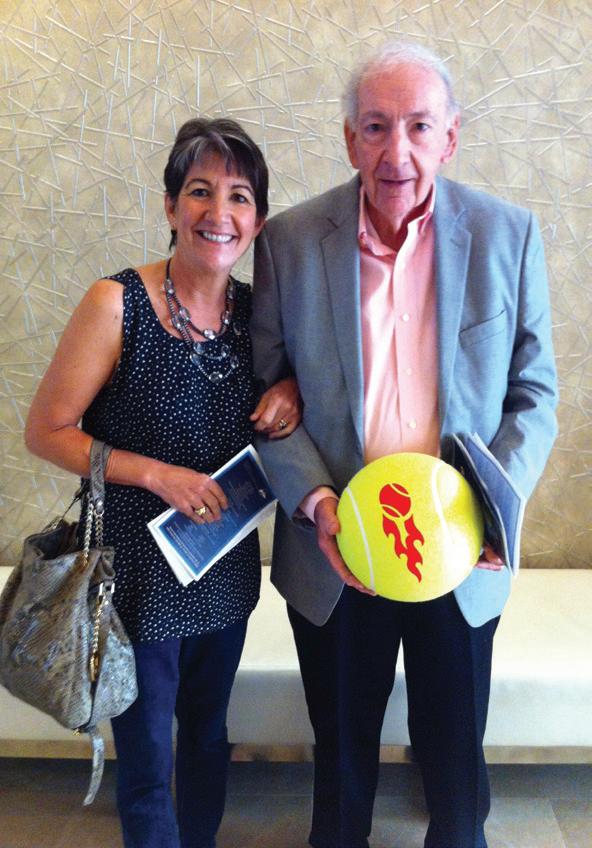

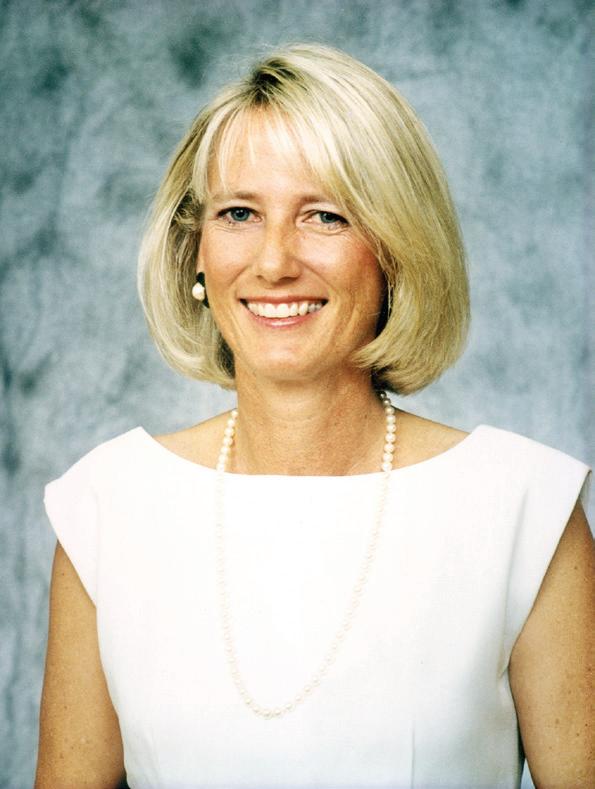
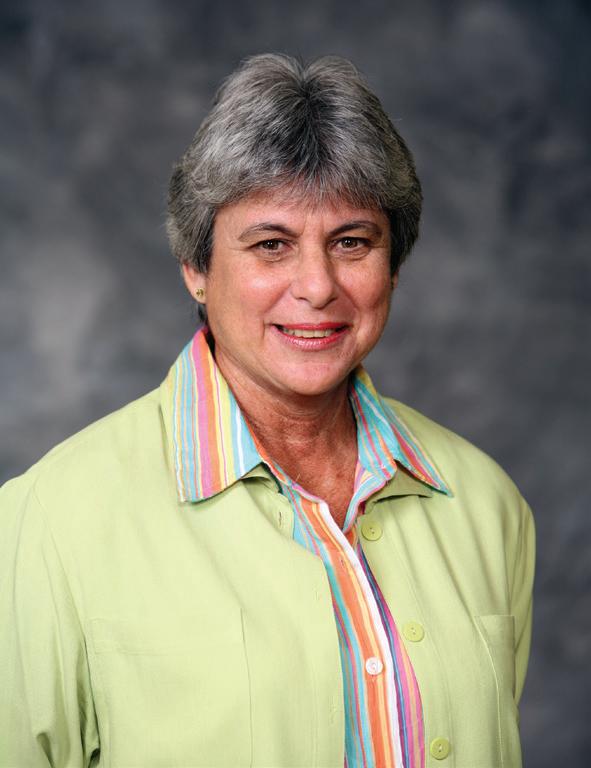
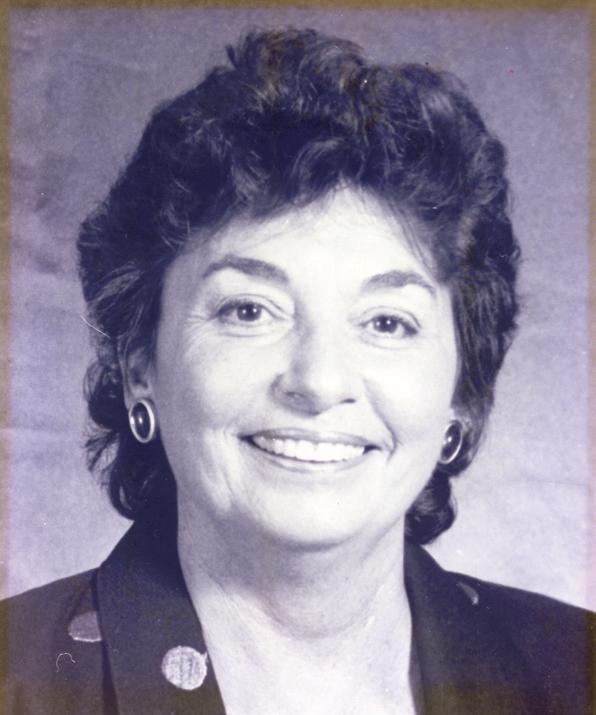
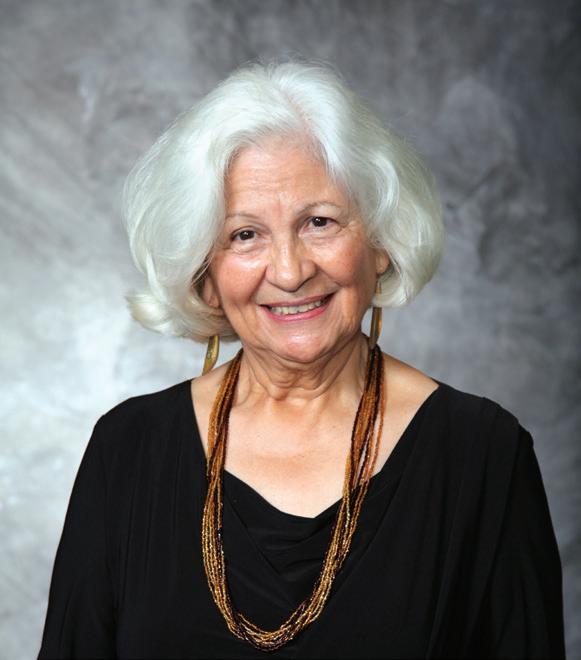
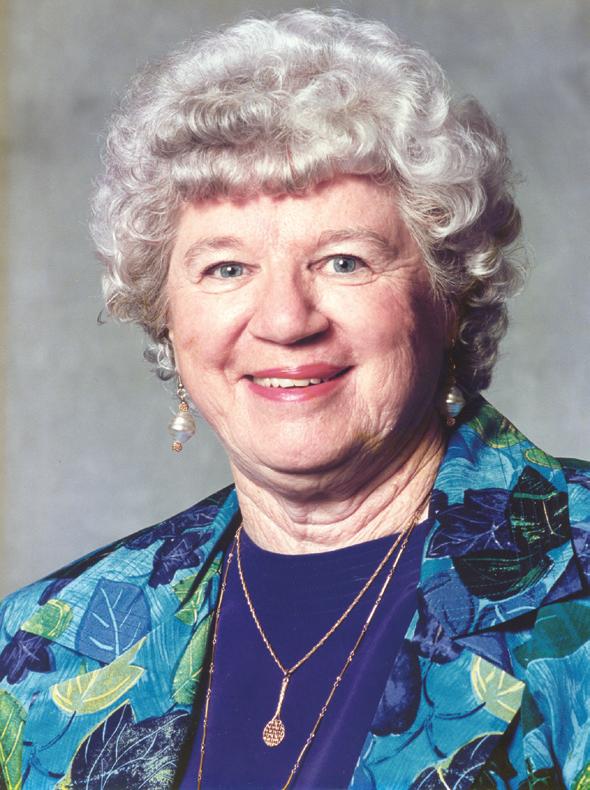
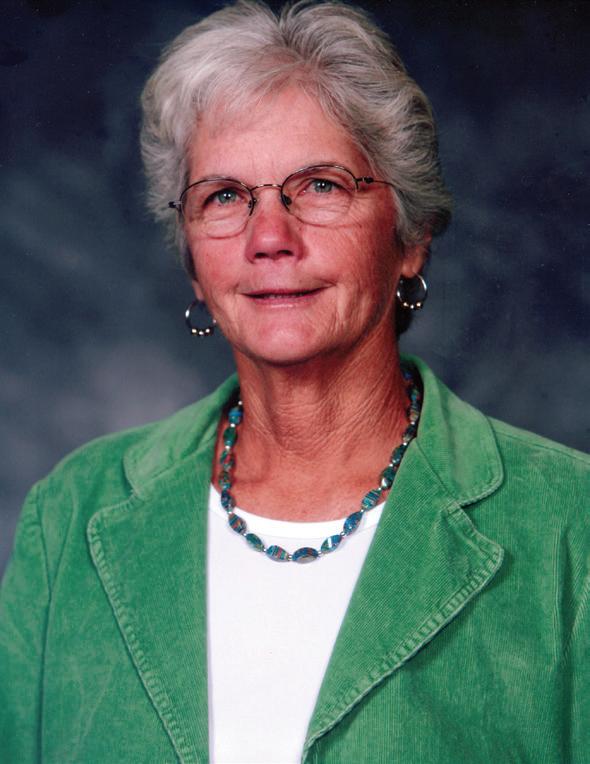
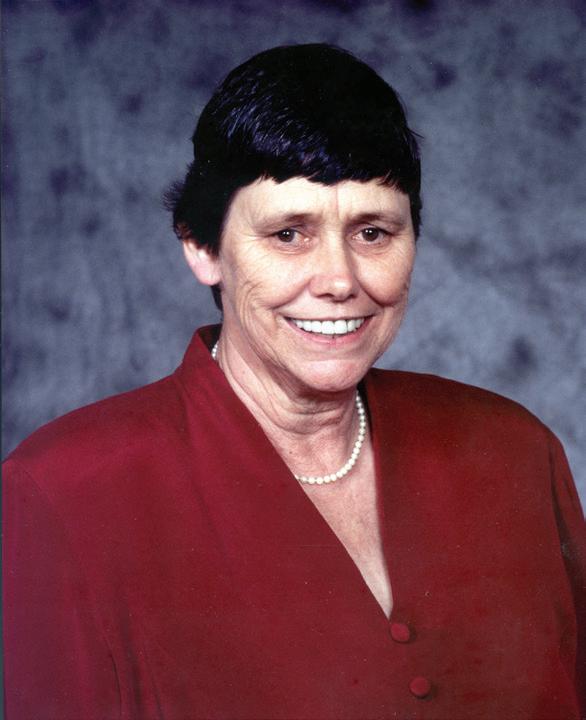
There have been eight women USTA Florida Presidents over the past 75 years.
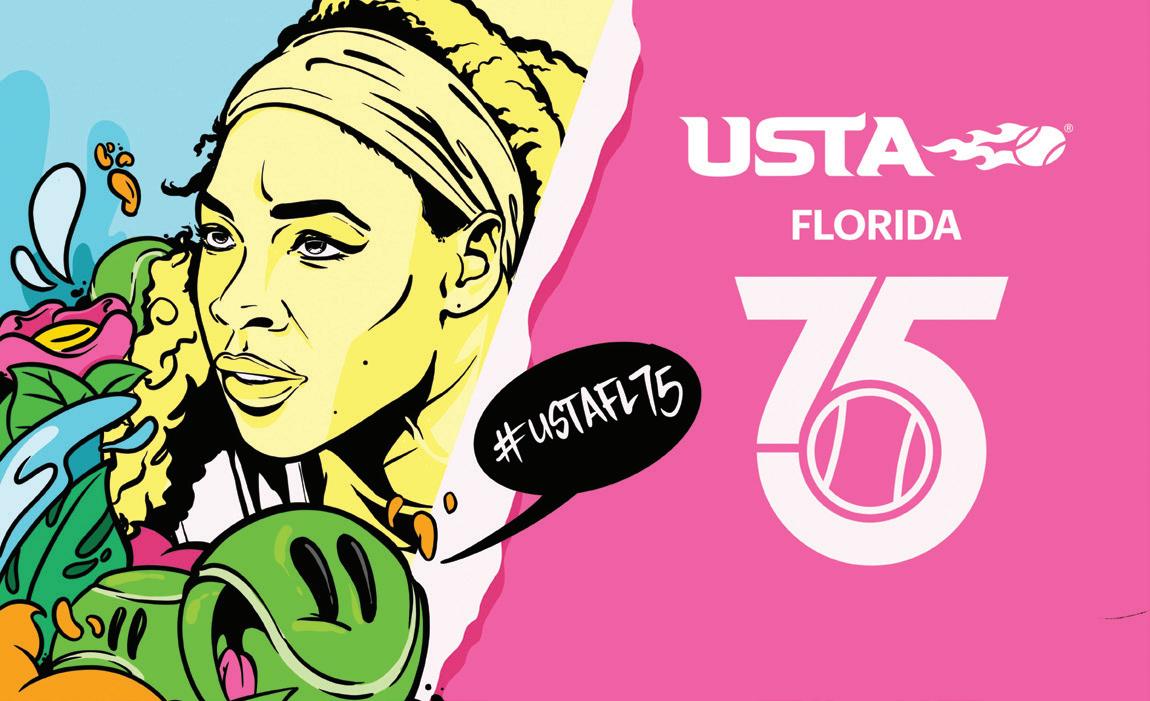
By Jaret Kappelman
The Sunshine State is often referred to as the best place to play tennis. From the competition to the weather, it’s hard to replicate the atmosphere Florida gives its athletes. Through the past 75 years, there have been many tennis legends that represent the state who have had phenomenal careers on the courts and have shaped the landscape of tennis for generations to come.
Mary Joe Fernandez, a Miami native, emerged as one of the most decorated American tennis players of her generation. Getting her start in junior tennis in Florida, Fernandez set an unprecedented streak at the Orange Bowl, winning Girls 12s, 14s, 16s and 18s in consecutive years. When she transitioned to the pros, she continued to make waves. With two Grand Slam titles in doubles, two Olympic gold medals in doubles, and a silver in singles, Fernandez’s career was one to remember.
She credited some of her success to the state of Florida, and how easy it was to get involved with the sport. “My favorite part about tennis in Florida is that it’s so accessible,” she said, “You literally turn left, turn right, look in front and you can find tennis courts.” Her tenacity, versatility, and unwavering commitment to the game has solidified her place among the Florida tennis greats. She was induced into the USTA Florida Hall of Fame in 1999 for her junior and professional playing accomplishments. After her playing career, she coached the US Fed Cup Team from 2008 to 2016, shaping the next generation of Team USA athletes.
Another Florida native, Jim Courier, soared to international success in the late 1980s and early 1990s, capturing four Grand Slam singles titles and reaching the top of the ATP rankings. Courier, having grown up in Florida, said the Florida Tennis Association, now known as USTA Florida, helped him get involved with the sport at a young
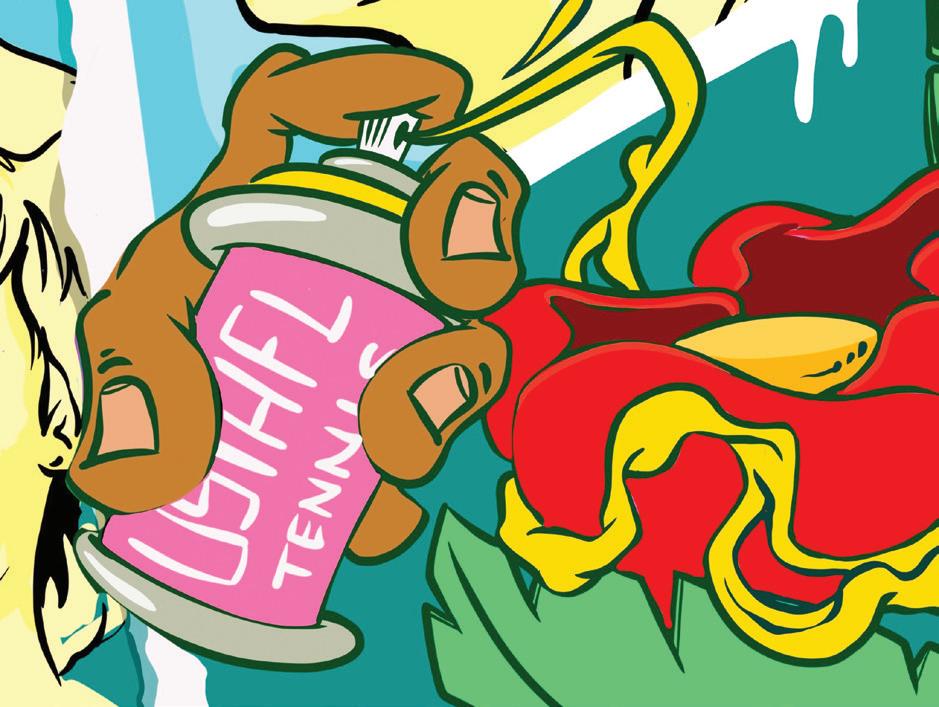
age. “When I grew up in Florida, tennis was a burgeoning sport. A lot of people like my parents enjoyed playing. But we didn’t know that there were tournaments out there and we heard about them through the Florida Tennis Association yearbook,” he recalled. “It would have a list of tournaments on there with phone numbers and addresses and you would call, send in your check, and that’s how you would get into junior tournaments.”
His foundation in Florida tennis helped him become No. 1 in the world. He was known and known for his powerful baseline game and relentless work ethic. Courier’s competitive spirit and mental toughness propelled him to the top of the tennis world, earning him a special place in Florida pro tennis history. He was awarded the USTA Florida Hall of Fame Award in 1999, along with Mary Joe Fernandez and Kathy Rinaldi. After his retirement from the sport, he also gave back to the future generation through his role as US Davis Cup Captain from 2010 to 2018.
Kathy Rinaldi, hailing from Stuart, Florida, made her mark in the tennis world as a young prodigy. She turned professional at 14, in 1981 and became the youngest player to win a match at Wimbledon, which stood for nearly 10 years. Following a successful playing career, reaching World No. 7 and winning three titles, she became a prominent coach. She was named the Captain of the United States Fed Cup team and served in that role for nearly a decade. She claims Florida as a perfect place to develop your game.
“If you can train in Florida, you can train anywhere,” she said. “It’s the people, the passion of the sport that lives in Florida at every level, starting at the grassroots all the way to people I know that have played till they’re 100 years old. It’s that passion, being in sunny Florida, playing tennis, I love it.”
One of the greatest tennis players to ever play the sport, Chris Evert, was born and raised in South Florida.
With 18 Grand Slam singles titles, three more in doubles, and 189 overall titles, Evert’s impact on the sport transcended generations, especially for women in the sport. Chris wasn’t the only Evert to make an impact on Florida tennis, but her whole family played a key role in shaping Florida tennis to be what it is today and inspiring generations of players. Chris’s father, Jimmy was a prominent coach in Florida and her siblings John, Jeanne and Clare all played tennis and won titles at the prestigious Junior Orange Bowl.
Brian Gottfried, a Miami Beach native, carved out a successful career as both a player and a coach. With 25 singles titles and 54 doubles titles to his name, Gottfried’s versatile game earned him accolades on the ATP tour and beyond. As a coach, he has mentored some of the sport’s brightest talents at the Bollettieri Tennis Program in Bradenton. Gottfried was induced into the USTA Florida Hall of Fame in 1985.
Mardy Fish enjoyed a successful career on the ATP tour, earning six singles titles and reaching a career-high ranking of World No. 7. Being in Florida was a huge asset for him as he always had good people to train against. “The section of Florida is by far the best of any in the country, in terms of competition,” he said. This year, he had the courts he and his sister played on in Vero Beach, Florida dedicated in his name at Riverside Racquet Complex. He continues to give back to the community that gave so much to him, through his Children’s Foundation. Fish was inducted into the USTA Florida Hall of Fame this year for his playing accomplishments and his contributions to Florida tennis.
At the 2024 Miami Open, local artist, SURGE, created a mural honoring the legacies of past Florida champions Serena, Fernandez, Evert, Fish, Courier, and Roddick. Collectively, these tennis legends along with many more who have come through Florida have paved the way for future generations to come.

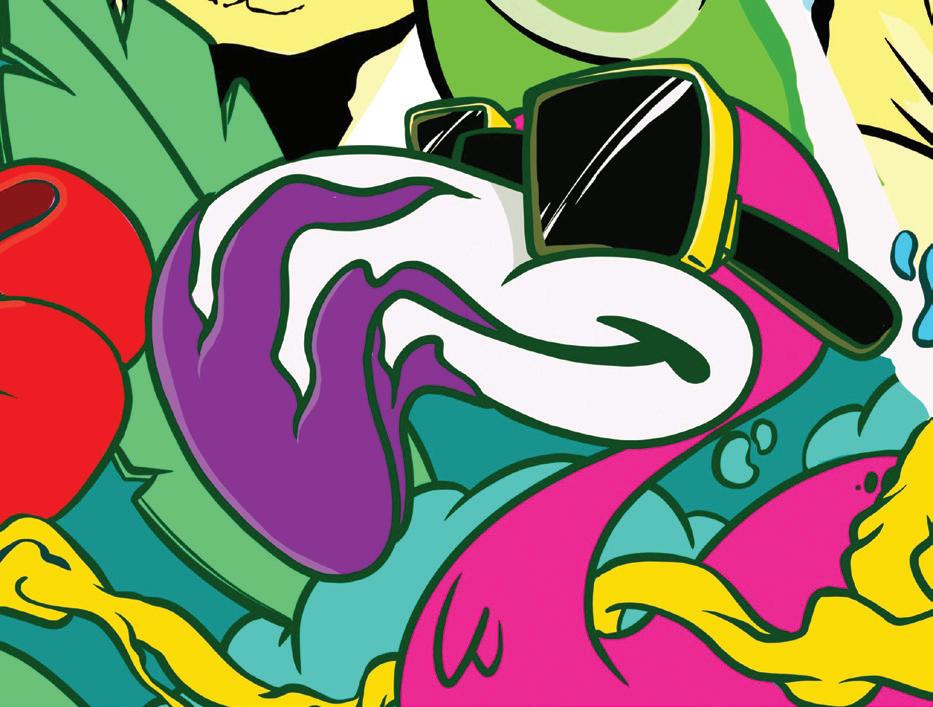
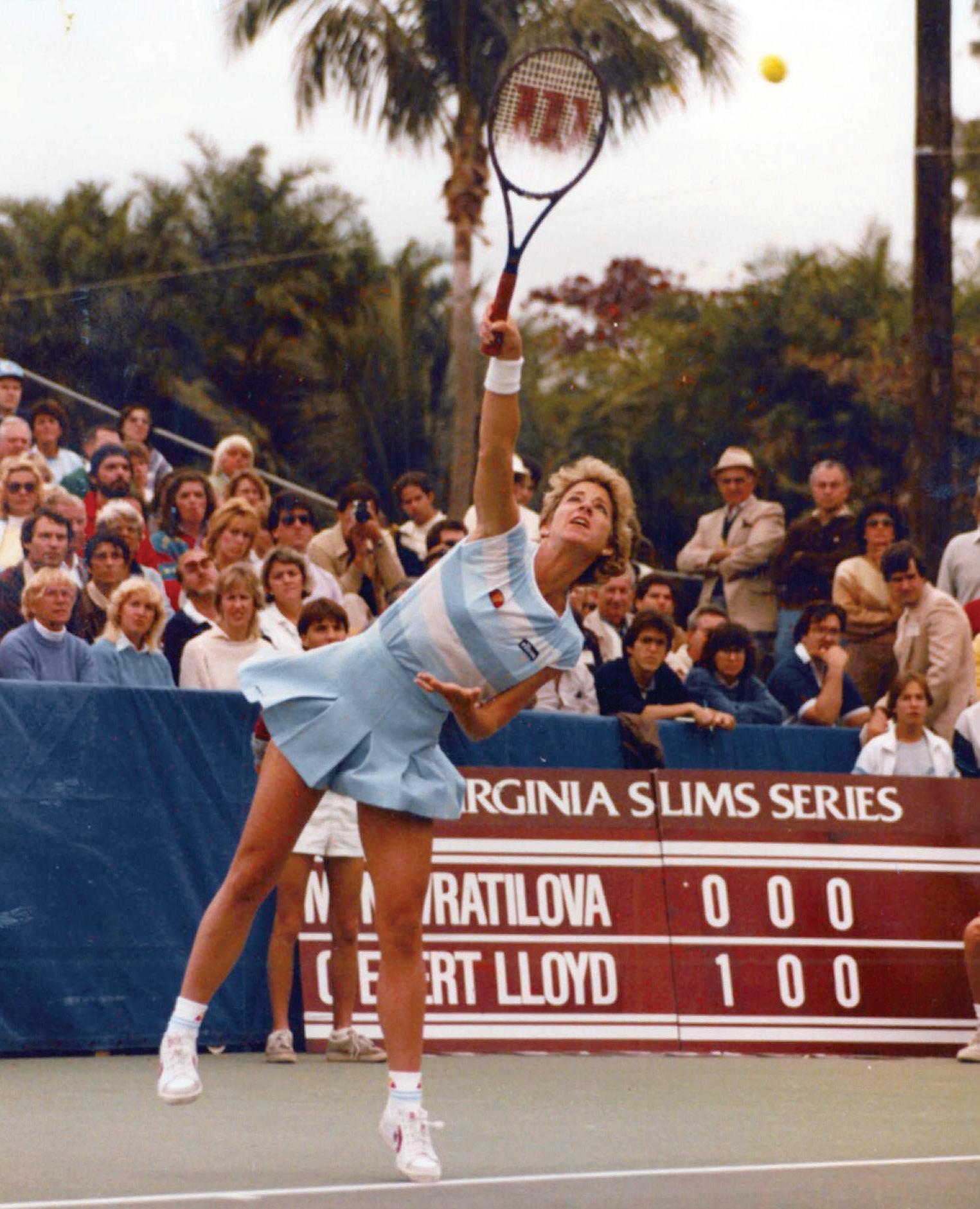
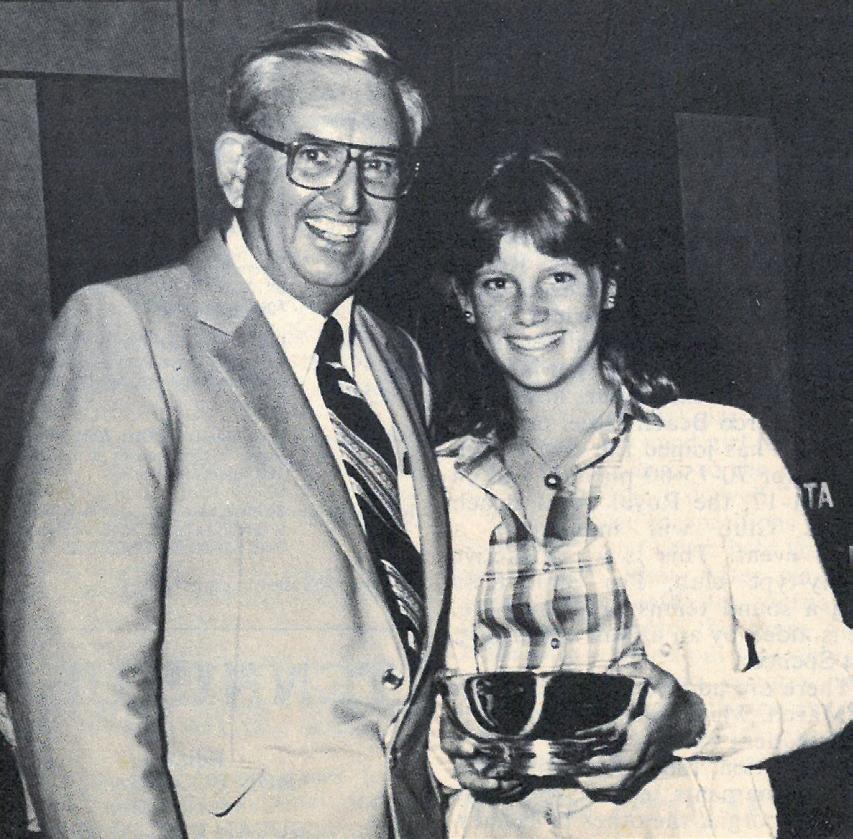

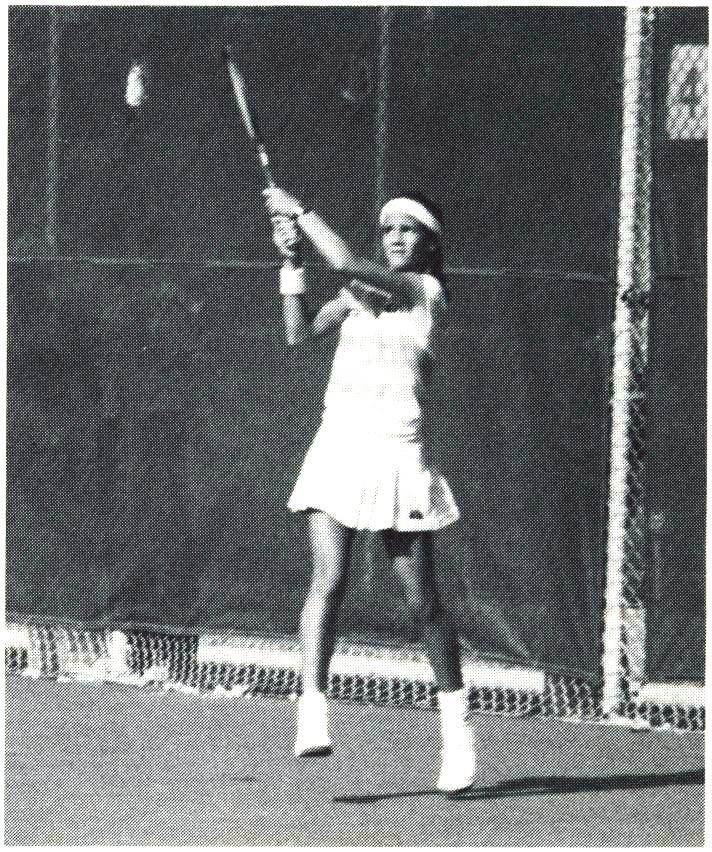
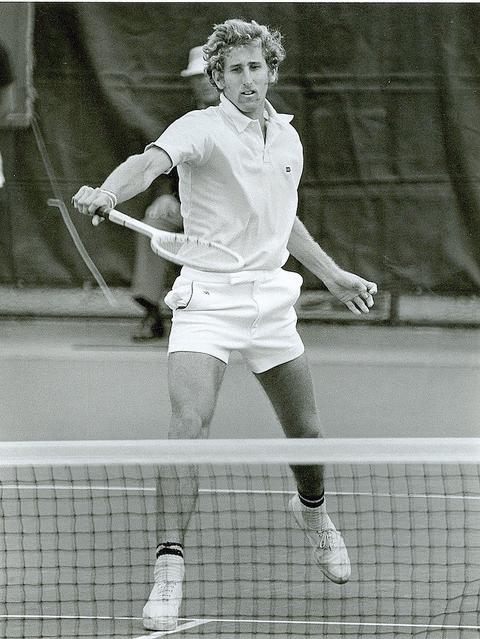
By Jaret Kappelman
Throughout the past 75 years of USTA Florida, there have been numerous volunteers, facilities, organizations, directors, and more that have gone above and beyond to push the game forward in the state. USTA Florida has been recognizing their work throughout time with various awards, and many iconic Florida tennis figures have been honored.
USTA Florida is proud to honor individuals and organizations who have made significant contributions to the growth and development of tennis in the Sunshine State. Through a series of prestigious awards, USTA Florida recognizes excellence, dedication, and passion for the sport across various categories.
The most prestigious of all USTA Florida awards is being inducted into the hall of fame. This award recognizes members, players and nonmembers, whose contributions to USTA Florida and achievements for many years are worthy of the highest recognition in one of two categories: Administrative or Player. The first class was inducted in 1981, featuring Chris Evert, Frank Froehlind III, Doris Hart, and three of the Founding Fathers, Gardnar Mulloy, Edward A. Turville, Clarence Varner. Edward Herr, the final Founding Father, was inducted the following year.
As of July 2024, there are 72 members of the USTA Florida Hall of Fame, with a wide range of players and those who have influenced the game on the organization side. To view a full list of USTA Florida Hall of Famers, visit ustaflorida.com/ourhistory.
USTA Florida recognizes other contributors to the sport in the state through many other Section awards.
The Edward A. Turville President’s Award is for individuals, organizations, or events that have made exceptional contributions to the advancement of tennis in Florida during the term of the
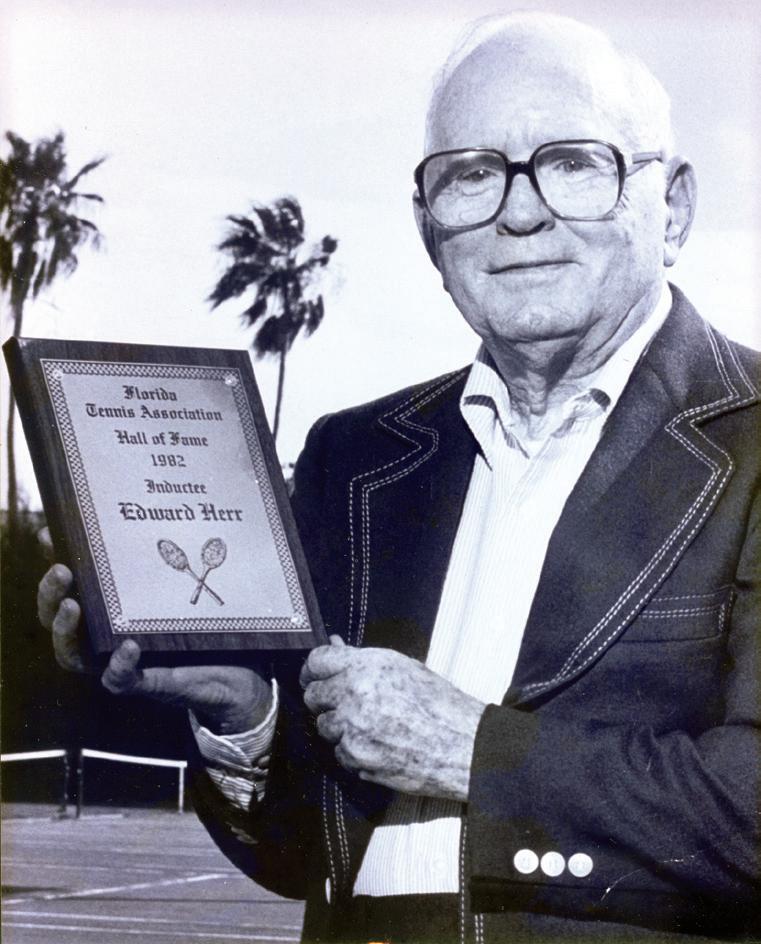
current president. This award celebrates those who have positively impacted the quality and accessibility of tennis in the state, even if they are not directly affiliated with USTA Florida. Some notable past winners include the Research Is The Answer (RITA) Foundation, MaliVai Washington, Jimmy Evert, and others.
The Merit Award is presented to individuals who have made a lasting impact on amateur tennis in Florida through their dedication, cooperation, and participation. Previous winners have left a profound legacy in the tennis community, and this award serves as a testament to their invaluable contributions. This award started when the Florida Lawn Tennis Assocation was created in 1949. To this date, there have been 125 Merit Award Honorees.
The Outstanding Section Volunteer Award acknowledges USTA Florida volunteers who have made significant contributions to tennis in the state beyond their local communities. These individuals exemplify leadership, dedication, and a genuine passion for the game, inspiring others with their commitment to tennis. This award was created in 1992 and there have been many great volunteers that have been recognized including current USTA Florida President, Phil Girardi, Nancy Horowitz, Judy Foster, the late Terry Thrash, and others.
Additionally, the Outstanding Tennis Family Award recognizes families who have played a pivotal role in promoting tennis at all levels of participation in Florida. Their collective efforts have helped foster a love for the sport and have made a meaningful impact on the tennis community. Winners of this award have a chance to be honored nationally, if the national committee picks them out of the other section nominations in the country. USTA Florida has honored families since 1966 and recognizes that tennis is often a family affair.
In addition to individual awards, USTA Florida
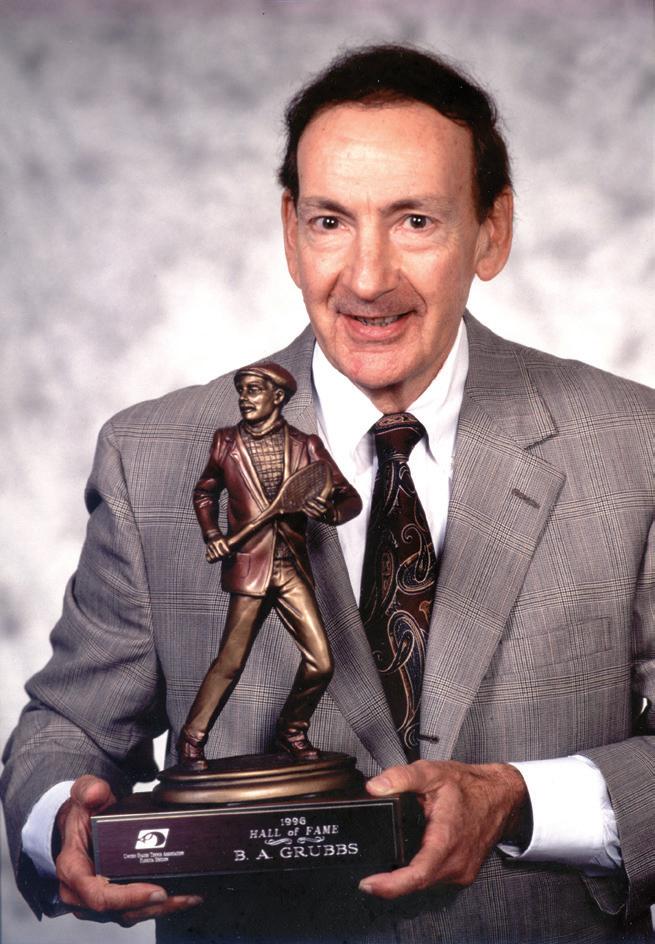
also honors outstanding Community and Competitive Tennis. Community Tennis Awards recognize programs, volunteers, organizations, and others that have made significant contributions to promoting tennis at the grassroots level, while Competitive Tennis Awards celebrate excellence in tournament, League, and other forms of competition.
On years where USTA Florida doesn’t host an annual meeting, the organization presents local awards, broken into Winter/Spring and Summer/ Fall.
The Winter/Spring Awards include the Champion of Tennis Award, which celebrates individuals who have made significant contributions to the growth and promotion of tennis in Florida, and the Jimmy Gantt Memorial Award, named in honor of J. Jervey Gantt, late tennis coach and mentor. This award recognizes a junior tennis player throughout the state who has overcome a physical impairment or injury and continues to compete to the best of his/her ability and exhibits strong character and sportsmanship.
The Summer/Fall Awards include the Exceptional Player Award, recognizing outstanding individual achievements on the court, and the Outstanding Tournament Director Award, honoring those who have demonstrated excellence in organizing and managing tennis tournaments.
These prestigious awards reflect USTA Florida’s commitment to honoring and celebrating the achievements of individuals and organizations who have made lasting contributions to the sport of tennis in the state. Through their dedication and passion, these awardees inspire others and help shape the future of tennis in Florida.
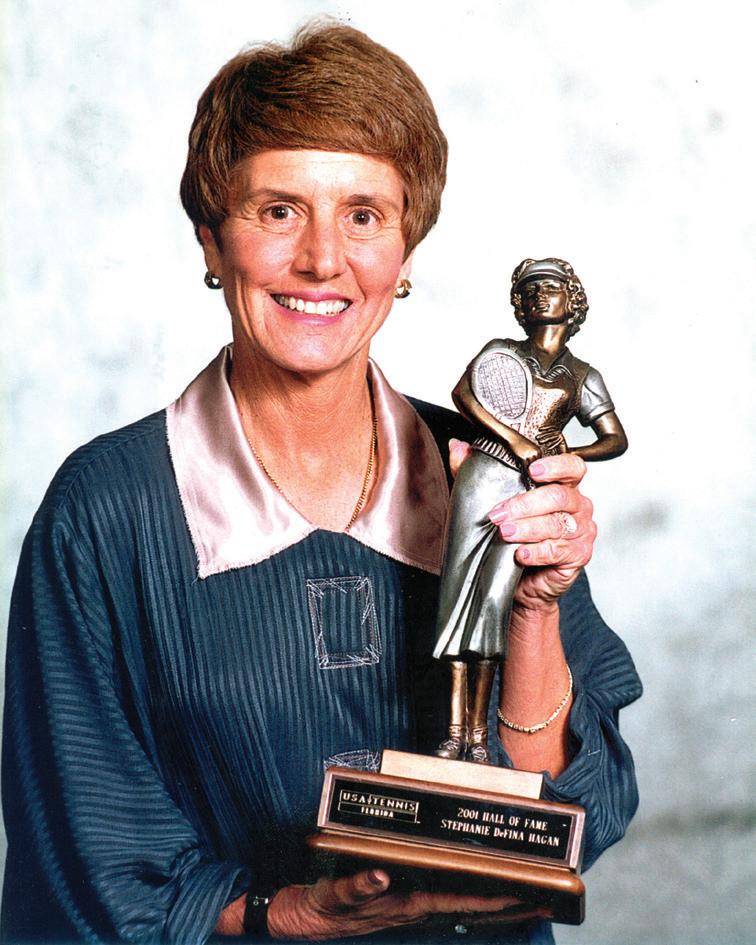
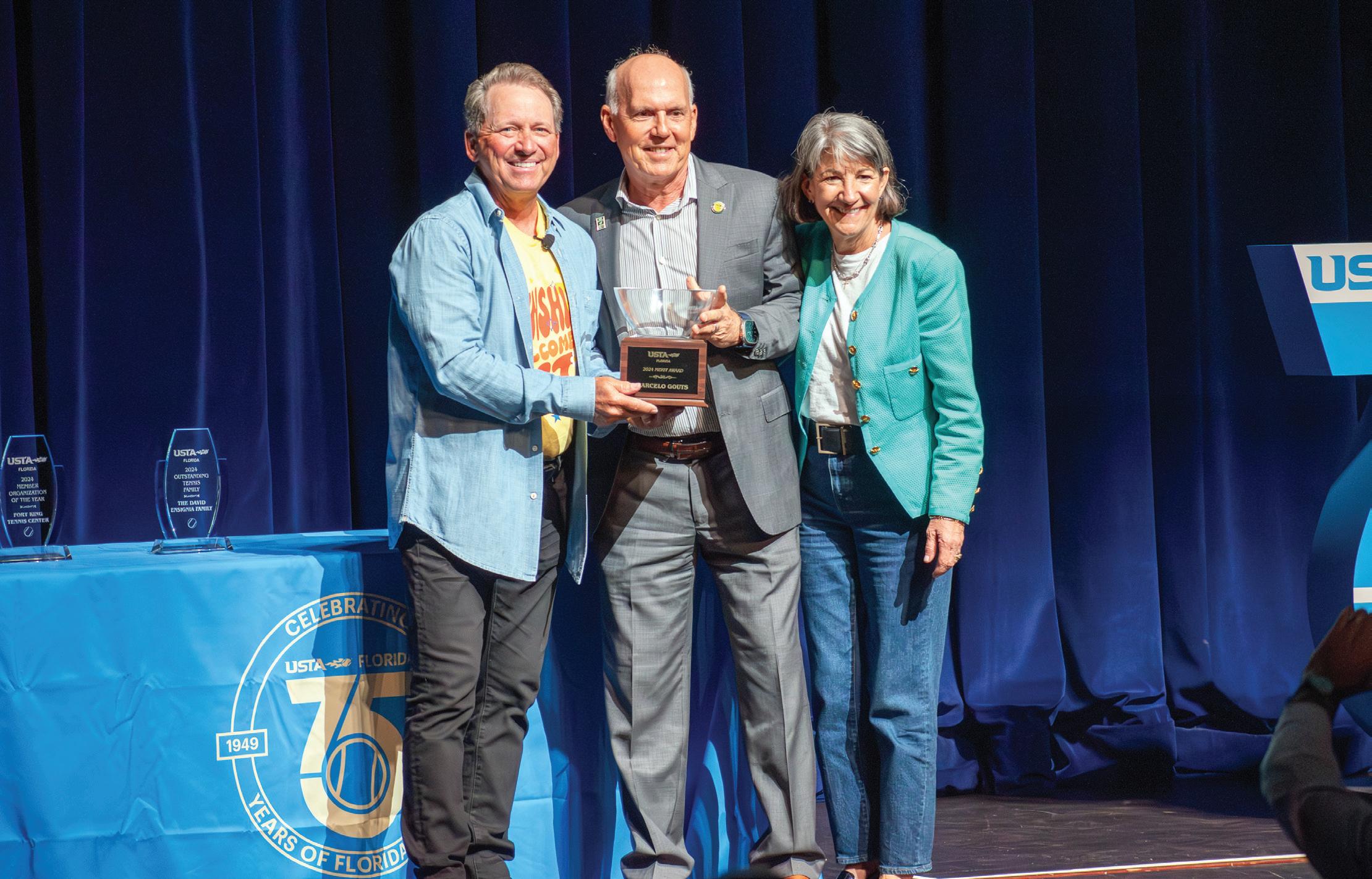
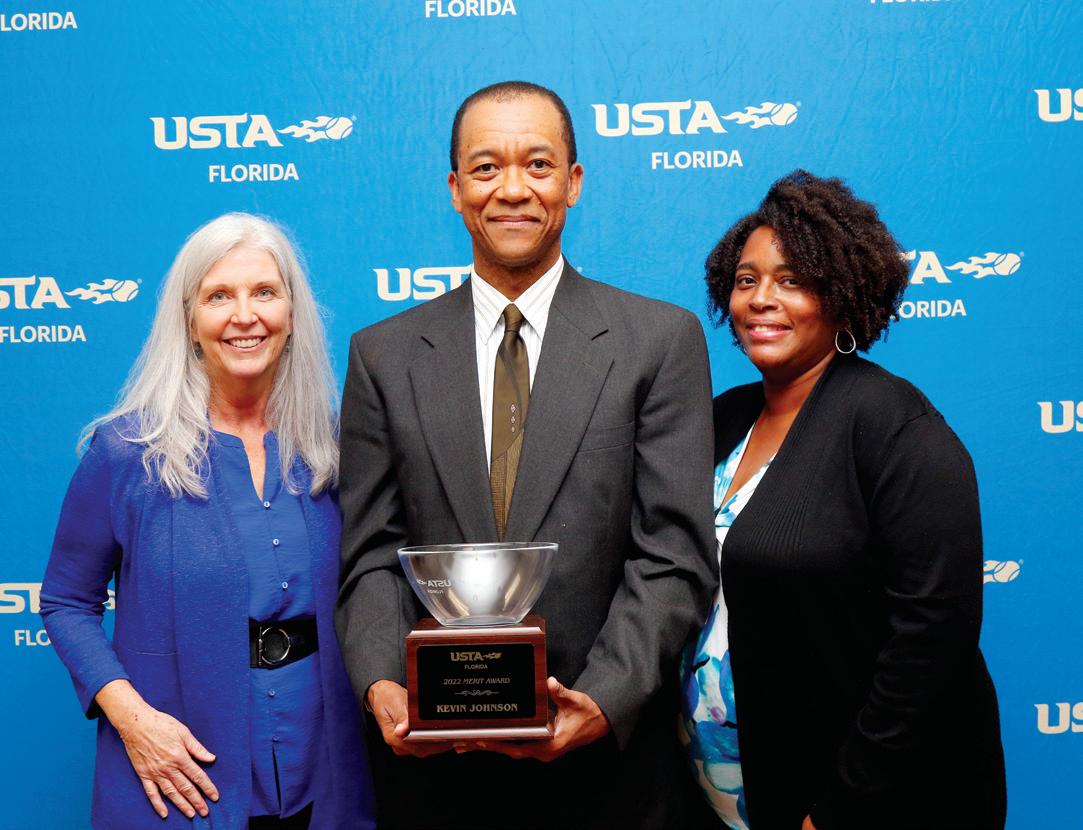
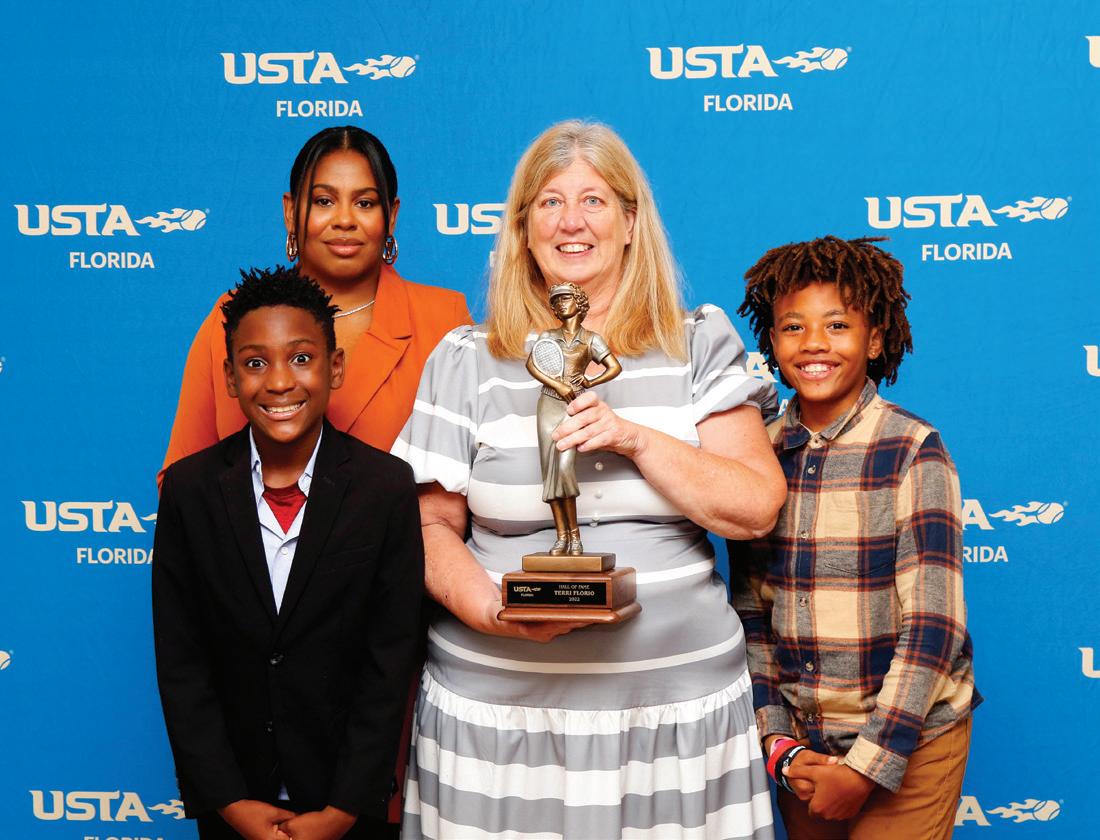
USTA Florida has honored many people, organizations, and facilities throughout the past 75 years.
By Jaret Kappelman
In a concerted effort to promote inclusivity within the tennis community, USTA Florida has spearheaded a range of initiatives aimed at breaking down barriers, expanding access, and celebrating the diversity of individuals who make up the sport. From empowering women in the sport to championing adaptive and wheelchair tennis, each initiative reflects USTA Florida’s commitment to ensuring that tennis truly is a sport for all.
One of USTA Florida’s flagship diversity initiatives is the Women in Tennis initiative, which seeks to empower and support women and girls at all levels of the sport. Women continue to be underrepresented in various aspects of tennis, from coaching and officiating to leadership roles within organizations. Despite the significant achievements and contributions of female players throughout history, gender disparities exist, impacting opportunities for women and girls in the sport. Limited access to resources, unequal pay, and social stereotypes further perpetuates the issue, hurting the advancement of women in tennis.
Efforts to address these disparities, such as the Women in Tennis initiative by USTA Florida, aim to empower women, promote gender equity, and create a more inclusive and diverse tennis community that values and supports female participation at all levels. During Women’s History Month in 2024, USTA Florida revealed research from Clarity & Writing Research, which helped shed light on the underrepresentation. The data showed, that despite comprising 39 percent of tennis players in Florida, women only make up 25 percent of certified coaches. It also showed how there are significantly more men in leadership roles in the sports industry than women, which is discouraging to young girls who are interested in making a difference in the industry.
To address these disparities, USTA Florida expanded its Women in Tennis initiative, aiming to increase play opportunities, offer new all-women coach and speaker training programs, and integrate equity principles across all its initiatives and activities. Through a variety of programs, events, and resources, USTA Florida aims to increase female participation in tennis, both on and off the court.
Another key component of USTA Florida’s diversity efforts is its commitment to wheelchair tennis. The dynamic and fast-growing sport offers individuals with physical disabilities the opportunity to compete and excel on the tennis court. Through partnerships with local organizations and facilities, such as Wounded Warriors, Brooks Rehab and its Love to Roll program, USTA Florida provides resources, support, and opportunities to help grow the wheelchair tennis community and increase access to the sport. The organization’s Community Coach program also provides wheelchair coach training to ensure there are coaches equipped to help welcome
and retain wheelchair athletes into the sport.
In addition to wheelchair tennis, USTA Florida is also dedicated to promoting adaptive tennis, which encompasses a range of modifications and accommodations to make tennis accessible to individuals with varying physical, sensory, and cognitive disabilities. From specialized equipment and court configurations to adaptive coaching techniques and programs, USTA Florida, alongside partners such as Love Serving Autism and Special Olympics, have been working tirelessly to ensure that everyone has the opportunity to experience the joy of tennis, regardless of their physical or cognitive abilities. USTA Florida has partnered with the Special Olympics since 2018 to host the Special Olympics State Games and has partnered with Love Serving Autism since 2017 to promote a sport that serves all.
Recognizing the growing diversity of Florida’s population, USTA Florida has reached out to Hispanic communities and increased participation in tennis through its Tenis Para Todos initiative. Tenis Para Todos was launched in 2013 to bring tennis to more Hispanic families in across Central and South Florida. This initiative included education through workshops, coaching trainings, tennis festivals, events, grants, and more.
USTA Florida has been able to introduce tennis to Hispanic youth and families, providing access to lessons, clinics, and recreational programs tailored to their needs and interests.
The diverse community that represents Florida tennis is well represented through the Faces of Florida Tennis series. Launched in 2023 as part of its ongoing commitment to celebrating diversity and inclusivity, Faces of Florida Tennis features a series of profiles highlighting individuals, organizations, and others, who are from diverse backgrounds and are making significant contributions to the sport. From players and coaches to volunteers and facility directors, each spotlight showcases the unique stories and experiences of individuals who embody the spirit of tennis in Florida. By sharing these stories, USTA Florida aims to inspire and empower others to get involved in tennis, regardless of their background or circumstances.
USTA Florida’s diversity initiatives reflect its unwavering commitment to ensuring that tennis remains a sport for all. From empowering women and promoting adaptive tennis to reaching out to Hispanic communities and celebrating the diverse individuals who make up the Florida tennis community, USTA Florida is dedicated to creating a more inclusive and welcoming environment for all participants. Through these initiatives, the organization is determined to continue breaking down barriers, expand access, and foster a love for tennis that transcends beyond the tennis courts.

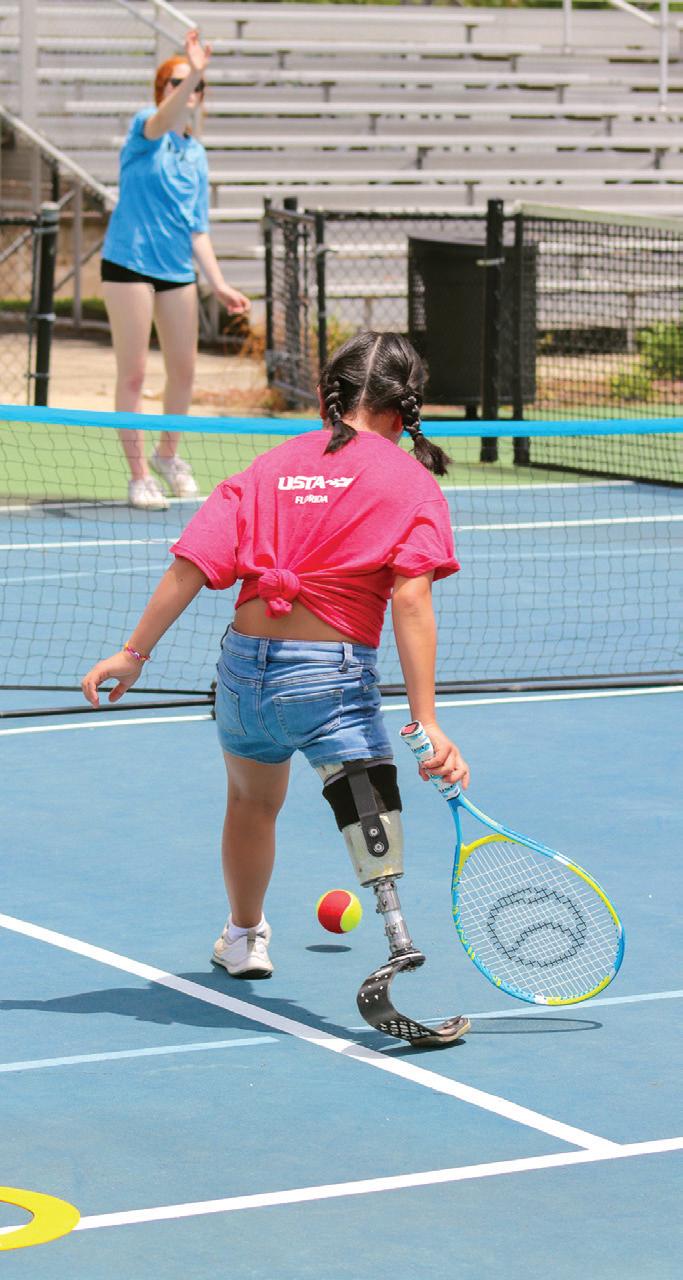
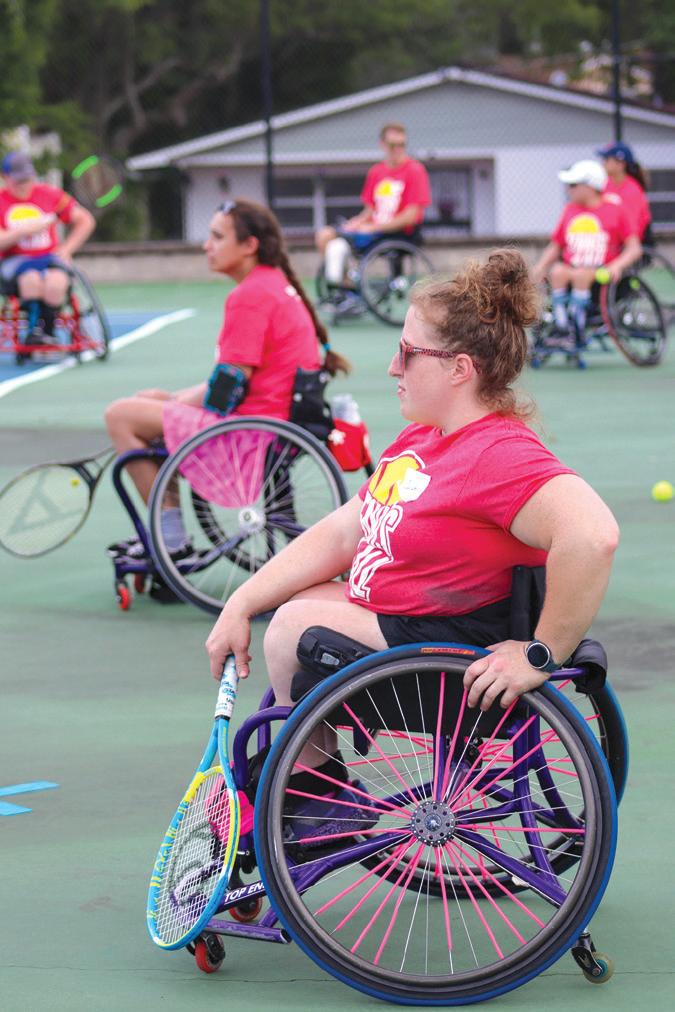
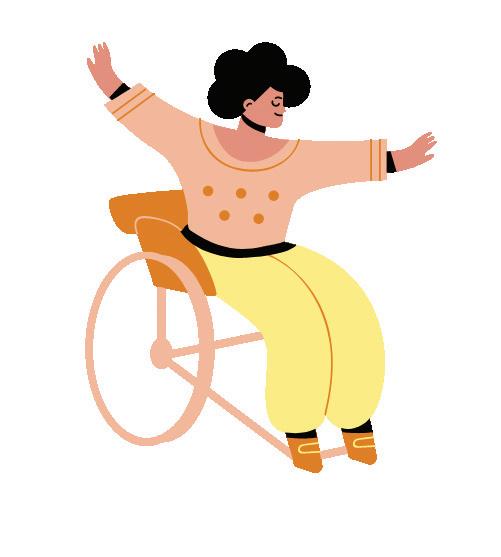
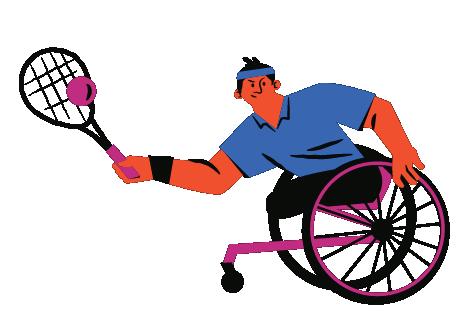
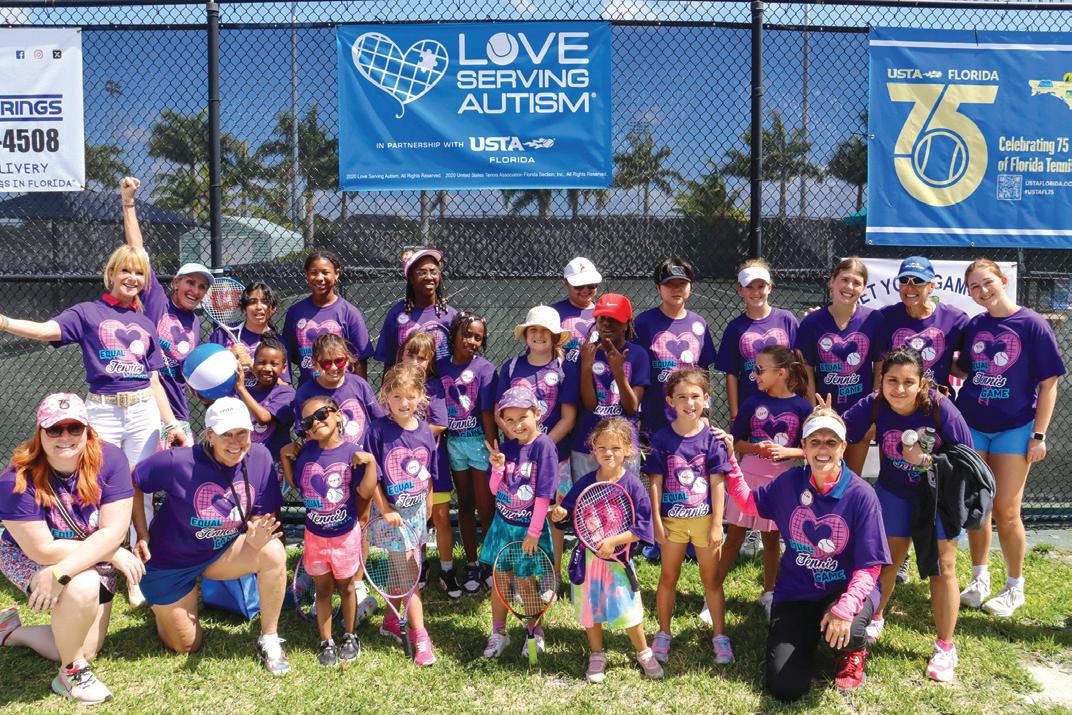
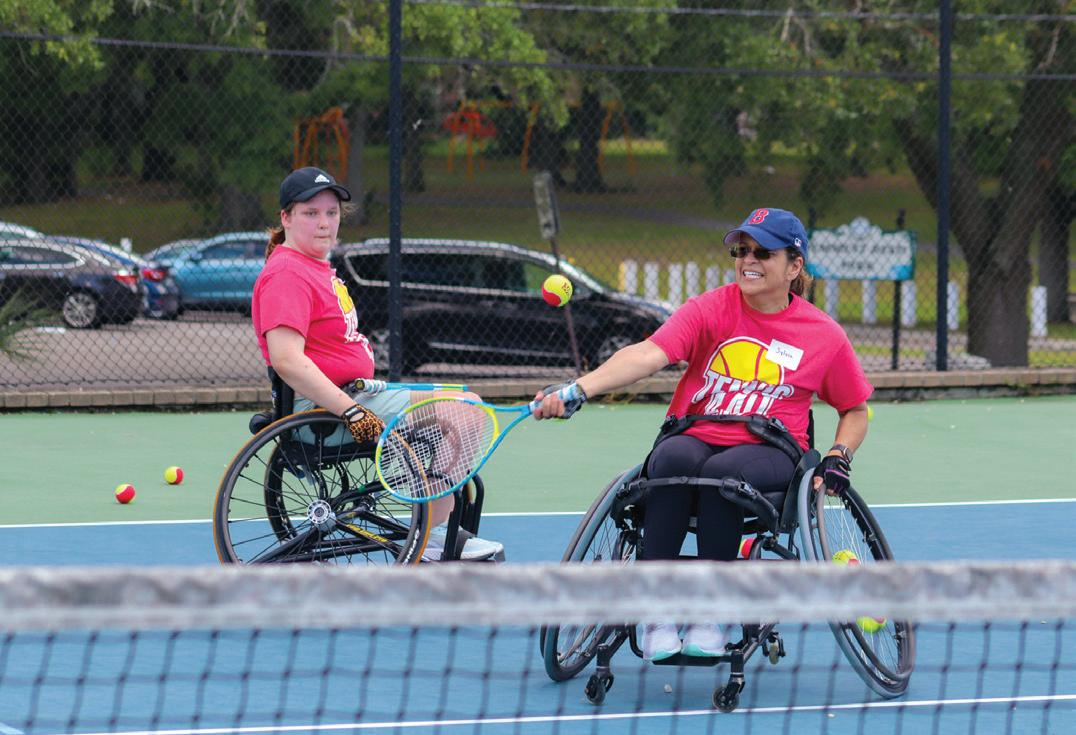
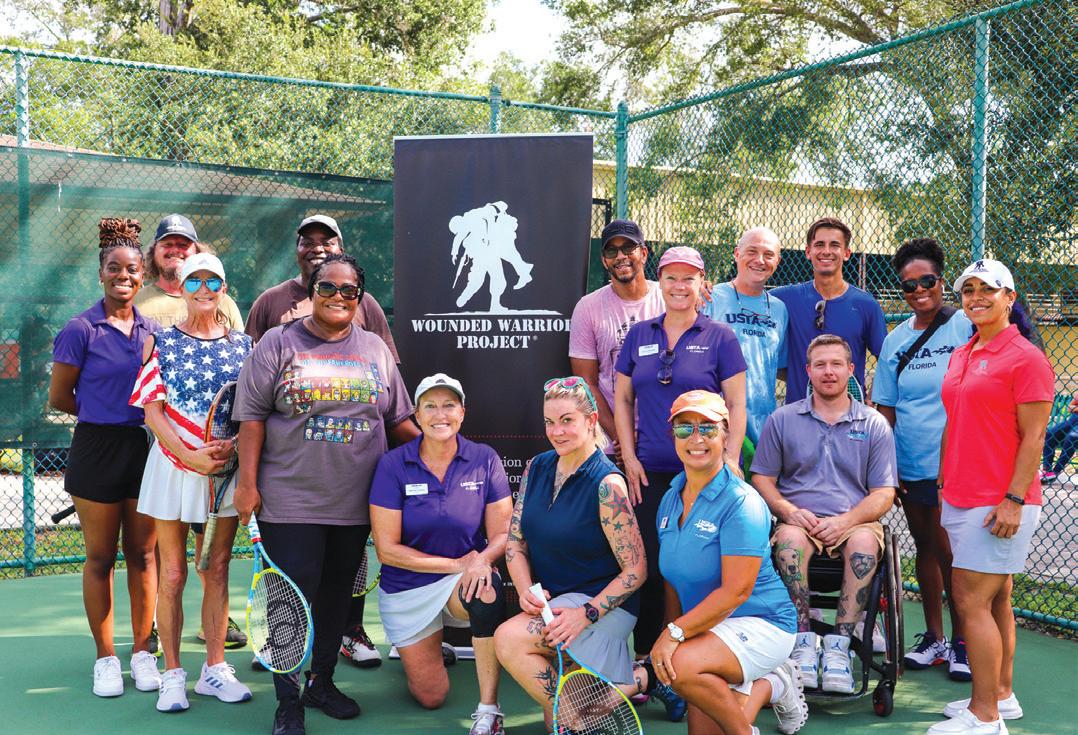
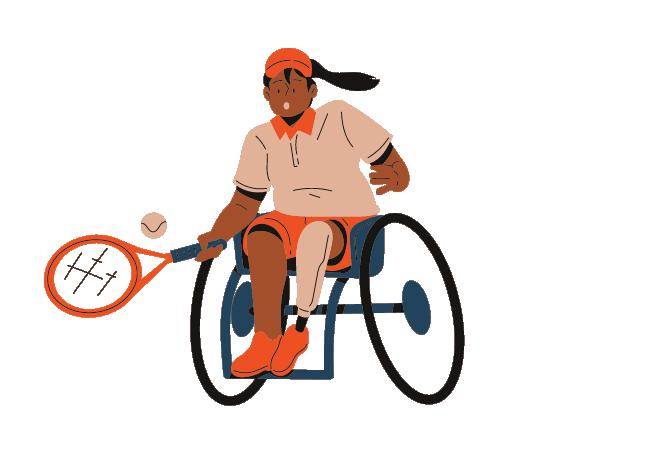
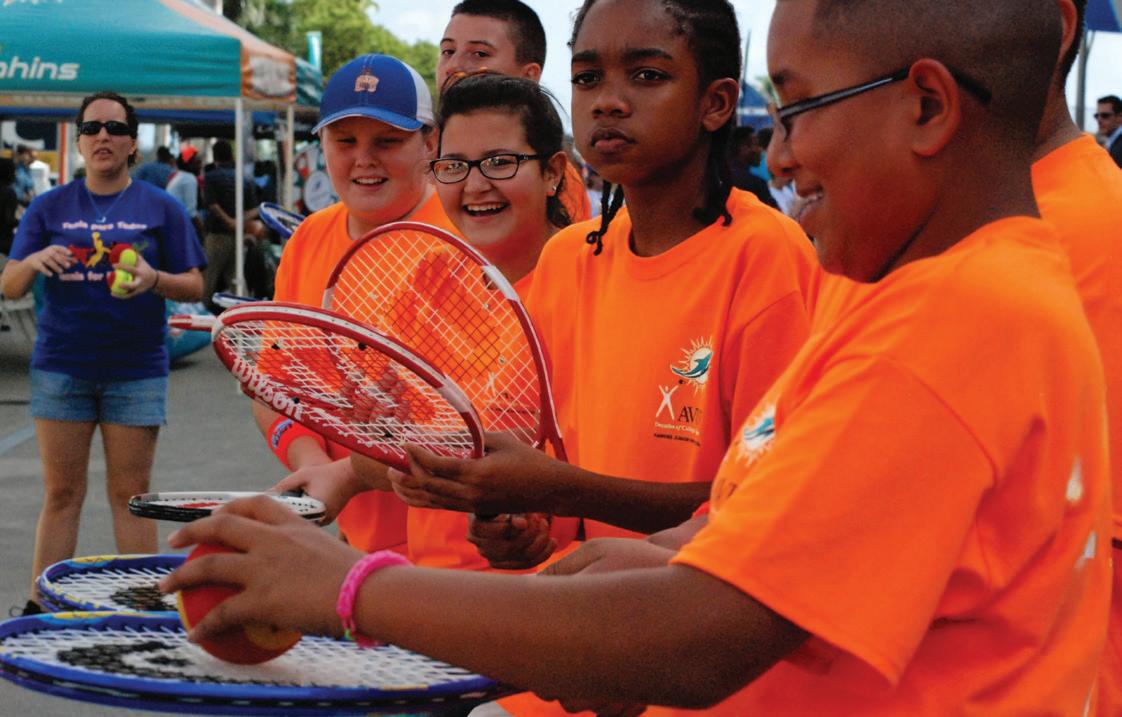
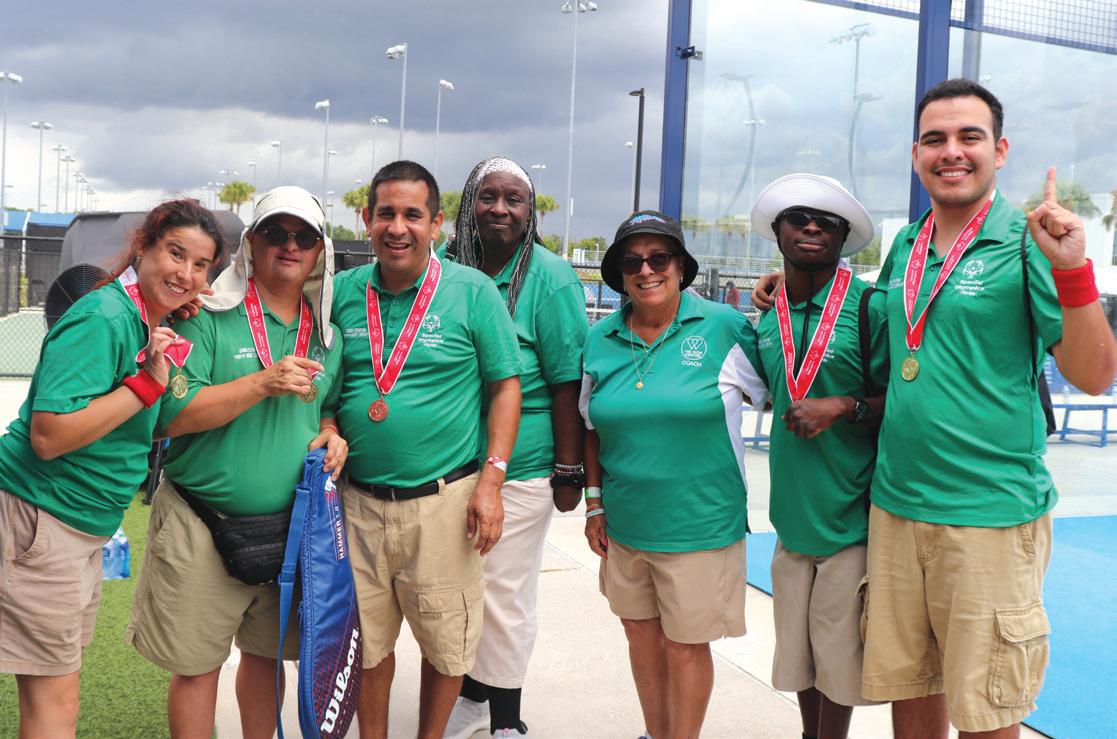
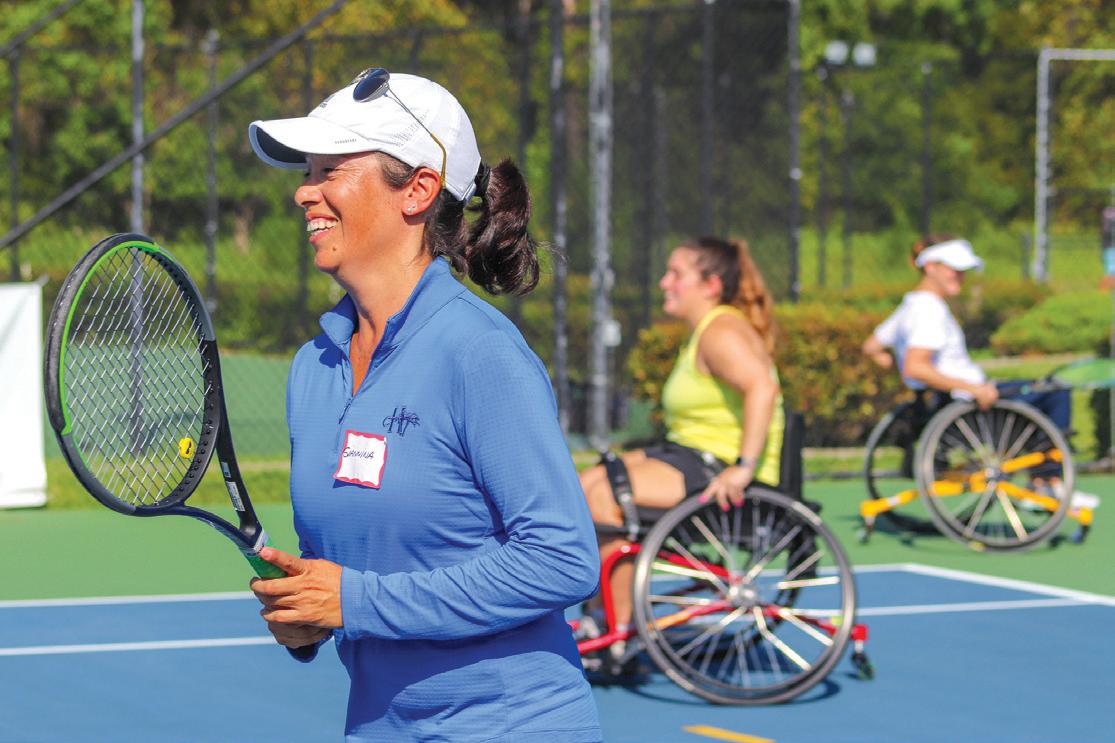
By Jaret Kappelman
While USTA Florida celebrates 75 years of serving the state, the Section’s Foundation is only in its 21st year assisting the community. In 2004, the USTA Florida Foundation emerged with a clear mission: to change lives through tennis. The foundation offers financial support to organizations that help people of all ages and abilities improve their health and quality of life through the great game of tennis.
In 2008, the foundation, behind the leadership of the late Linda Curtis, as well as former USTA Florida Presidents and Foundation Presidents, Jean Mills and Celia Rehm, went to Tallahassee to advocate for the Play Tennis License Plate. This would be passed by the state legislature, where 90% of all proceeds are poured back into Florida tennis.
Since its creation in 2008, more than 4,000 plates have been purchased, resulting in over $1 million being disbursed back into communities across the state.
Over the years, the USTA Florida Foundation has been committed to expanding access to tennis for all Floridians, regardless of age, background, or ability. Through its grant programs, the Foundation has provided crucial financial support to numerous organizations and programs dedicated to growing the sport at the local level.
Each year, the foundation opens its Grant Cycle giving organizations the opportunity to apply and receive funding. These grants have supported the purchase of equipment, the operation of programs, wheelchair tennis, and the rebuilding of the sport across the state.
“Through this generosity, we were able to have racquets for juniors who otherwise would
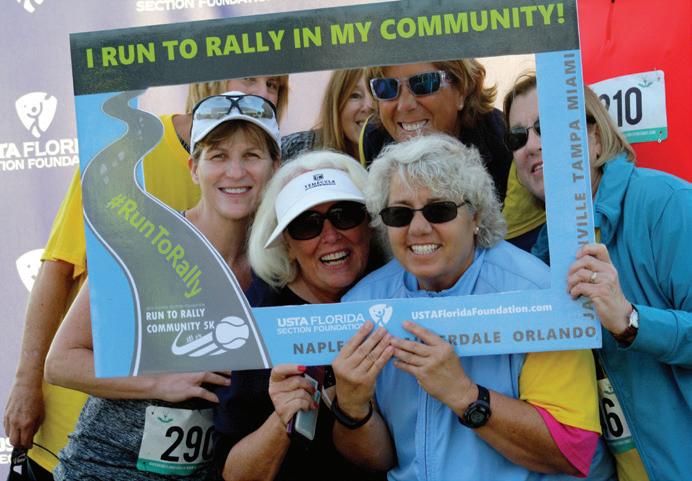

not have been able to afford these to take clinics and lessons,” said a spokesperson from the Williams Family YMCA Tennis, an organization that was awarded grant monies through the Foundation. “This was a great way to get new juniors to learn the sport of tennis.”
The MaliVai Washington Youth Foundation has been providing kids with Tennis-n-Tutoring since 1996 thanks to donations and grants received. “Because of supporters like you [USTA Florida Foundation], we will continue providing vital youth development programs and transforming lives for decades to come,” they said.
In 2022, the USTA Florida Foundation launched the Hurricane Relief Fund, to help those tennis facilities that were left devastated from hurricanes that came through the state. Over the course of a year, more than $466,000 was committed to help rebuild tennis.
Beachview Tennis Club was one of numerous facilities impacted by the 2022 hurricane season and received a relief grant. This assisted in rebuilding its 5 clay courts, pro shop, and other facility amenities. “Thanks to the USTA Florida Foundation, Beachview was able to bring all of these amenities back to the island,” said Toni Halski, owner of the tennis club. “For that I am forever grateful.”
The USTA Florida Foundation has been instrumental in supporting all aspects of tennis, whether programs, organizations, or facilities, they are there to lend a helping hand. By providing funding and resources, the foundation has helped ensure that tennis is accessible to everyone, regardless of financial limitations.
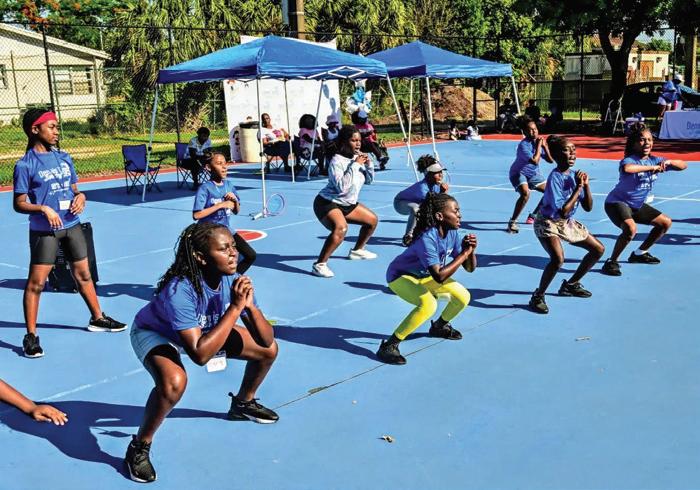

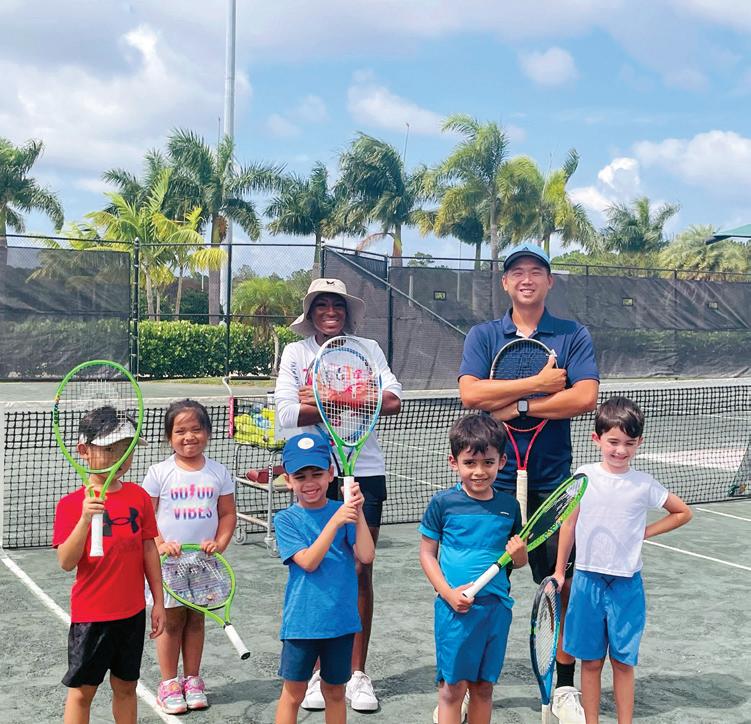


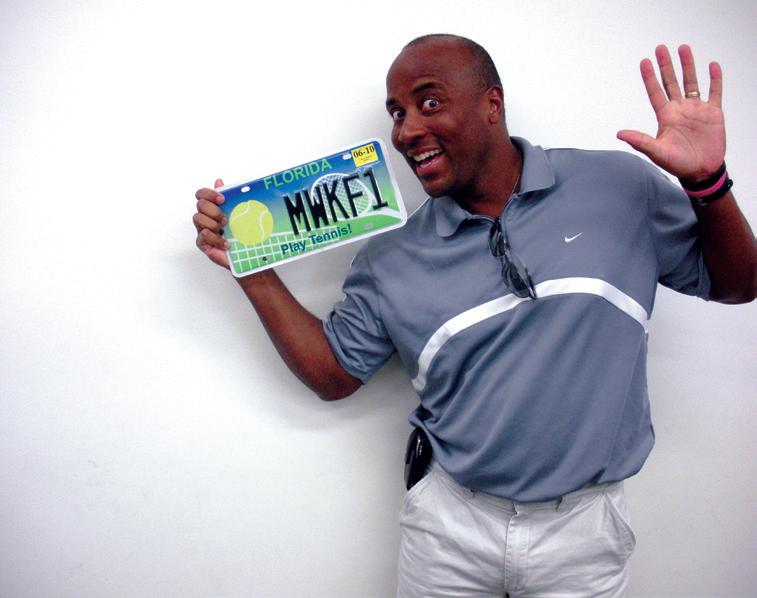

By Laura Bowen
I started my career 26 years ago as a writer and editor in the real estate and finance industry. As a staff reporter at the Mortgage Bankers Association of America, I found it almost overwhelming the amount of data and information available on almost every aspect of the market and the business I covered. When I joined the tennis industry in 2011, I was surprised to find how little our markets and business were researched, analyzed and reported on. We were often making decisions based on opinion or limited information that could not be cross-referenced or compared.
Since 2019, USTA Florida has been working diligently to collect data on our programs and ecosystem in a centralized space and analyze it for real business insights. While we don’t have as much information as we would like on facilities and community programs, we have enough quality information to release our first-ever State of Florida Tennis Report. The findings in this initial report are worthwhile in our efforts to advocate for tennis, and they set an important baseline for us to build upon in future years.
First and foremost, the census data in the report tells us that Florida’s population is growing at an unprecedented rate. According to recently recent data from the U.S. Census Bureau, Florida has four of the nation’s top five fastestgrowing metropolitan statistical areas and three of the top 10 that gained the largest number of people from 2022 to 2023.
A deeper look at county growth between 2020 and 2023 shows where municipalities are likely feeling pressure to improve or add infrastructure. It’s important to consider both percentage change and total population change. While the panhandle of Florida is often overlooked, Escambia has both high population density and growth. Okaloosa-Walton-Bay counties are also seeing rapid growth as a percentage of population.
All counties and cities are NOT THE SAME.
The Villages and Ocala are driving incredible increases in population across Lake, Sumter and Marion counties. That growth is largely among adults, and that’s also the case with Southwest Florida, from Manatee to Collier counties. When it comes to population growth among youth, the western panhandle, most of Central Florida and Jacksonville area (Duval, Clay, Baker, Putnam) are leading the charge.
From Central Florida south to Miami, you see a high percentage of Hispanic persons. Conversely, the Black/African-America population tends to be more predominant in Noth Florida (Tallahassee), as well as in Palm Beach, Broward and Hillsborough.
In looking at the trends here, it’s important to note what is driving population growth in each area, and where there may be a convergence of many different demographics in a single market. Florida is a wildly diverse state and it requires a broad range of programs, facilities and services to meet different customer needs. There is no “one-size-fits-all” when it comes to Florida.
When it comes to demand for tennis play, we see from the Tennis Participation (PAC) Study that Florida has about the same number of people who want to play tennis – 1.7 million – as are currently playing. That finding seems to be verified by sustainable interest in the beginner programs we track and the
facilities we manage. How those players shift into programs varies widely by market and program type.
Junior play, which was hit hardest during the pandemic in 2020, has rebounded nicely, with consistent growth in team tennis and tournament play in 2023.
Top 10 Counties for Junior Tournaments
Palm Beach (Region 6)
Miami-Dade (Region 8)
Broward (Region 8)
Orange (Region 4)
Pinellas (Region 3)
St. Johns (Region 2)
Osceola (Region 4)
Sarasota (Region 5)
Seminole (Region 4)
Collier (Region 7)
With more than 1,029 junior tournaments in 2023, Florida continues to be tournament dominant in most areas when it comes to junior play. South Florida and Central Florida dominate this space. Team tennis is making a strong push in areas where we have staff coordinators and when facilities can accommodate it on their courts. Unsurprisingly Escambia/Fort Walton, which is not strong in tournament play, topped all areas for junior team tennis in 2023 with 447 players in that area alone.
Junior Team Tennis
Annual Growth (State)
2023: 2572 (+15%)
2022: 2232 (+20%)
2021: 1856 (+307%)
2020: 603
Adult tennis programs continue to see steady growth – driven by strong participation in entry level programs and adult leagues. Flexible League formats appear to be attracting more players, along with Tri-Level and Adult 18 and Over Leagues.
Top Counties for League Participation
Hillsborough (Region 3) - 7,074
Collier (Region 7) - 7,072 (-11%)
Duval (Region 2) - 6,946 (+3%)
Broward (Region 8) - 5,950 (+13%)
Miami-Dade (Region 8) - 5,565 (+1%)
Hillsborough County has the most participation of any county in the state, followed by Collier and Duval. Broward and Escambia Counties are seeing impressive percentage growth in participation. Roger Scott Tennis Center in Pensacola has more adult league teams playing at their facility than any other facility in the state.
Adaptive Tennis Programs, which are run largely through our partners at Love Serving Autism, Special Olympic Florida, and other adaptive organizations also
have experienced steady growth in the last few years. In 2023, LSA had programs in 24 locations across the state of Florida and 435 total program participants. Special Olympics programs continue to expand in counties throughout the state. We welcomed more than 150 SOFL participants to the State Games in 2023. We continue to receive requests to start new adaptive tennis programs and we are seeing healthy growth in both participants and volunteer coaches.
We Can Recruit New Coaches. We Need More of Them On Tennis Courts.
The landscape for coaching in Florida is much more difficult to assess. Tracking certified coaches in the state of Florida requires data from two tennis teaching organizations, and it is not readily available. While there is no centralized data available on the number of non-certified coaches in the state, we know from simple population and program data that we don’t have nearly enough coaches on court to meet current or future demand for play. This is a problem that we noted in detail in our Call for Coaches last year.
Total # (Unique) – 224
Demographics
Average Age – 42
Male – 126 (47%)
Female – 144 (53%)
Non-Hispanic/Latino - 108 (44%)
Hispanic/Latino - 34 (14%)
Unknown – 102 (42%)
Unknown – 225 (92%)
White/Caucasian - 13 (5%)
Black or African American – 4 (2%)
Asian/Pacific Islander – 1 (1%)
Thanks to our USTA FL Community Coach Program, which was launched in 2022, we do have insights into who may want to coach and how we can bring them in through half-day training sessions. In 2023, we trained 270 unique coaches to run community-based programs. Of that total, 144 were women and 126 were men, and very few were already certified. Red/Orange/Green ball, Summer Camps, and Wheelchair programs were the most popular curriculums offered.
In 2022 and 2023 combined, we trained more than 500 community coaches. In the future, we hope to be able to track how many of these coaches are running programs and do a better job of following their pathway to the courts and to certification. We also need more information shared across the industry on coach demographics, employment and other insights that can help us do a better job of recruiting, training and developing coaches at all levels of the game.
Perhaps the biggest (and most surprising) takeaway from our work developing this report is the lack of available, accurate data on the number and type of courts in the Sunshine State. There are several different methods for collecting court information in the U.S. and all have their deficiencies. It took some time and effort to comb through the data and analyze the number of courts and facilities in the State of Florida.
A current analysis shows we have nearly 11,000 tennis courts in the state at roughly 1600 facilities. Palm Beach County leads the way by a large margin, with Miami-Dade and Broward claiming the next highest counts. Comparing the court data by county with the population growth, we can identify areas where pressure is likely high for court availability. Pasco, Lake, Manatee, Osceola and Polk Counties all fall into this high-pressure category, and it’s no surprise that development is high in all of these areas – making them prime locations for future investment.
7 out of 46 Counties Account for 55% of the State’s Court Infrastructure
Palm Beach 16%
Miami Dade 10%
Broward 7%
Lee 6%
Collier 6%
Orange 5%
Pinellas 5%
To fully assess our infrastructure needs, we need a more detailed inventory of our facilities by type, courts, programs and condition. This is something we will be working on in the coming months, along with a separate economic impact report that will help us better demonstrate the financial impact of tennis events and facilities on the State and individual communities.
In looking at all of the information in our report, one thing is consistently clear: Florida remains a driving force in tennis play in America. Population growth, the ability to play year-round, and our many program offerings are strengths that we have compared to other states. At the same time, population growth is putting pressure on our existing infrastructure and we lack coaches. To serve our growing and diverse population, we will need to add courts, add coaches and add programs that meet the needs of specific communities. And we will need to do a better job of facilitating play in some areas and advocating in others.

By Jaret Kappelman
Tennis has a rich history in Florida, dating back to the early 20th century when the game began gaining popularity among residents and visitors. In the early 1990s, tennis in Florida truly began to flourish, with a surge in interest and participation that has continued to shape the sport’s landscape in the Sunshine State.
Throughout the 1990s, Florida saw a significant increase in the number of tennis facilities, tournaments, and programs catering to players of all ages and skill levels. The state’s favorable climate and abundance of outdoor courts made it an ideal destination for tennis enthusiasts seeking year-round play.
In 1990, Junior Team Tennis, one of the organization’s biggest programs, was introduced as an official statewide program, which was so successful it was adopted as a nationwide program in 1999.
Additionally, the rise of professional tennis tournaments, such as the Miami Open and the Delray Beach Open, further elevated Florida’s status as a hub for the sport.
The early 2000s brought continued growth and development to Florida’s tennis community, with the establishment of various grassroots initiatives aimed at promoting the sport among youth. As the decade progressed, Florida’s reputation as a breeding ground for tennis talent grew, with a steady stream of young players emerging from the state’s junior ranks and tournaments such as the Orange Bowl, where many Florida pros jump started their careers. The competitive advantage that Florida offered helped grow the game across all levels.
The 2010s brought even greater opportunities for tennis growth in Florida, as advances in technology made it easier than ever for players to connect, compete, and improve their skills.
Tennis in Florida has experienced remarkable growth outpacing the rest of the nation. According to recent reports, since 2015, the total number of tennis players in the state has seen an average annual increase of 7.7%, with a particularly significant surge of nearly 26% in 2020 alone – 4% higher than the nationwide rise. The USTA Florida Section stands out with one of the highest measurable growth rates, boasting a 1.8% increase in tennis participation over the five-year period of 2015-2020.
Despite the challenges posed by COVID-19 pandemic, Florida’s tennis community remained resilient, drawing in a diverse range of new players seeking to engage in the sport.
With the outbreak of Covid prompting widespread lock downs and restrictions on indoor activities, outdoor sports like tennis experienced a surge in popularity as people sought safe and socially distanced forms of recreation.
In Florida, tennis courts became havens for individuals and families looking to stay active and relieve stress during uncertain times. Local parks and public facilities saw a dramatic increase in usage, as players of all ages and abilities flocked to the courts to enjoy the physical and mental benefits of the sport.
The pandemic also sparked a renewed interest in tennis among beginners and casual players, many of whom turned to the sport as a means of staying fit and healthy while gyms and fitness centers were closed. Tennis lessons, clinics, and recreational programs experienced a surge in demand, as newcomers sought guidance and instruction from certified coaches and instructors.
In 2020, Florida emerged as one of the leading states for tennis participation, with 60% of its 1.5 million tennis players classified as core players, engaging in the sport more than 10 times a year. Core players accounted for a staggering 93% of all play occasions, headlining the enthusiasm and dedication of Florida tennis. Additionally, the state’s average of 28 days of play per year surpassed the national average by five days, highlighting the commitment of Florida’s tennis community.
When looking at the demographics, men make up nearly 60% of tennis players in Florida, while women represent around 40%. In terms of age demographics, a significant portion of Florida’s tennis players fall within the 25 to 54 age brackets, comprising nearly 45% of all players. The state also boasts a higher rate of Hispanic/Latino players compared to the national average, demonstrating the sport’s appeal across diverse communities.
Now, with over 1.8 million players, tennis remains the fastest growing racquet sport in the world and one of the fastest growing sports in the state. Despite this, Florida’s tennis industry still presents substantial opportunities for growth over the next 10, 20, and 30 years. USTA Florida is committed to collaborating with local municipalities and advocates to capitalize on this demand and further promote tennis as a sport for all.
To help keep up with all this growth, USTA Florida has launched programs like the Community Coach Program, to help give more resources to new players. Classes like Love to Play were also made to teach new players the fundamentals of the sport.
Looking ahead, the future of tennis in Florida appears brighter than ever, with continued growth and innovation driving the sport forward. As the state took a pandemic and turned it into something positive, tennis will undoubtedly play a vital role in bringing communities together, promoting health and wellness, and inspiring the next generation of players to pick up a racquet and hit the courts.
Florida’s tennis growth over the past 30 years, especially in the last 10, has been nothing short of remarkable, outpacing national trends and solidifying the state’s status as a tennis powerhouse. With consistent increases in participation rates, particularly in core players, and a diverse community of players spanning age, gender, and ethnicity, Florida’s tennis landscape is vibrant and thriving. As the state continues to prioritize public parks and access for all, there is plenty of opportunity for further expansion and development, ensuring that tennis remains a beloved sport accessible to all Floridians for years to come.

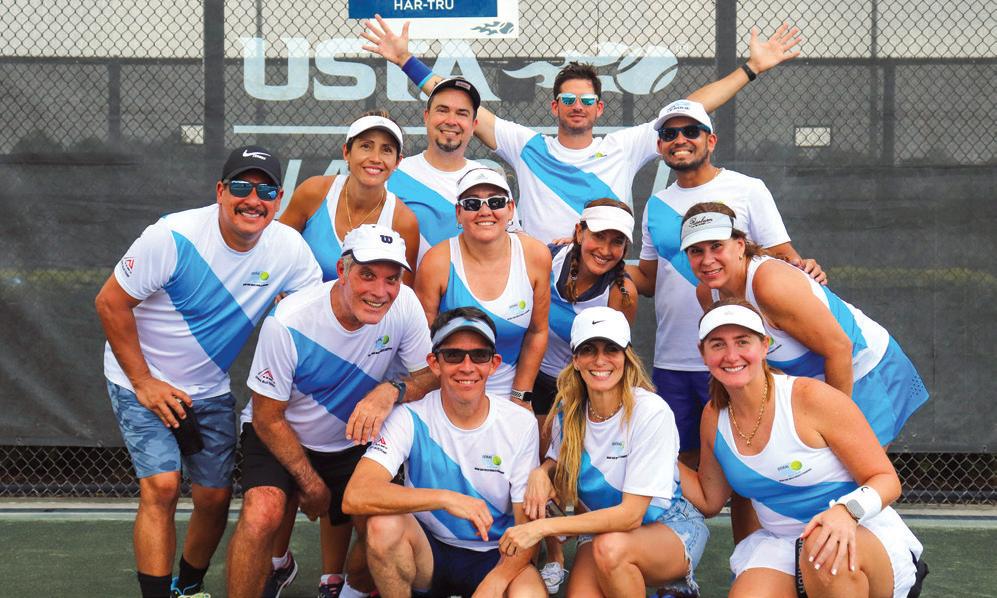
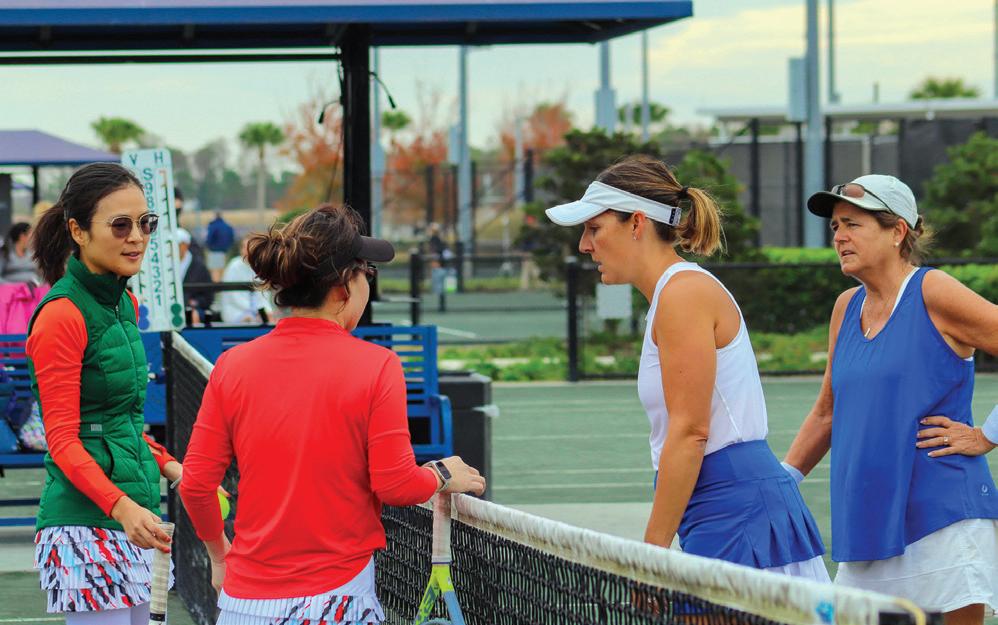
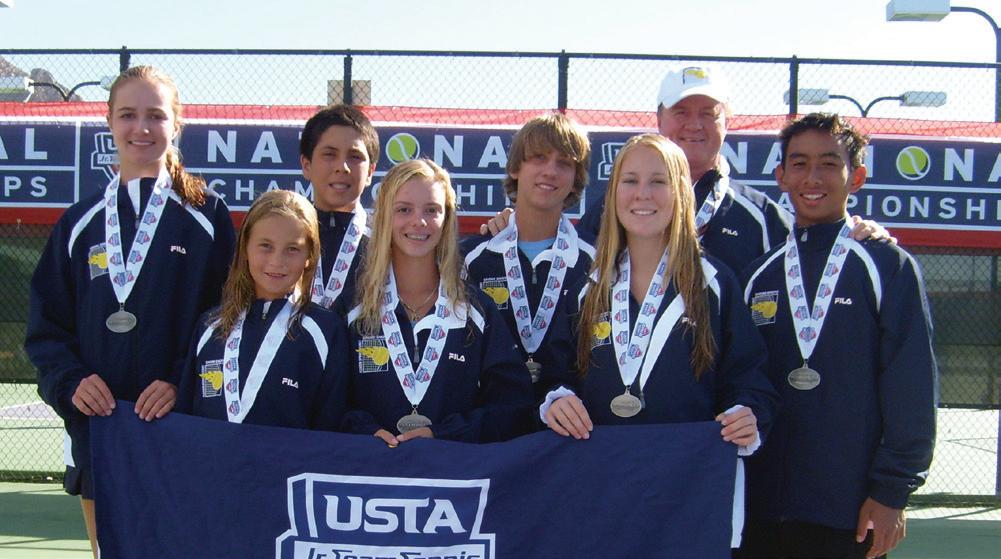
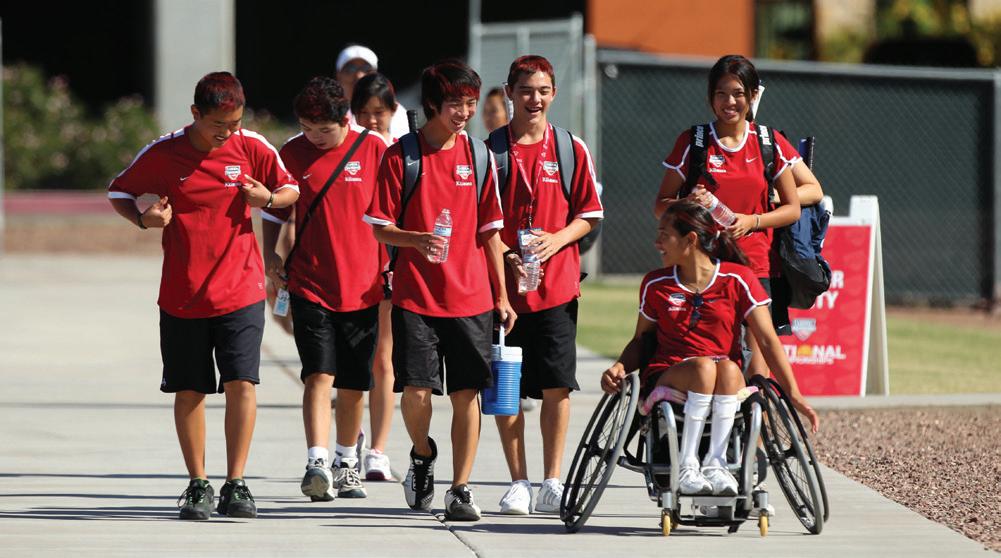
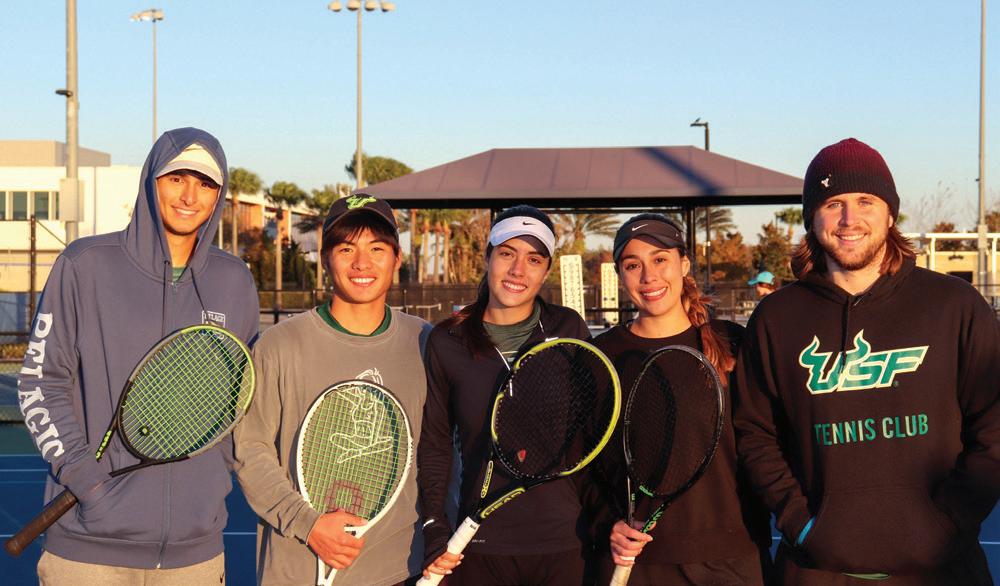
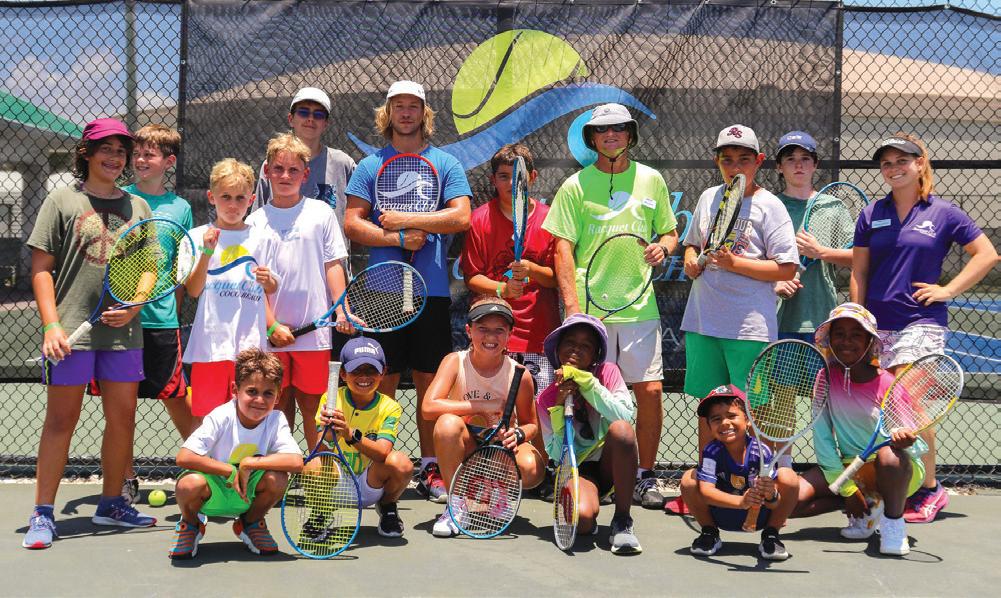
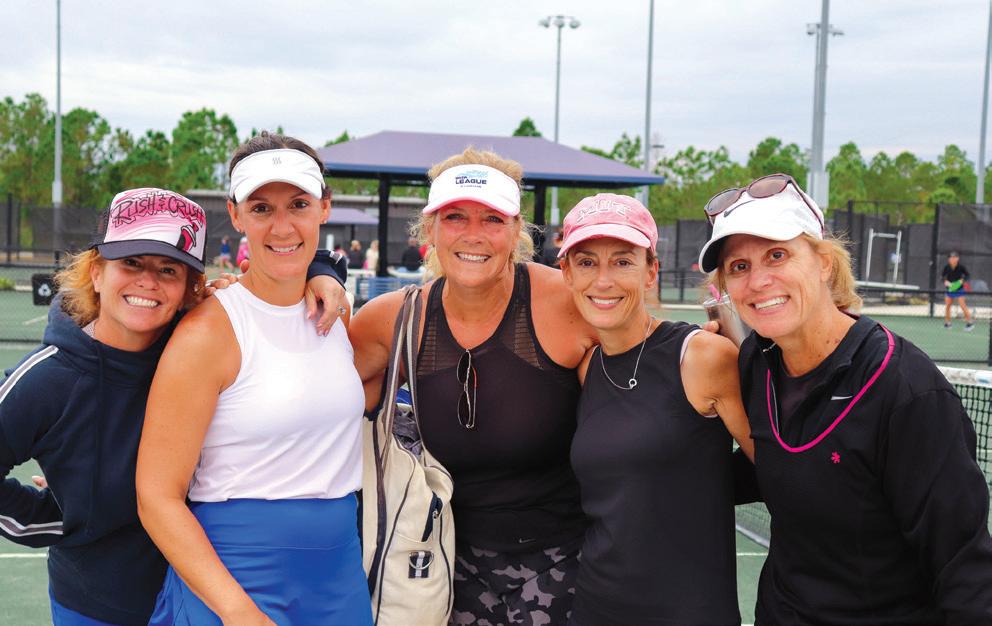

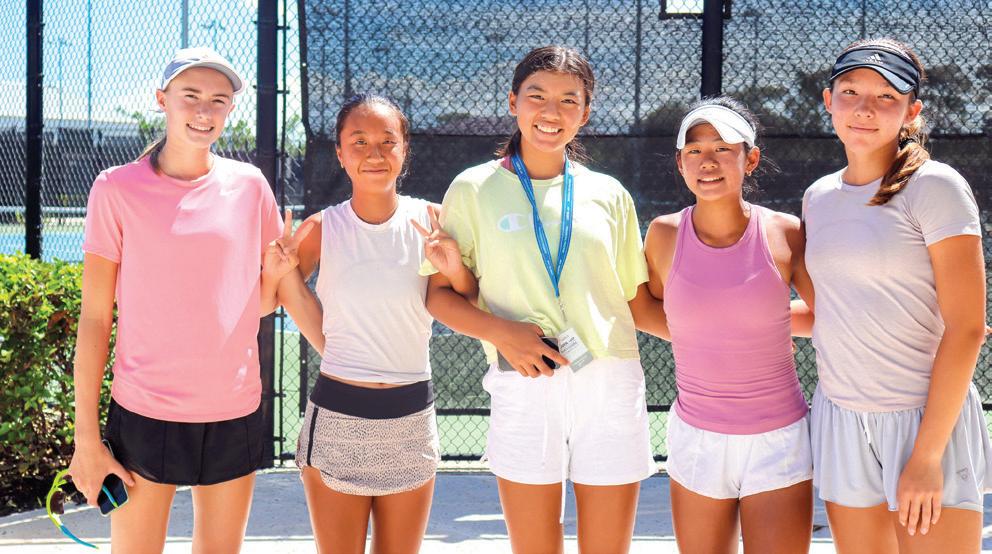
By Jaret Kappelman
The USTA Florida initiative, AMPLIFY, was launched with a vision to address racial barriers and inequities in tennis within Black communities. Since its creation in 2020, AMPLIFY has evolved into a program that seeks to empower Black individuals, communities, and institutions through the sport of tennis.
Tennis needs more diverse coaches and industry leaders and AMPLIFY has prioritized the development of Black coaches and leaders throughout all levels of tennis. Through mentorship programs, coaching clinics, and professional development opportunities, AMPLIFY has been empowering aspiring Black coaches, leaders, and volunteers, providing them with the resources and support they need to succeed. By investing in the next generation of tennis leaders, AMPLIFY aims to foster a more diverse and inclusive workforce across all aspects of tennis.
AMPLIFY has also expanded its scope to encompass a wide range of initiatives aimed at promoting diversity, equity, and inclusion within the tennis community. One of the key components of the program is its support for HBCUs, which play a vital role in nurturing talent and promoting diversity in collegiate tennis.
Through partnerships with HBCU tennis programs, such as Edward Waters University, AMPLIFY has provided crucial financial support, equipment, and resources to help these HBCUs thrive. USTA Florida also plans to educate more people on the history of HBCUs, why they’re important to not only Florida’s history, but also tennis history.
In addition to its support for HBCUs, AMPLIFY has also focused on partnerships with other Black organizations in the community. Since AMPLIFY was created back in 2020, USTA Florida has worked with organizations like the American Tennis Association (ATA). The goal for this aspect of the initiative is to determine what services we can offer in a meaningful consistent way and to evolve existing relationships into working partnerships.
Through grassroots programs, clinics, and outreach efforts, AMPLIFY seeks to break down barriers to participation and create opportunities for individuals from all backgrounds to engage with the sport. By bringing tennis to parks, schools, and community centers, AMPLIFY is destined to make the sport more accessible and inclusive for everyone.
Over the years, AMPLIFY has evolved and adapted to meet the changing needs of the tennis community. While its core mission remains the same; to promote diversity, equity, and inclusion in tennis for Black participants, the program continues to innovate and expand its reach. Through ongoing collaboration with partners and communities in Florida, AMPLIFY remains committed to driving positive change within the sport and creating a more inclusive tennis community for all.
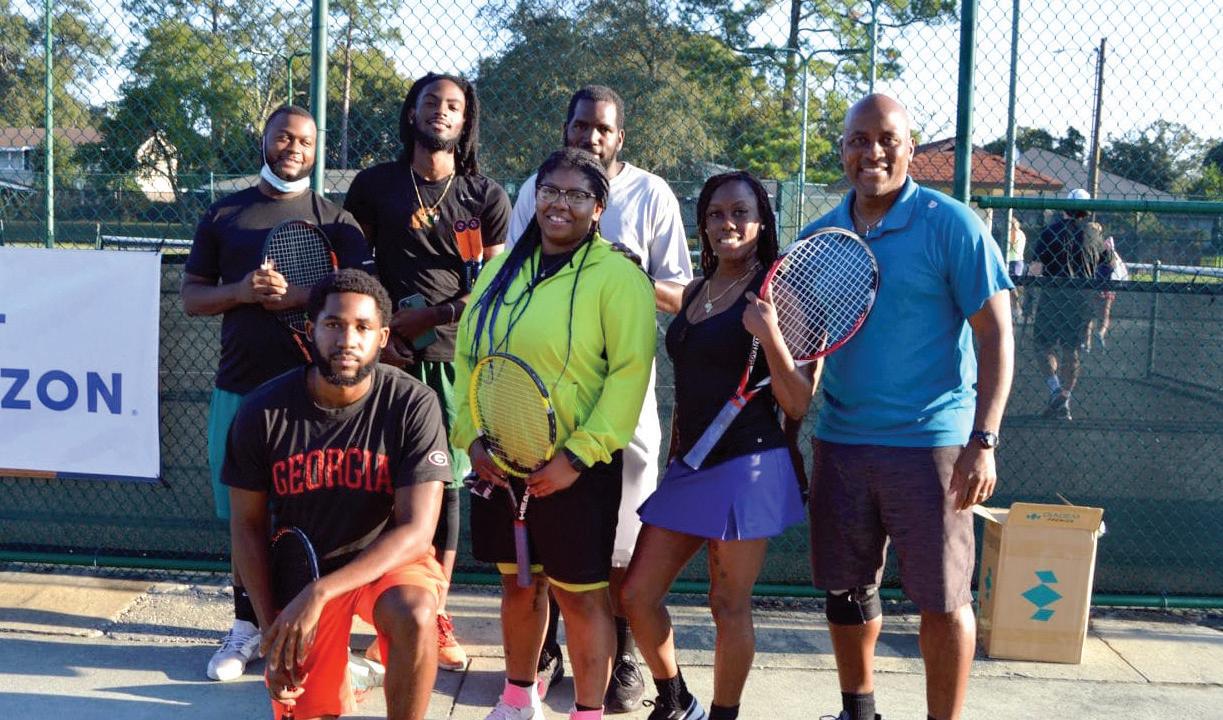
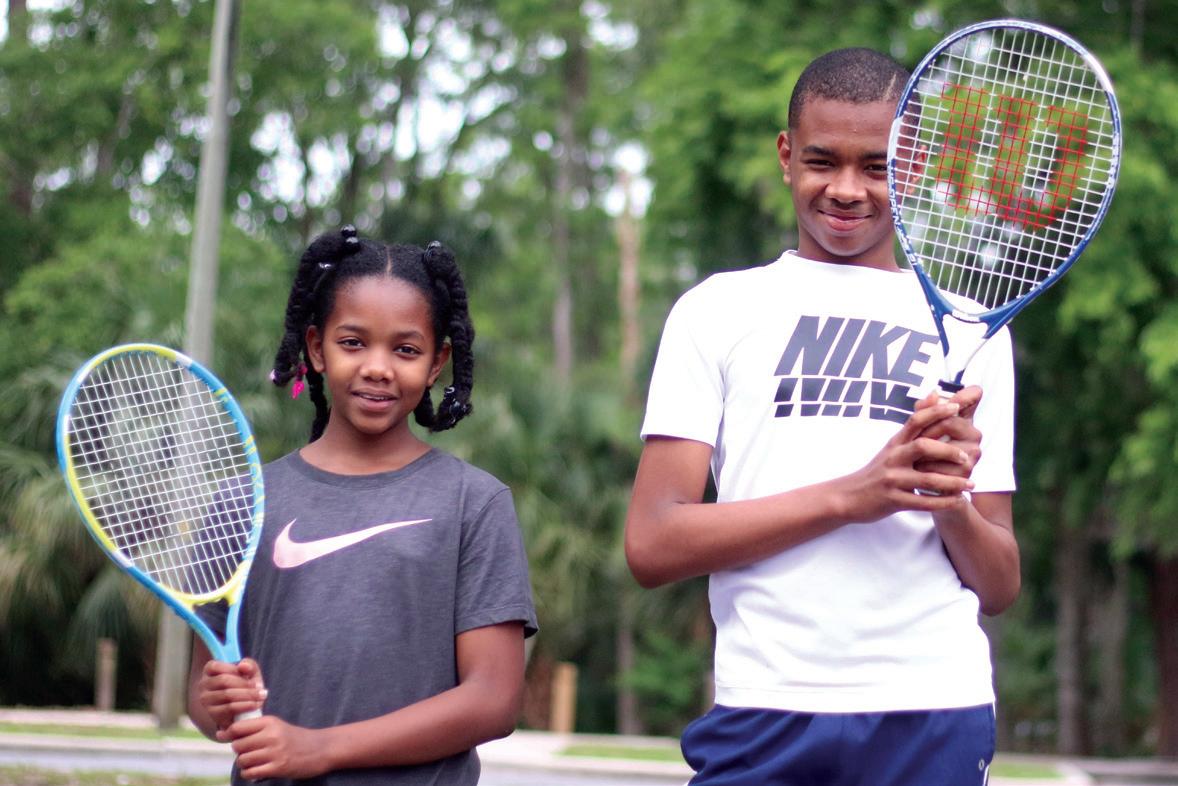
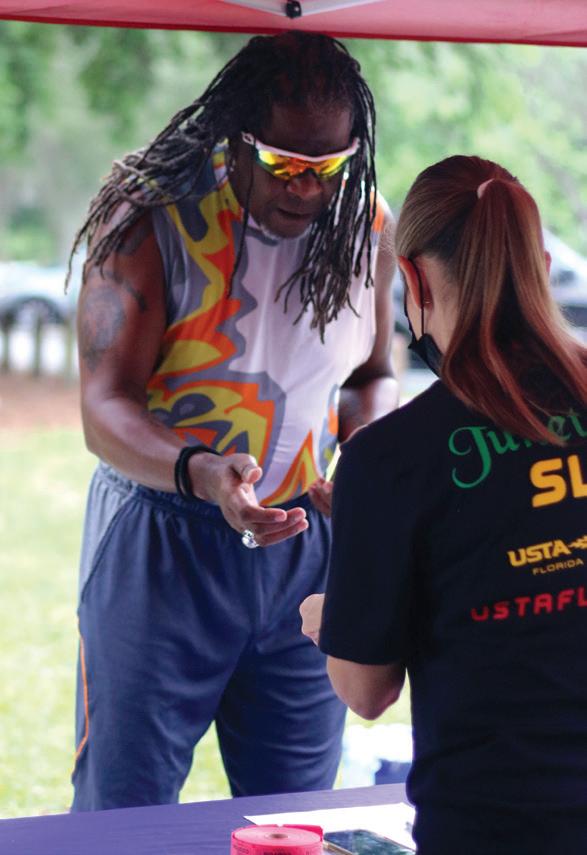

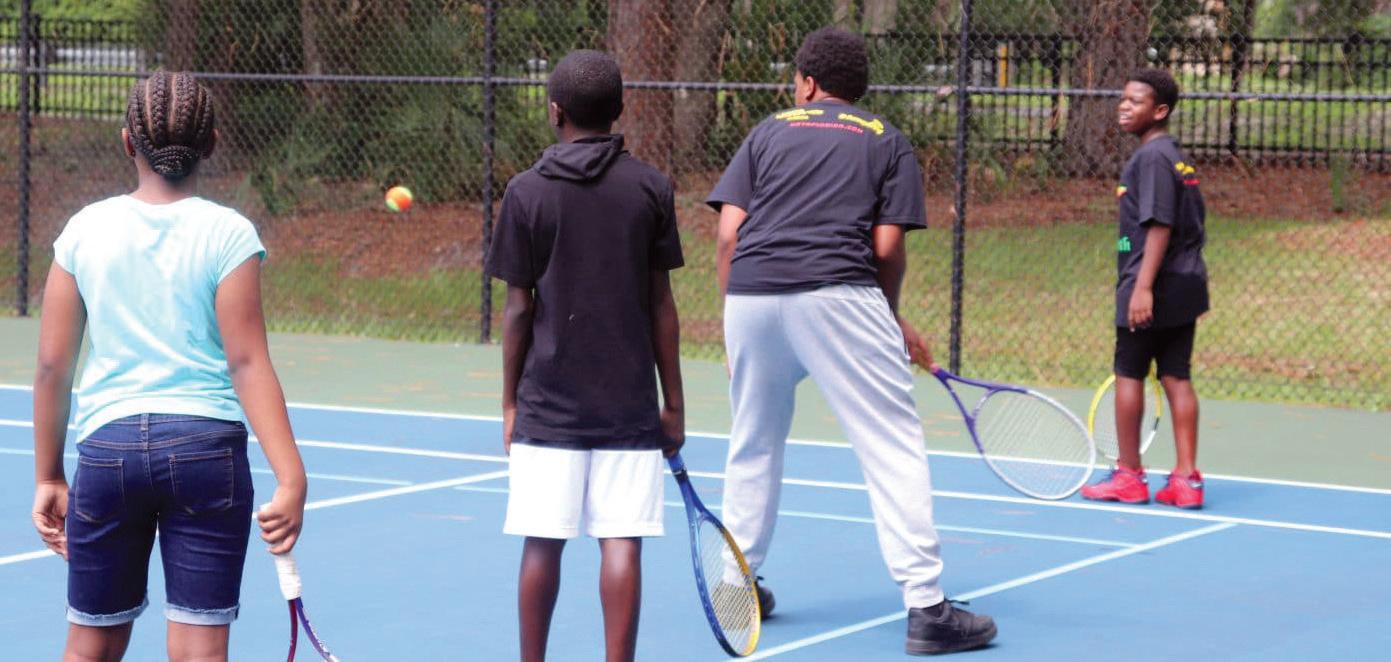
By Jaret Kappelman
USTA Florida’s commitment to promoting and developing tennis extends beyond organizing events and tournaments. Through dedication to tennis management and public park advocacy, USTA Florida is helping bring tennis to hundreds of communities in the state.
The staple of USTA Florida’s advocacy lies in tennis management, as the organization manages and operates four tennis facilities across the state, working with city officials to ensure tennis is available for everyone. “At USTA Florida it is very important for our Tennis Managed facilities to be at the heart of the community,” John Sanders, Director of Tennis Management. USTA Florida collaborates with cities to bring high-quality tennis facilities and programming for players of all ages and skill levels.
In 2017, the Racquet Club of Cocoa Beach became the first public facility that USTA Florida managed. This park offers a range of amenities including clay and hard courts, a pro shop, and tennis instruction programs led by certified professionals. RCCB has had very strong league play participation, and it has been a growing strength at the facility. Junior tournaments at various levels have also been well received in an area that has had very little tournament opportunity. Junior programming at all levels and adult beginner programming has been a great success.
Located in the heart of the Florida panhandle, the Fort Walton Beach (FWB) Tennis Center boasts state-of-the-art facilities, including lighted hard courts and a dedicated staff committed to promoting tennis in the community. From group clinics to private lessons, the center caters to players of all ages and abilities, ensuring everyone has the chance to enjoy the sport.
FWB was the organization’s second facility, which was turned over to USTA Florida to manage
in 2018. It has always been a military focused community and has strived to fulfill the needs of that demographic. FWB has also seen tons of growth in both its junior and adult programming since 2018. Overall, the facility has introduced many programs, events, and tournaments for the entire community!
Play Tennis Gainesville, USTA Florida’s third facility, lies in northern Florida and is home to hundreds of tennis players. First managed by the organization in 2019, USTA Florida made it a goal to reopen the four facilities that make up PTG and improve them. Those four being Albert Ray Massey Park – Joyce Oransky Tennis Center, T.B. McPherson Park, Tom Petty Park, and Northside Park.
PTG has a very strong community outreach program which sets it apart from the other facilities. Unifying the community through various partnerships to reach the underserved community has been a driving force at the facility. These locations now boast a vibrant tennis community with programs designed to enhance skills and foster a passion for tennis. With well-maintained courts and experienced coaches, the facility provides a welcoming environment for players to learn, practice, and compete.
Finally, Riverside Racquet Complex, which USTA Florida took over management of in 2023, resides in the beautiful city of Vero Beach. Home of the courts that former top American pro, Mardy Fish grew up on, Riverside features a comprehensive tennis facility with a variety of court surfaces, including hard courts, lighted practice walls, a pro shop, and much more. Riverside also has a strong community outreach program in partnering with the Mardy Fish Children’s Foundation. The community has been ecstatic about the facility providing programming for the underserved junior community, in addition to adult play opportunities. With a
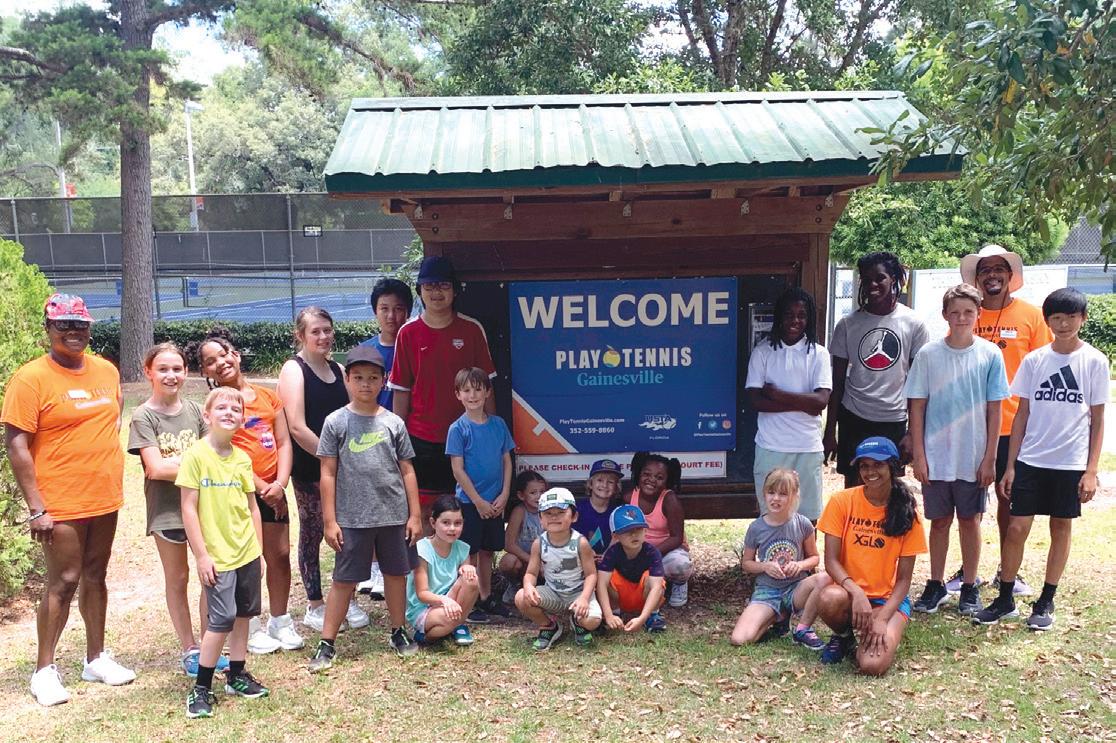
focus on promoting tennis as a lifelong sport, the complex welcomes all ages and backgrounds!
Additionally, all of the coaches that teach tennis for USTA Florida managed facilities are Safe Play certified, meaning that anyone who comes out will be able to learn in a welcoming and secure environment.
“With our facilities being in public space, we can provide opportunities ranging from entry level players to more experienced players,” Sanders added. “We are committed to offering low-cost programs to make tennis more accessible to any and all players in our local communities.”
On top of managing these four facilities, USTA Florida is dedicated to advocating for the development of public tennis facilities statewide. By partnering with local communities, city councils, and organizations, USTA Florida works to increase access to tennis courts and programming in public parks, schools, and recreational facilities. “Public parks are a great venue for potential players to be introduced to the game and play a vital role in the tennis ecosystem,” Sanders said.
By providing resources, support, and guidance, USTA Florida empowers communities to embrace tennis as a fun and inclusive activity that promotes physical fitness, mental well-being, and social connection.
As USTA Florida continues to expand its Tennis Management division and advocate for more public tennis facilities that offer the lifelong sport, the organization remains committed to its mission of promoting and developing tennis for all Floridians. By providing opportunities for individuals to play, learn, and compete, USTA Florida is shaping the future of tennis in the state and beyond.
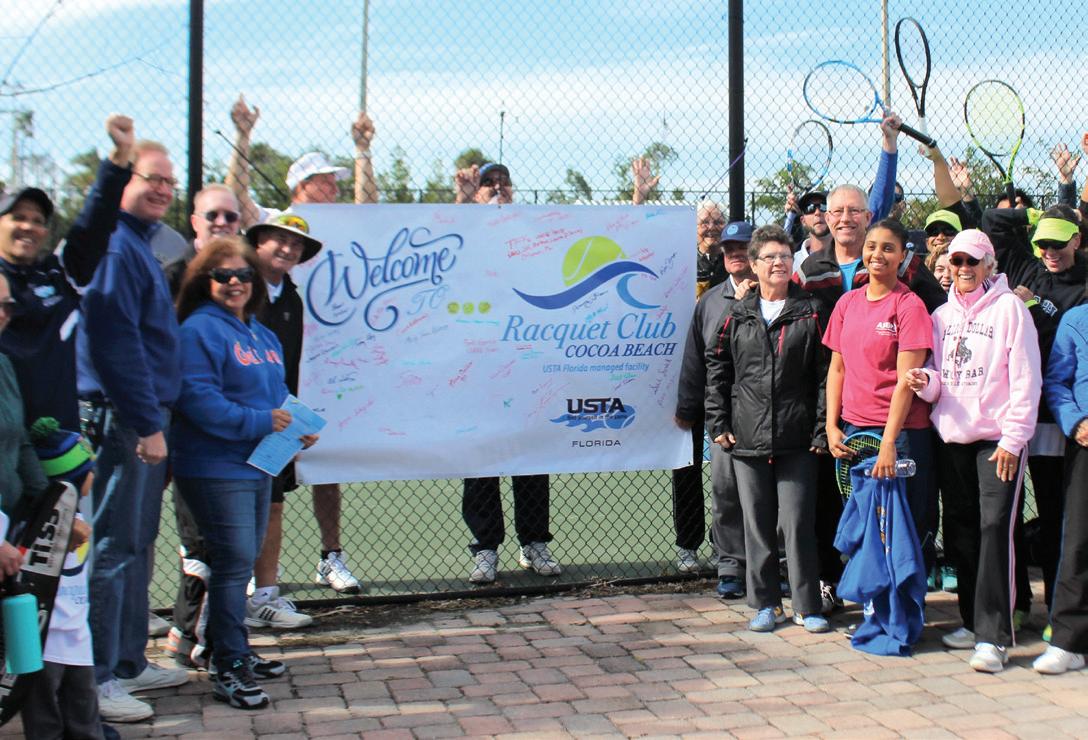
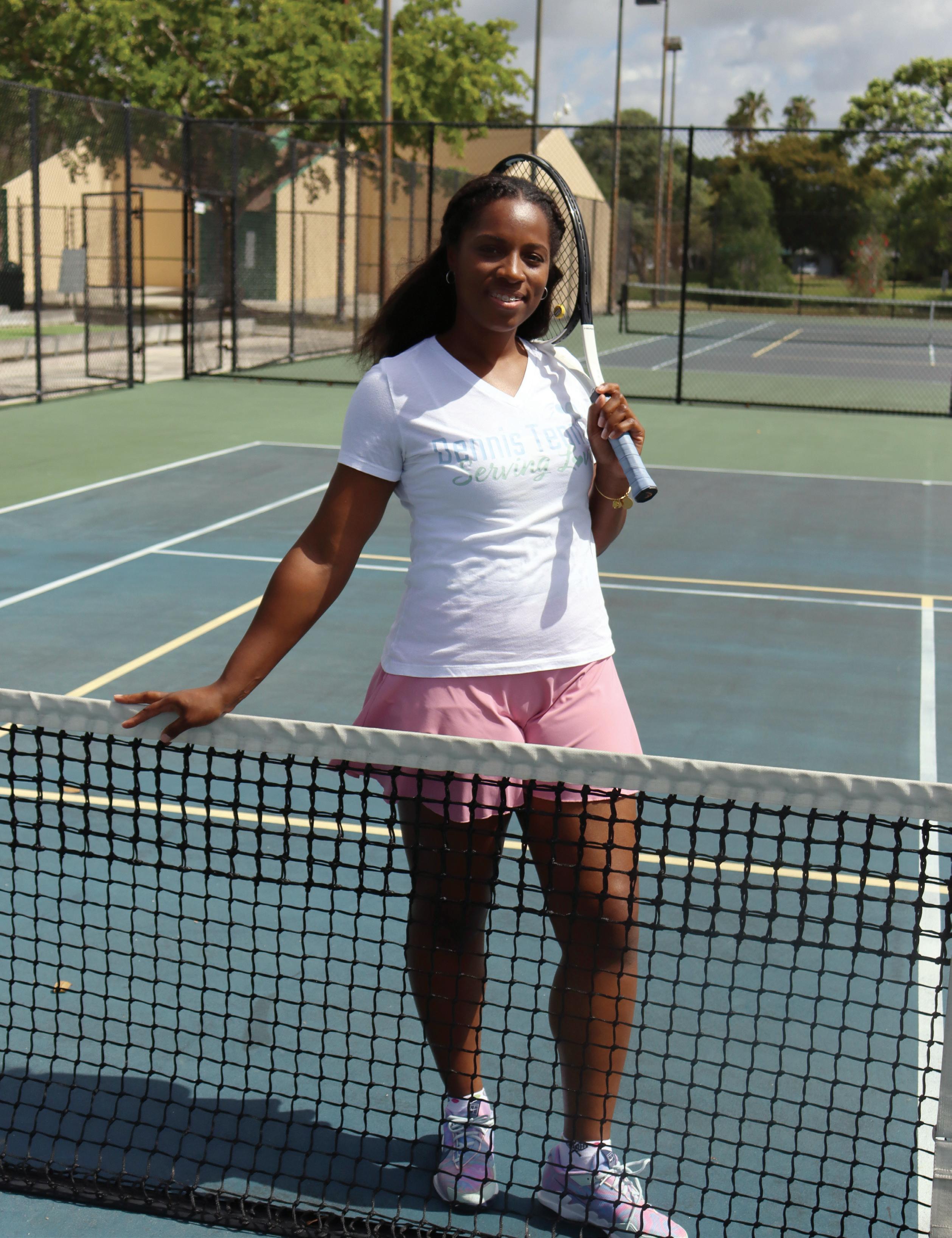
By Jaret Kappelman
USTA Florida is featuring inspiring individuals on the cover of this special edition magazine. These people are being celebrated for their exceptional contributions to the sport, embodying the spirit of leadership, dedication, and passion for tennis. From innovative coaches and dynamic players to tireless volunteers, each cover star exemplifies the qualities that drive the growth and success of tennis in Florida into the future. Their stories, marked by perseverance and a commitment to making an impact in the sport, highlight the vibrant tennis community we live in today.
Brittany Odom, co-founder of Dennis Tennis Serving Love, embodies the spirit of dedication, leadership, and passion for tennis. Brittany’s journey into tennis began a bit later in her life, when she had children and saw her husband, Dennis Quaye, teach her children the sport. Back in 2009, she took a beginner’s class, but it was when she met her husband and had a family that she really learned the sport. His passion for tennis ignited her own, and together they embarked on a journey to make the sport accessible to underprivileged youth.
“Once we started a family and he [her husband] began teaching our children how to play, my eyes were opened to how transformative the sport truly is,” she said. “I saw my kids fall in love with the game in real time. I want kids of all backgrounds to be able to experience tennis in the way my children have: as a tool for developing social and personal skills, enjoying physical activity, bonding with loved ones, and reaching new heights.”
In 2022, Brittany and her husband founded Dennis Tennis Serving Love, a 501(c)(3) non-profit organization with a mission to provide underprivileged youth the opportunity to learn and enjoy tennis. “Our mission is to bring tennis and all its numerous benefits to kids in the United States, the Caribbean, and within the African continent that have limited exposure to this great sport due to racial, economic and social barriers that can make tennis inaccessible to some,” she said. “We believe that learning and playing tennis provides children with physical activity that promotes a healthy lifestyle, while also instilling within them, a range of life skills that improve their social, emotional and mental well-being, such as self-esteem, leadership skills, and teamwork.”
One of their flagship programs, the Student Tennis Achievement Recognition (STAR) program, is a free six-week tennis experience for under resourced youth in Broward County. This program teaches tennis fundamentals, athletic skills, and mental resilience in a fun and inclusive environment. Each clinic concludes with a mental resilience lesson facilitated by a licensed clinical social worker, equipping participants with techniques to manage and express their emotions. The STAR program not only introduces children to tennis but also provides them with the tools to continue their tennis journey long after the program ends.
Brittany and Dennis Tennis Serving Love’s commitment to tennis extends beyond local initiatives. The School Engagement Tennis (SET) Initiative offers free tennis clinics to Title 1 Broward County Public school students, often providing their first experience with the sport. Additionally, their Global Good Initiative collects and distributes gently used tennis equipment to underprivileged youth in West Africa and the Caribbean, ensuring these items benefit young tennis enthusiasts who might otherwise lack the resources to pursue the sport. Their Community Engagement Initiative focuses on enriching the lives of youth, families, and the community through volunteer efforts.
Outside of Dennis Tennis, Brittany has facilitated an all-ladies workshop teaching 23 women the Net Generation Red Ball Curriculum, empowering them to become community coaches.
Brittany’s favorite part of her work is witnessing the confidence boost that children gain from engaging with tennis. “I see kids that start on day one unsure of themselves and although they are willing to learn, they are often intimidated because many are trying tennis for the first time,” she said. “By the time they finish our programs, you can see the transformation that has taken place. The kids are eager to play, confident in their ability, and express their desire to keep learning and growing in the game.”
Teaching kids also gives her the opportunity to impact the trajectory of their lives. “It’s like planting a seed that will grow within them. In tennis, kids have a tool they can use for learning life skills, getting and staying physically active, and even for managing their mental, emotional and social wellbeing.”
Florida being one of the biggest states for tennis and the sport continuing to grow, there is a need for more community leaders. Brittany encourages everyone, even those who have never played tennis, to give the sport a chance. “The first step is to pick up a racquet and start practicing, even if the game seems challenging at first,” she said. She is confident that if you give tennis a shot, you will fall in love with the game.
Inclusion is also crucial, both on and off the tennis court. She emphasizes that everyone has value, and that exclusion robs both individuals and the community of diverse perspectives and talents.
“For those looking to make a difference in the tennis community, identify gaps in access to the sport, collaborate with schools, utilize USTA resources to enhance tennis education and facilities, and support existing initiatives,” she said.
Brittany’s journey from a tennis novice to a community leader and advocate for inclusive tennis has been nothing short of inspiring. Through her organization she co-founded with her husband, Dennis Tennis Serving Love, and organizing all-women trainings she is breaking down barriers and opening doors for both underprivileged youth and women to experience the transformative power of tennis. Her story is a powerful reminder that tennis is more than just a sport, it’s a tool for personal and community development, impacting the future of everyone.

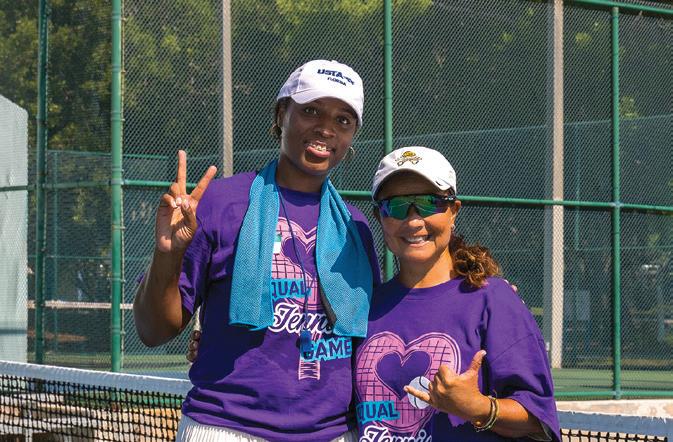
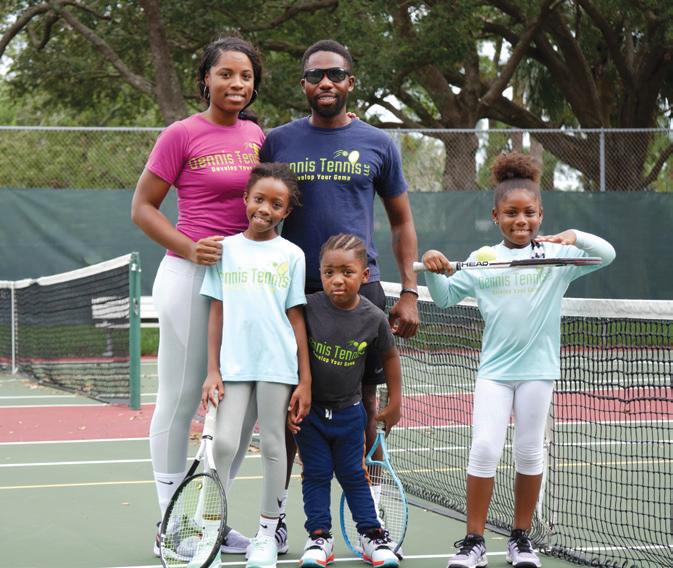
THE NEXT GENERATION OF TENNIS IS NOW:
By Jaret Kappelman
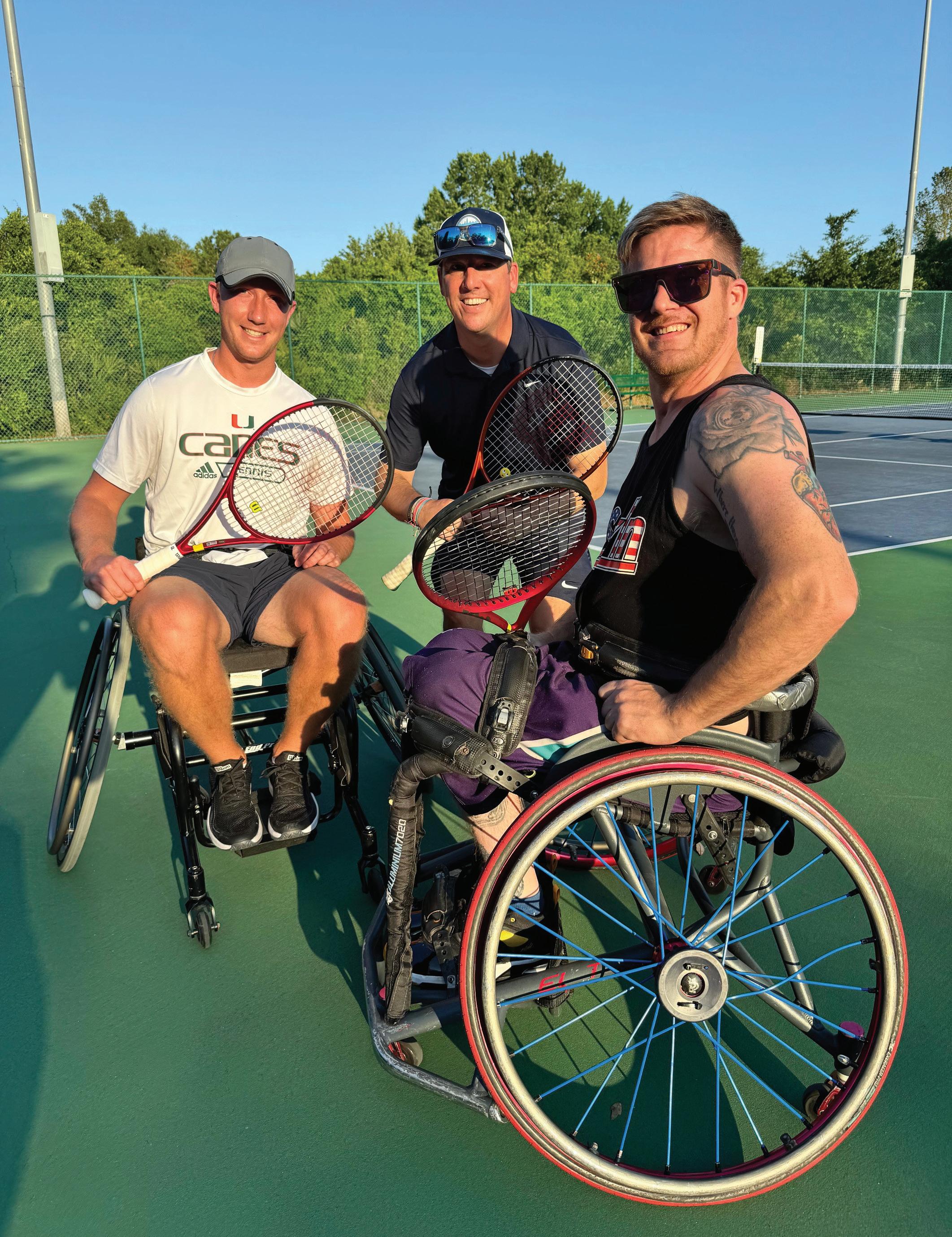
Greg DeMoustes, better known as “Moose” to many in the Florida tennis community, has a deep passion for tennis and growing the game. Transitioning from collegiate volleyball to tennis coaching, he became a certified professional with USPTA and PTR. Moose champions inclusivity and is a great advocate for the tennis community.
Tennis is a lifelong sport, and for Moose that lifelong journey began when he was just three years old. “I was tagging along with my mom as she played with friends on a regular basis,” he said. “I picked it up and never really stopped, it has always been a centric piece of my life.”
His parents were really the ones who grew his passion for the game as he always had their support in a sport that is often played by oneself. “I think it is special that I was surrounded by loved ones who also play because sometimes tennis can be an isolating sport.” Moose has carried this passion from a child and taken it into his everyday life.
Moose, like most kids, explored other sports, but he always found his way back to the tennis court. While he coached collegiate volleyball for a handful of years, he knew his true calling was on the tennis courts. “I decided to switch back to tennis and get certified with the United States Professional Tennis Association and Professional Tennis Registry,” he said. “It felt time to come back full circle to a sport that provides longevity and where I can further my impact.”
He knew the benefits of tennis, whereas he felt like volleyball can have an expiration date. Moose also wanted the opportunity to make an impact on a wider range of people, as the grassroot level would allow him to help children, adults, and even the elderly. “At the grassroots, growing level, the reward of seeing it click for kids and adults alike is the best reward.”
Moose’s role in the tennis community is multifaceted and has grown over the past decade. Today, he is the Director of Operations at Lake Cane Tennis Center, a coach, volunteer, and graduate of the USTA Florida Leadership Academy Program. He’s a valuable leader and advocate for inclusivity.
“I absolutely love bringing diverse groups together while creating a safe and inclusive space for them to learn, grow and become more confident,” he said. “This is something I have not always had while in the sports industry, so it’s at the forefront of my mind on how to continue to include historically marginalized groups. It is about creating love and respect.”
Part of bringing diverse groups together and something he’s extremely proud of is organizing the “We Play for Pride” and “We Play for Pink” charity tennis tournaments, which support the LGBTQ+ community and supports breast cancer awareness, respectively. Both events were recognized by USPTA Florida, winning the Diversity Award.
“Sometimes we get wrapped up in the weeds instead of looking at the big picture,” he said. “Having had the opportunity to create these initiatives and charity events is just the start. Bringing the community together in support of LGBTQ+, Breast Cancer Awareness with the sport we all love is truly an amazing feeling.”
Moose’s involvement in the USTA Florida Leadership Academy program further underscores his commitment to the sport. “I applied for the Leadership Academy Program to learn more about USTA Florida as a Section and the already growing initiatives that support advocacy and growth.” Being in the
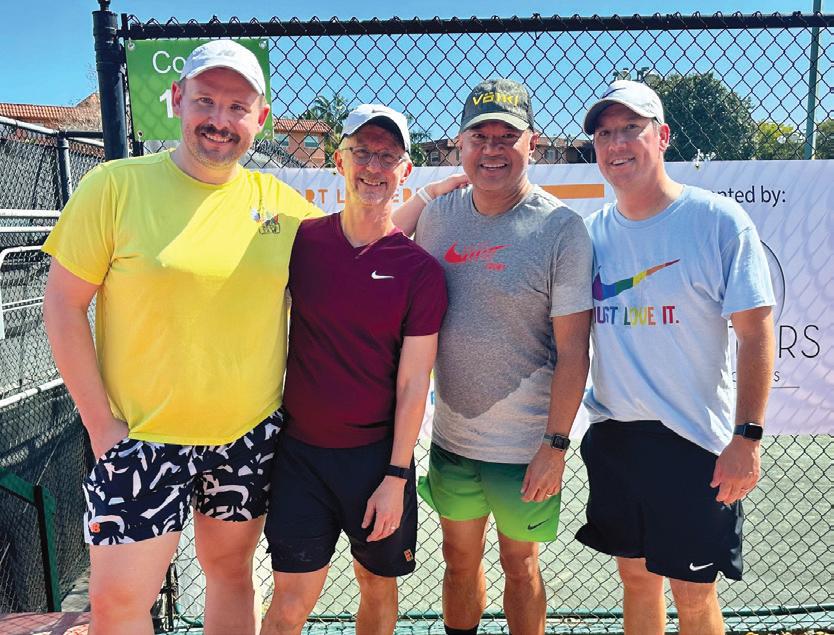
Leadership Academy has given Moose knowledge that will benefit not only himself, but the communities he will lead in the years to come. “This has offered a positive and inclusive environment in which to work alongside some of the best leaders in the game today, and for that, I am very humbled and grateful,” he said.
At a USTA Florida 75th Anniversary regional event in Orlando on April 15, Moose presented to nearly 300 people talking about his experience in the Leadership Academy and an experiment that he, and other people in the program, worked on. His group’s experiment was focused on seeing how the app SwingVision can help promote sportsmanship in tennis.
“Being in the program has expanded my knowledge and helped me become even more involved within the tennis industry. It has also taught me what it means to work with a team and push through the ups and downs of trying new things.”
Moose was also named USTA Florida Volunteer of the Month in April 2024, as he uses his experiences from both the Leadership Academy and life to strengthen the Florida tennis ecosystem.
Throughout his career, Moose has been involved in numerous projects and initiatives. At the Lake Cane Tennis Center, he works closely with Marcelo Gouts to organize tennis for all. Additionally, he volunteers with the USPTA and Women Teaching & Coaching Tennis, pushing to get more people involved with coaching. He also serves as the diversity, equity, and inclusion Task Force Lead for the LGBTQ+ community and the Adaptive Task Force at USPTA National.
While Moose has been a proud member of the LGBTQ+ community since he was 14 years old, he knows that other groups need recognition and support, not just from the tennis community, but from others across the globe.
Supporting and celebrating different backgrounds, both on and off the court, is one of Moose’s core values. “We all matter and having a safe and inclusive environment is what will help to support the growth of the sport we all love,” he said. “Having a diverse population within our sport will only help increase participants and grow the sport from the grassroots.” When he’s not coaching, Moose is advocating to bring people together, regardless of background, race, gender, and demographic.
Moose’s advice to aspiring tennis enthusiasts and those looking to make a difference is to immerse themselves in the community. “Reach out to your Section, Division or local facilities and see how you can help to support them and how they might be able to support you.” He added that there are numerous resources available, but they’re underutilized due to lack of awareness.
Tennis continues to grow in Florida, which means there is a need for more coaches, volunteers, and industry leaders. Moose encourages everyone to take part in the growth, because the sport goes far beyond the Sunshine State.
“Tennis is global and offers the opportunity to bring all groups of people and diverse populations together regardless of your background, race, gender, or demographic,” Moose added. “It serves as a cultural narrative that transcends the boundaries of a sports field thanks to its rich tapestry of history, society, and technology.”
Moose reminds us that one’s passion can transcend far beyond one community. His work in the tennis community not only promotes the sport but also fosters inclusivity and support. Through his coaching, volunteering, leadership, and countless other roles, Moose is paving the way for a brighter future which features a more inclusive tennis community.
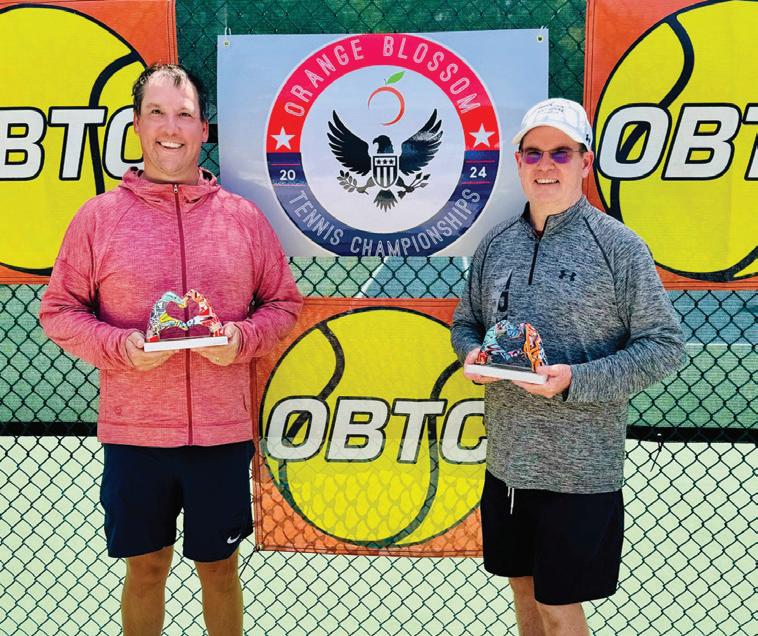
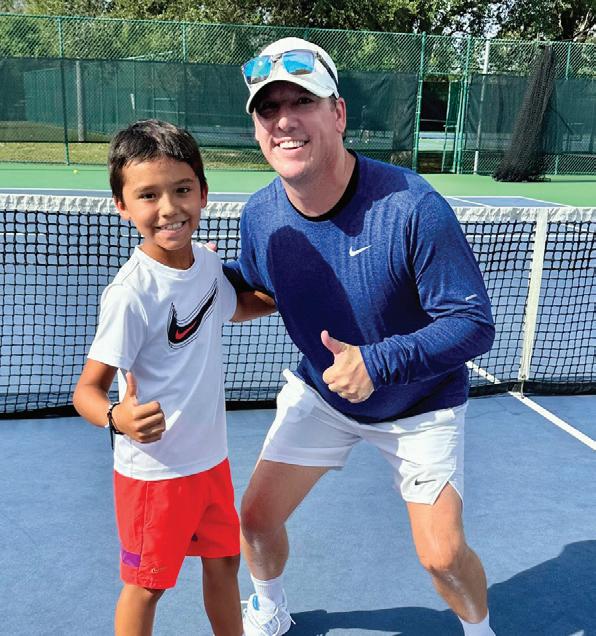
By Jaret Kappelman
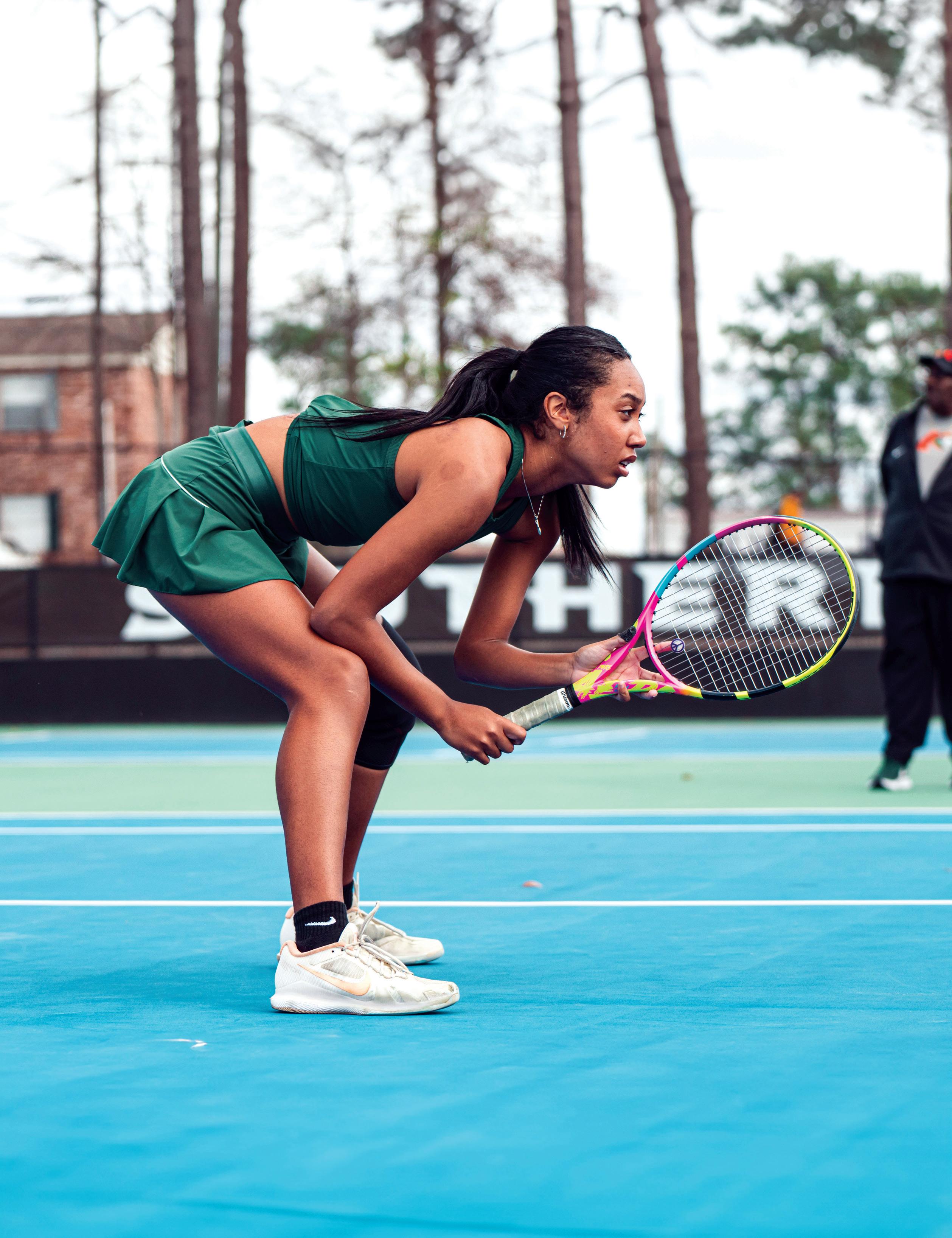
For Genesis Whitelock, tennis has been more than just a sport, it’s been a way of life for nearly 16 years. Dating back to when she was just five years old, she picked up a racquet for the first time. “My parents got me involved with tennis as they thought it was the most interesting sport,” she said. “They also believed it would expand my character and passions as I continued to play.” That passion grew, as she found inspiration from many greats like Serena and Venus Williams, Roger Federer, and Rafael Nadal. Now, she attends Florida A&M University, and is making a difference in the Florida tennis community.
Attending FAMU, a prestigious Historically Black College and University (HBCU), has been great for Genesis as the university offers so much on and off the tennis courts. “Regarding tennis, I really enjoy the program that Coach Nikki has, with the help of Assistant Coach E, as I feel they are both very encouraging of my goals and improvement in the sport,” she said. “Also, with Florida Agricultural and Mechanical University being ranked the number one public HBCU and the home of Grand Slam Champion, Althea Gibson, I thought it would be a great choice for my endeavors.”
On top of these benefits, Genesis was able to stay close to home. She also is getting a great education as she studies Political Science Pre-Law Concentration and is confident her future ventures will be bright when her tennis career ends.
Playing at FAMU has brought her tons of success on the court. Her collegiate career, so far, is marked by accolades such as the HBCU Draw B Singles Champion (2022), HBCU Doubles finalist (2022), Southwestern Athletic Conference (SWAC) Freshman of the Year (2023), SWAC Champions (2023), two Players of the Week awards, and an All-SWAC Second Team honor (2024). Each of these achievements underscores her dedication and skill on the court.
Off the court, she has been named to the SWAC Commissioner’s Honor Roll, which is earned by student-athletes with a cumulative GPA of 3.0 or higher during the school semesters.
Genesis’s commitment to tennis extends beyond personal achievements as she is deeply invested in fostering the sport within her community. “Living in Florida my entire life, I have been able to be involved with small coaching and volunteering projects for kids, such as helping young beginners learn the basics of the sport.”
Growing up in Saint Petersburg, she would go to local courts and engaged with strangers in doubles play for fun. “I did this in the hope to bring the community together to enjoy all aspects of the game.”
She loves to lead by example on and off the tennis courts, especially for the younger generations, and experience the feeling of people looking up to her in the Florida tennis community. “It allows me to keep working hard and giving my 100% in matches, and to help inspire them to pick up a racquet and have goals and dreams of playing for a Division I program, or at any prestigious university, such as FAMU or any other amazing HBCU school.”
As Genesis enters her third year at FAMU, she is still looking beyond college, as she envisions a future intertwining professional tennis with com-
munity involvement. “My plans for tennis after college are to perhaps play on the circuit and take on some time giving back to the tennis community,” she said. “I would like to be able to volunteer in my community to help the new generation find a love and passion for the sport.”
With tennis being a lifelong sport, Genesis doesn’t plan to ever stop being involved with it, even decades from now. With plans to volunteer and inspire future generations, she is a perfect role model in her community. “I would like to be an activist for tennis and teach all the lessons and traits that this sport has given me,” Genesis said.
Recognizing the financial barriers that can deter young players from pursuing tennis, Genesis advocates for accessible opportunities. “Florida tennis is some of the most high-level tennis in the world, which I believe comes at a cost, making it very expensive to play,” she noted. Genesis says this can cause some parents to not get their kids and even themselves involved with this great sport.
“One way I believe I can help with this issue is by providing volunteer teaching opportunities to get young kids, adults, and elders involved and get other college Florida players, like me to be able to volunteer to fix this issue,” Genesis said. It’s important to her that everyone gets the chance to experience the joy and thrill of tennis.
Genesis also emphasizes the importance of diversity and inclusion in tennis, both on and off the court. Celebrating and supporting inclusiveness for cultures creates a safer and stronger community. “By experiencing these new cultures, people should be open to learning, because it is extremely interesting and insightful to be able to learn about different languages, customs, foods, and so many other things because the world is built up of an abundance of different communities.”
She also believes that by being willing to learn about other people and welcoming them with open arms, you will spark friendships that can last a lifetime, and a safe environment for everyone. “By helping to keep diversity and inclusion in the sport, it creates a better environment that will inspire more people to be interested in the tennis community.”
Tennis continues to be one of the fastest growing sports in the world, especially in Florida and Genesis wants to see even more people try the sport, as players, volunteers, coaches, and other roles.
“The sport enables the development of an individual and prepares them for many different situations and opportunities,” she said. Tennis has way more to offer just beyond being an athlete, it creates community.
Tennis is more than a game, it’s a pathway to personal development and opportunity. The sport of tennis teaches valuable lessons that prepare individuals for various life situations, no matter what role you have in tennis. “Be open to participate in tennis activities, meet and learn more about people,” she said, as tennis is for everyone.
One day, Genesis plans to travel the world and play at different courts spread across the globe. She wants to include everyone and encourage people, regardless of age, skill, or background to give tennis a chance.
Genesis’ dedication, achievements both on and off the court, and vision for the future position her as a true leader in the sport, inspiring others to pick up a racquet and dream big.

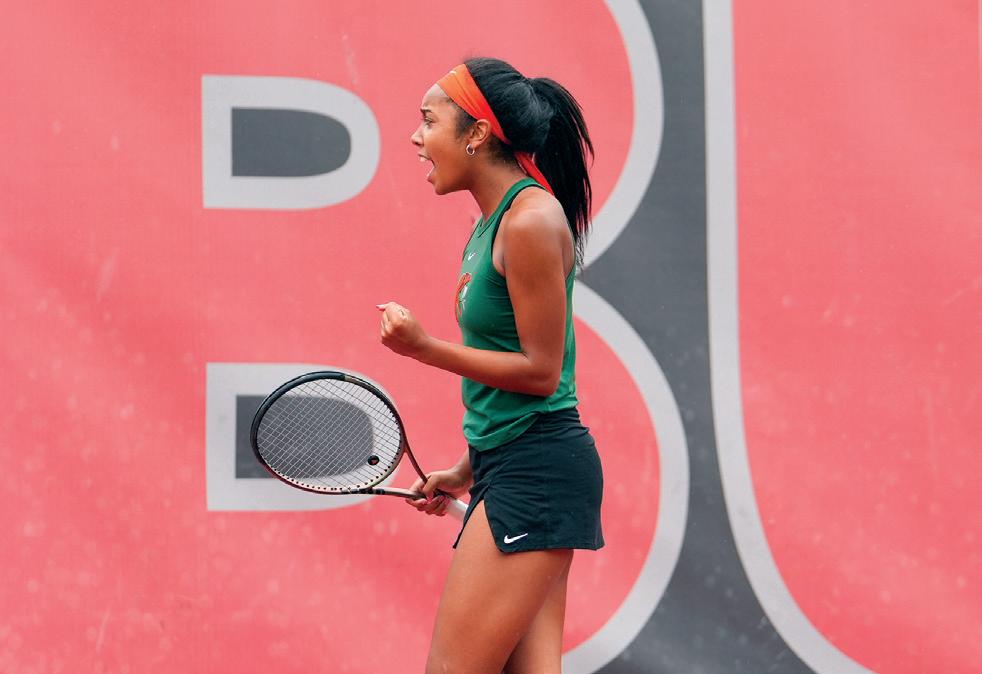
By Jaret Kappelman
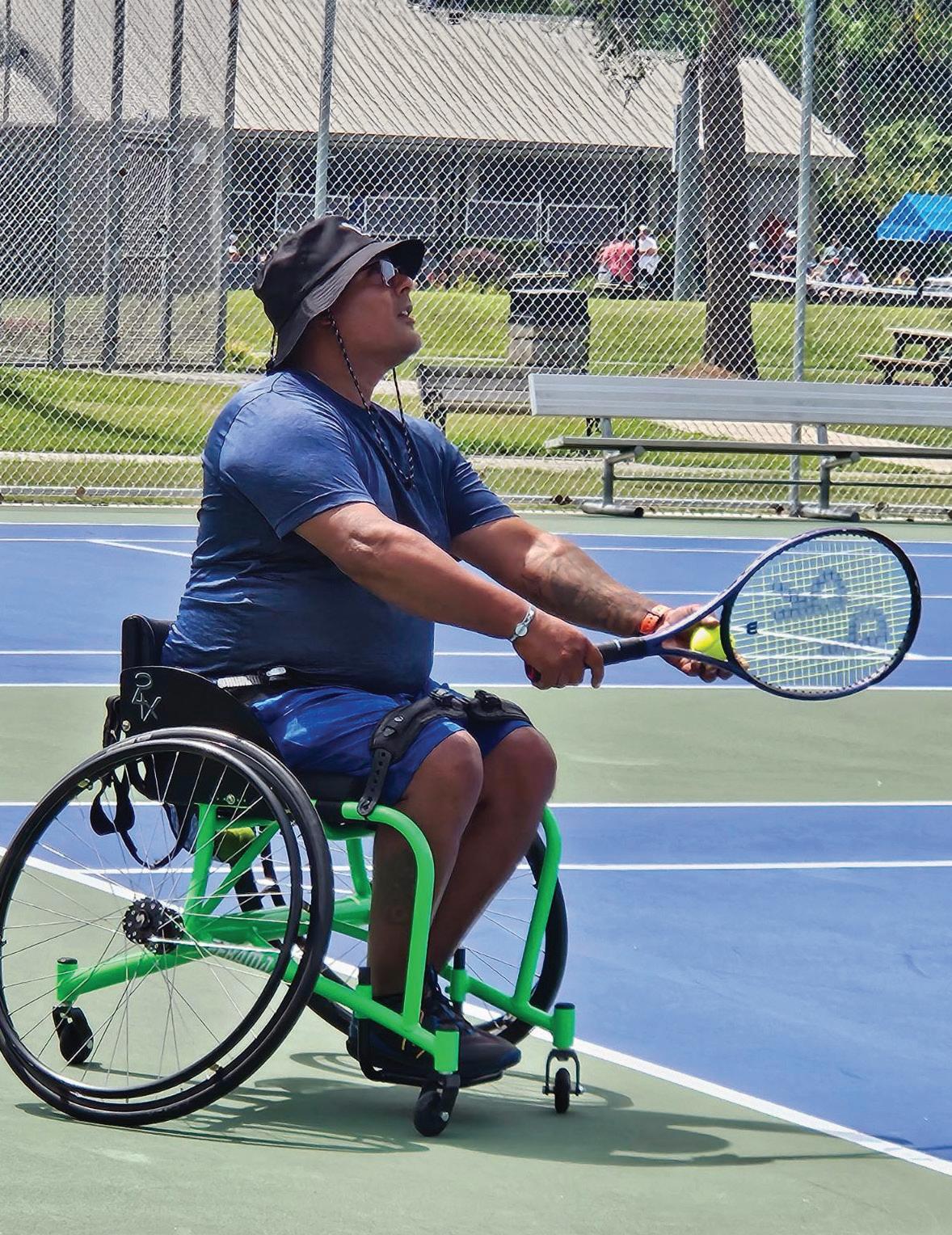
Eddie Nieves-Tañon, a wheelchair tennis player, rediscovered a passion for tennis in 2019 and has been an influential figure for all. Despite his challenges, Eddie competes in USTA tournaments and is a mentor to new players, finding joy and community in the sport. His story is one of remarkable resilience and the transformative power of tennis.
Eddie’s life took an unexpected turn in 2011, when he found out he had Transverse Myelitis, a rare neurological condition that caused inflammation of his spinal cord. Transverse Myelitis is inflammation of the spinal cord and can lead to partial or complete paralysis. This life-altering event made Eddie wheelchair-bound, but he wouldn’t let that stop him from living his life.
This condition led Eddie to physical and emotional challenges, leading to a period of depression and inactivity. “I wanted to have something that would help me health wise and get out of this funk and depressed state,” he said.
His rejuvenation came in 2019, while at the USTA National Campus proshop. Eddie ran into Jason Allen, a leader of Team USA for wheelchair tennis at the time. Jason, being heavily involved with wheelchair tennis, introduced him to the National Rollers program, which provides free clinics.
“I picked a racquet when I was about 12 years old for tennis summer classes my mother put me in but after that never again, that was until 2019,” he recalled. “I wanted to do something that would get me out of the house, distract me for a bit.” With renewed hope and determination, Eddie embraced the chance to return to the sport, seeking both physical exercise and mental relief.
Eddie started in the National Rollers program until the Covid pandemic halted activities. However, the program resumed in April 2022, allowing Eddie to rejoin and immerse himself in tennis once again. “I’m currently playing in tournaments sanctioned by the USTA all over the states,” he said. “I also go to the clinic on Saturdays at the USTA National Campus, plus I practice regularly midweek with another guy who just started and I’m teaching him the basics.”
For Eddie, tennis is more than a sport, it’s his lifeline. “I love being involved with new people who are just starting, especially to get them comfy in their wheelchair,” he said. The camaraderie among players at tournaments, the friendships formed, and the joy of competition provide an unmatched sense of community. Tennis has significantly improved Eddie’s mental state, giving him a purpose and a way to help others. It’s also an excellent form of exercise, contributing to his overall well-being.
Despite being almost 48, Eddie has set his sights on reaching the International Tennis Federation (ITF) level. He has already won numerous accolades and trophies in his division, but he wants to achieve more in wheelchair tennis.
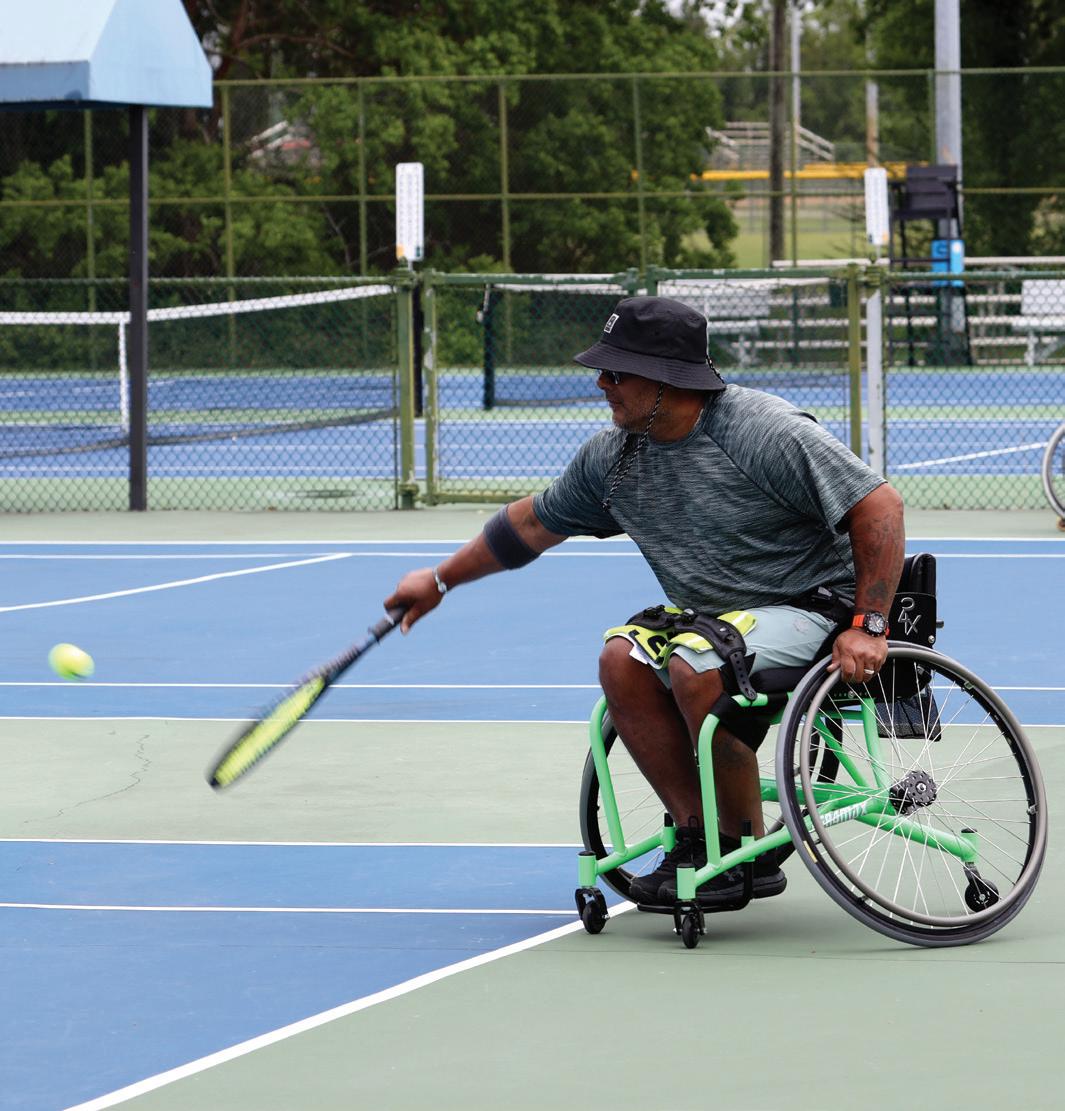
“I think I could get better, improve, and get to ITF level,” Eddie said, showcasing his determination and passion for the sport.
Eddie is proactive in spreading the word about the sport, encouraging other wheelchair-bound individuals to give tennis a try and experience all the benefits mentally and physically. “I’ve met quite a few people that are wheelchair bound and told them about the free clinics that are given on Saturday by the USTA,” he said. “I also tell them what a great sport it is and that it’s an awesome way to exercise or do something different.”
Eddie has met so many people throughout his life, especially since 2019 that motivated him, and pushed him to play tennis. He remains vocal and at the forefront of improving wheelchair tennis for all in the Florida community.
“The most pressing issue for Florida wheelchair tennis is that there’s not enough information,” Eddie said. “What little information we have is not getting to where it needs to, like physical therapy places, rehab centers, and even placing some announcements at the entrance of the USTA National Campus.” Eddie also hopes to see more wheelchair tennis showcases throughout the state and the world.
Living and playing tennis in Florida, Eddie values the importance of embracing and learning from different cultures. “That’s what makes this country so diverse and great at the same time,” he said. “We can always learn from others and vice versa!” As a Puerto Rican, Eddie appreciates the diversity of his community and believes that inclusivity enriches the tennis experience and society as a whole.
For Eddie, tennis is a comprehensive sport that offers mental and physical challenges, structure, and health benefits. “Tennis is important because it has created a sense that I can do a sport that is as complete, mentally and physically, as there can be,” he said. “Tennis is a very inclusive sport where it can be played in and out of a wheelchair, which also has many different divisions to place people in depending on their injury, movement or lack of!”
Tennis has given Eddie a renewed sense of purpose and a platform to inspire others, demonstrating that resilience and passion can lead to extraordinary achievements, no matter the obstacles.
Eddie is an amazing reminder that no one can put limitations on what you want to accomplish in your life, no matter the challenges. He takes pride in helping others improve their game without expecting anything in return. Although he hasn’t been involved in tennis his entire life, Eddie is thrilled to assist others, the way Jason Allen did by opening the door to tennis, helping him go back to a normal life, filled with joy, positivity, and fun!

By Jaret Kappelman

Alba Martinez, at 17 years old, is not only a promising tennis player but also a dedicated member of the community and an inspiring role model to many, including her little sister. Her journey through tennis, marked by determination and a deep love for the sport, has positioned her as a leader for the next generation of tennis stars.
Alba’s tennis journey began at the early age of five, influenced by her parents’ insistence on sports being an integral part of life. “My parents were very persistent with me playing tennis from a young age, and I learned to love it,” she recalled. For the Martinez family, sports were always going to be a part of their lives, and tennis was one that was perfect for Alba and her younger sister.
“My younger sister has been attending my tournaments since she could walk and has been surrounded by this sport her whole life,” Alba said. “I guess you could say she started playing tennis because of me!” Alba has played a great role in his young sister’s life and even finds herself giving her pointers as they both train for their future.
Alba’s dedication to tennis has yielded impressive results. By the time she was nine, Alba was not just playing but training seriously, setting the stage for a future of success in the junior circuit.
She has won and placed well in numerous national tournaments, including securing two silver balls and two Bobby Curtis Plates, one of which was first place. Alba is also a two-time Florida High School Athletic Assocation State Champion at True North Academy in Miami.
Her immediate goals are to earn a Division I college scholarship, win a conference title, and compete in the NCAA Tennis Tournament. These aspirations are backed by years of hard work and the unwavering support of her family. “When I started to grow a passion for this sport and got pretty good at it, we decided as a family that this is the path I wanted to take,” she said. “I couldn’t do any of this without my entire family’s support.”
Beyond her personal achievements, Alba has made significant contributions to the tennis community. She finds great joy in coaching young juniors who are new to the game. “I’ve had several parents approach me asking me to coach or simply rally with their kids, kids that look up to me as a former #1 USTA Florida player,” she said.
For these young players, Alba is a source of inspiration, and seeing their
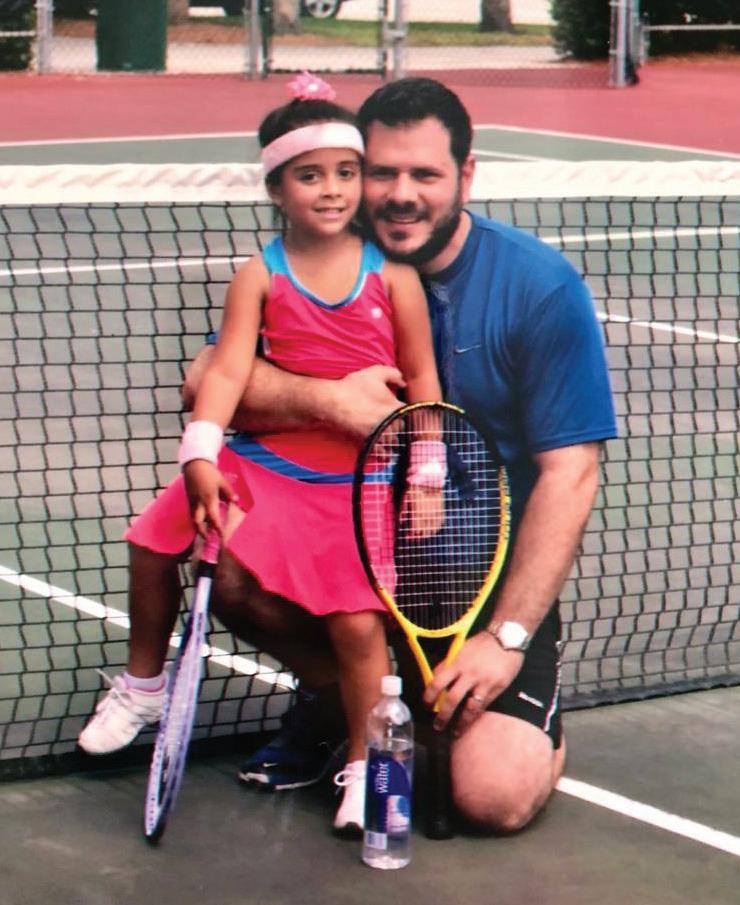
enthusiasm is incredibly rewarding for her. “It’s so rewarding to see these young kids look at me as if I was some pro. I hope I’ve inspired them and maybe made them fall in love with the sport a little more.”
While her playing career has taken center stage in her life, Alba still hasn’t pushed away the idea of giving back to her community whenever she can.
As someone who competes in a ton of tennis tournaments, Alba wants to make sure that everyone can have the opportunity to experience what she gets to, and that tennis strives for even more accessibility. “I think it is important that the [tournament] fees remain reachable for all players,” she said. “The last thing we want is for junior players not to be able to afford to play in tournaments due to financial inequality.”
As an American with Hispanic heritage, Alba values the inclusivity that tennis promotes. “Being inclusive of all cultures is important to not only tennis but all communities across the world,” she said. “It should be celebrated and embraced. I love to see the USTA go out of its way to make everyone feel welcomed and equal. Tennis is a sport for everyone, regardless of color, race, sexual orientation or religion. On the court, it is a fair game. You have to love that.”
For Alba, tennis is more than just a sport; it’s a life-shaping experience. “When I was younger, I was so shy I wouldn’t even ask for a glass of water at a restaurant from a waiter,” she said. “Tennis has filled me with confidence, strength, and discipline.” Tennis is the ultimate teacher as it helped her learn some essential life values such as character, honesty, dedication, and discipline. “Get involved, be active, and help each other out,” she said, encouraging everyone of any age, race, and background to give tennis a shot.
As Alba heads into her senior year at True North Academy, she remains focused on her goals while also paving the way for others. Being recognized as a community leader both on and off the courts is another stepping stone along her path. “This is such a privilege. I feel so lucky, but also proud because I know all the work I and my close ones have put in to be in the place I am in today,” she said.
As she continues her journey, she remains committed to leading by example, ensuring that tennis not only shapes her future but also the future of her community.
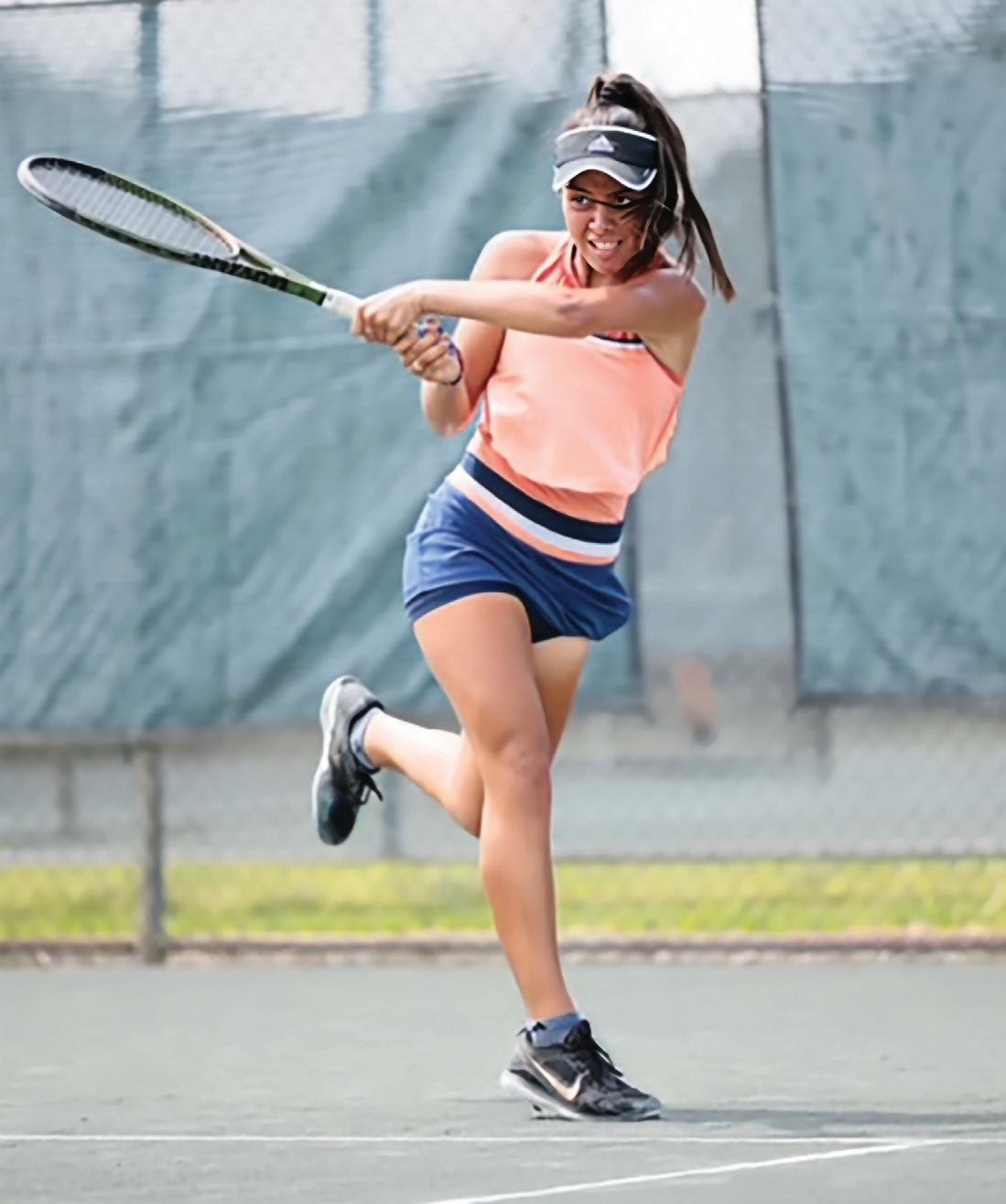
By Jaret Kappelman
Evan Sheffield’s journey in tennis began far from the sunny courts of Florida. Growing up in Perth, Australia, Evan was introduced to a variety of sports such as golf, swimming, and baseball. However, it was tennis that captured his heart. From the moment he first picked up a racquet, the sport became an integral part of his life. The initial love for the game quickly turned into a deep passion and a desire to excel.
Evan’s drive to be the best in tennis stemmed from his natural competitiveness. The sport’s physical and mental demands resonated with him, sparking a relentless need to improve. “I loved improving and loved the physicality and how difficult this sport is,” he said. “It just made me want to be better in all aspects of tennis and now in life with my own personal goals.”
This drive didn’t just influence his tennis game, it helped him in every aspect of his life, pushing him to set and achieve personal goals off the court as well. While he dreamed of playing professionally and being featured on television, his tennis journey took a different, yet equally fulfilling path.
One of the most rewarding aspects of Evan’s tennis journey has been the relationships he has built with so many people. The tennis community, with its close-knit and supportive environment, has allowed him to make friends and create memories that will last a lifetime. “I have met some beautiful people and lifelong friends with the tennis community,” he said. “The tennis community always feels like the world is so small and it gives some wonderful moments at events as both a spectator and competitor that just gives a great vibe.” Evan cherishes the memories he’s made through tennis and these experiences have reinforced his belief that tennis is the greatest sport.
Reflecting on his playing career, Evan didn’t achieve all his initial ambitions. However, he has gained far more than he ever anticipated. “I learned a whole lot about myself during my tennis career and the person who I am today,” he said. “It shaped my life and me as a person. I consider that my biggest takeaway from tennis.” Now, he has some new goals in mind as he continues to grow in tennis.
“I would love to keep in touch with the tennis community and not close any doors,” he said. “I have been in touch with a super close friend of mine who is currently on the pro circuit and asked me to maybe help her out with different types of coaching. Maybe not her main coach but strength and fitness and mental coach.”
Currently, Evan is helping coach young players and volunteers with children who have special needs. When he isn’t volunteering, he plays with his club team at school and helps his roommates learn the game so they can be involved as well.
Aside from the playing side, Evan has found immense joy in giving back to the tennis community. He proudly supports Gooding Todero Academy, where he works with incredible coaches dedicated to teaching the next generation of tennis players.
Additionally, he has been heavily involved with the Special Olympics, which holds a special place in his heart. “It is just amazing to see kids and adults in that format,” he said. “It’s a beautiful moment to see everyone genuinely happy and there for all the right reasons.” Witnessing the genuine happiness and camaraderie at these events underscores the power of tennis to unite people from all walks of life. When Evan was 18, he was named USTA Florida Volunteer of the Month for April of 2023, one of the youngest to achieve this honor.
Evan advises aspiring tennis players and volunteers to give it a try. “Just go out there and have fun, genuinely.” He emphasizes the importance of enjoying the journey, meeting diverse individuals, and creating lasting memories. For those looking to make a difference, Evan encourages involvement in community initiatives and projects that are bigger than just one person. “Getting involved to do something bigger than yourself always feels rewarding in the end.”
Looking back on his lifelong relationship with tennis, Evan is filled with gratitude. Starting at the age of 3, and now 19, his tennis journey has been a rollercoaster of highs and lows.
“I would never trade away any of those moments for the world. I am so blessed I got to struggle in a sport multiple times,” he said. “I got to fail over and over every day. I got to work, not just physically, but mentally as well. It shaped me as a person and taught me more than how to hit a forehand and backhand but life lessons that will last throughout my life.”
As Evan reflects on the future of tennis as a sport and within the Florida community, he is optimistic about its success. “Tennis is a powerful tool that can shape a community and much of the world,” he said. “We have many young faces of tennis that are emerging as we speak, so we are definitely in safe hands and have a strong future ahead with the sport of tennis.”
For Evan, tennis has been a lifelong teacher and a source of countless blessings, and he is committed to continuing his work to uplift the community and inspire the next generation of tennis players.

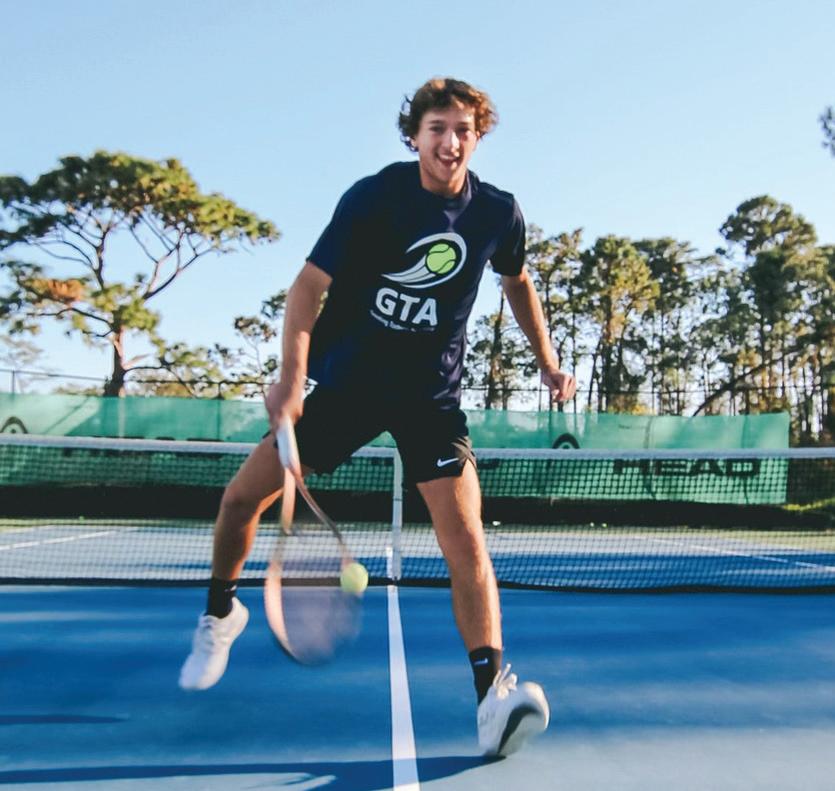
By Jaret Kappelman
Tosin Awomewe, known as Coach Tosin to many, is a devoted tennis coach and founder of the Racquet Arcade Tennis Academy, located in Sebring. His journey in tennis began at the age of eleven, sparked by a simple suggestion from a friend to join the school tennis club. He asked his mother if he could join, so she went and purchased a 50-cent racquet from a garage sale, which would mark the humble beginnings of a lifelong passion for the sport.
Coach Tosin’s early experiences with tennis were shared with his younger brother, as they played together and developed a deep love for the game. This bond over tennis laid the foundation for Coach Tosin’s future endeavors in the sport. As he grew older, his enthusiasm for tennis evolved into a desire to share his love for the game with others, particularly children. His initial role as a high school tennis coach ignited a passion for mentoring young players, which he has carried forward into his professional career.
“I have always had a passion for helping kids,” he said. “After serving as a high school tennis coach, I wanted to expand my horizons and become an even better coach.”
Founding the Racquet Arcade Tennis Academy was a dream come true for Coach Tosin. His vision was to create a nurturing environment where kids could train, feel at home, and develop their skills. The academy represents more than just a training facility, it’s a community where young players can grow both as athletes and individuals. Coach Tosin takes immense pride in seeing children leave the academy with smiles on their faces, proud of their achievements and more in love with the sport.
“I am a firm believer in the saying, ‘not all superheroes wear capes, and this is a prime example of that,” Coach Tosin said. This philosophy drives his work, as he strives to be an inspirational figure for the children he coaches. One of the significant challenges Coach Tosin works to address is burnout among
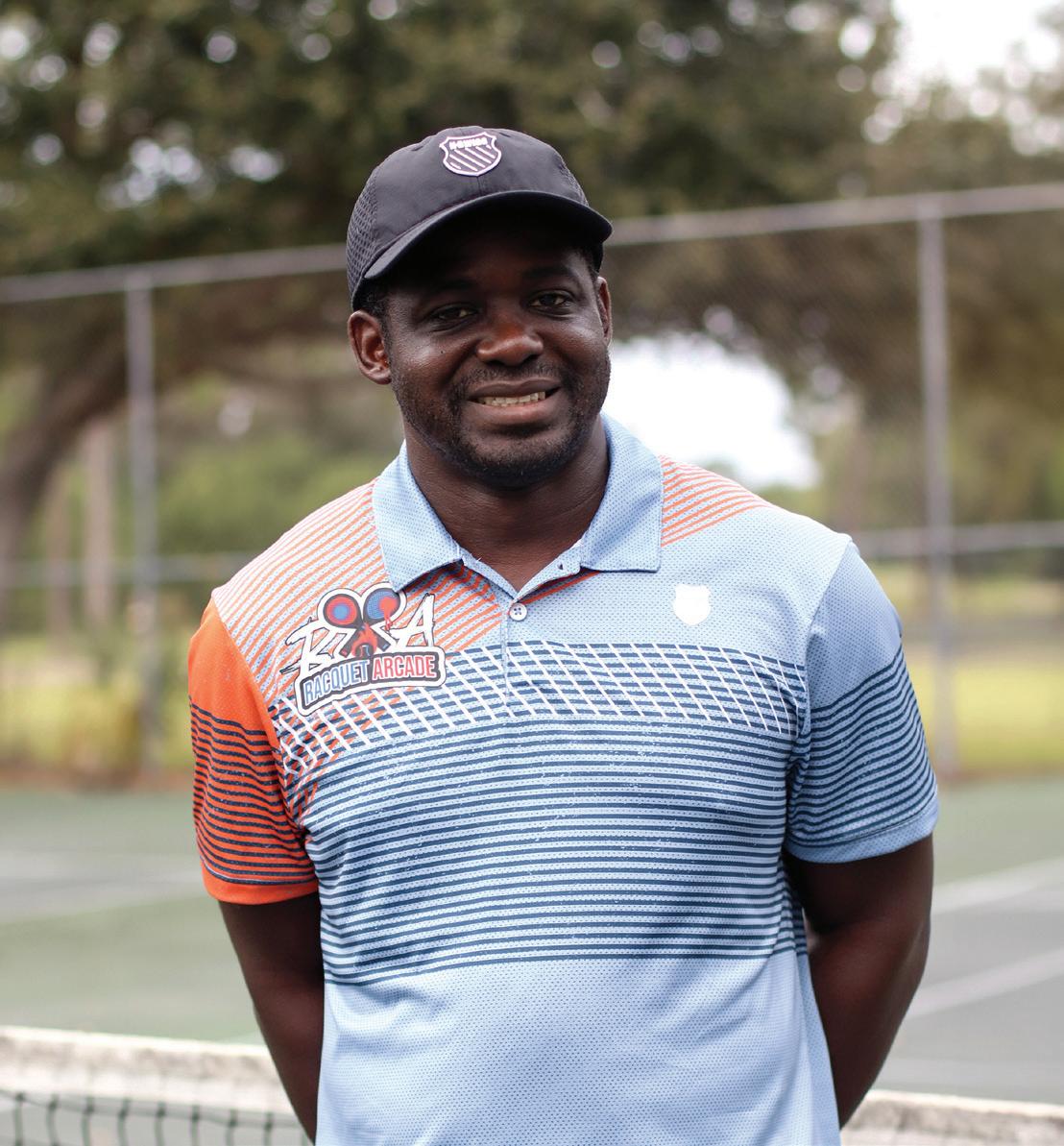
young tennis players. He recognizes that many kids are overwhelmed by the pressures of competition, which can cause them to lose interest in the sport. “My plan is to find ways to help these kids rediscover their passion for tennis,” he said. “By helping them understand how to combat burnout stages, I aim to support them in enjoying the sport while still being able to be kids and teenagers.”
Coach Tosin has been working closely with Dr. T.C. Lackey, a prominent advocate for tennis in the Sebring community. “We are creating ways to help kids in tournament environments by building a more friendly structure where they can compete, have fun, and feel a sense of accomplishment at the end of the day,” he said. The goal is to ignite that tennis passion for all participants.
Tosin’s philosophy is rooted in the belief that success is a journey defined by passion and perseverance. He often reminds athletes that he coaches, you must fail over and over before mastering something. “Everything you do involves trial and error,’ he said. “Success can’t be measured, but as long as you love what you do, your passion will always reach others.” He drives the love and passion of tennis into his athletes, putting them in a mindset that encourages them to embrace the learning process and find joy in every step of their tennis journey.
He sees tennis as a universal language that unites communities, allowing them to share knowledge and grow collectively. Tennis is not just a game, but a lifelong teacher that imparts valuable lessons applicable to everyday life. “We are always learning, and tennis provides us with a worldwide connection to help bring us together and learn new ways to grow collectively.”
Tennis is a massive part of Coach Tosin’s life, and he wants everyone to know that what you learn on a court can be used in our everyday lives. “Tennis serves as a teaching lesson for what we encounter in our daily lives,” he said. “That’s why tennis is a sport you can play for a lifetime, the lessons we learn while playing tennis will follow us throughout our lives.”
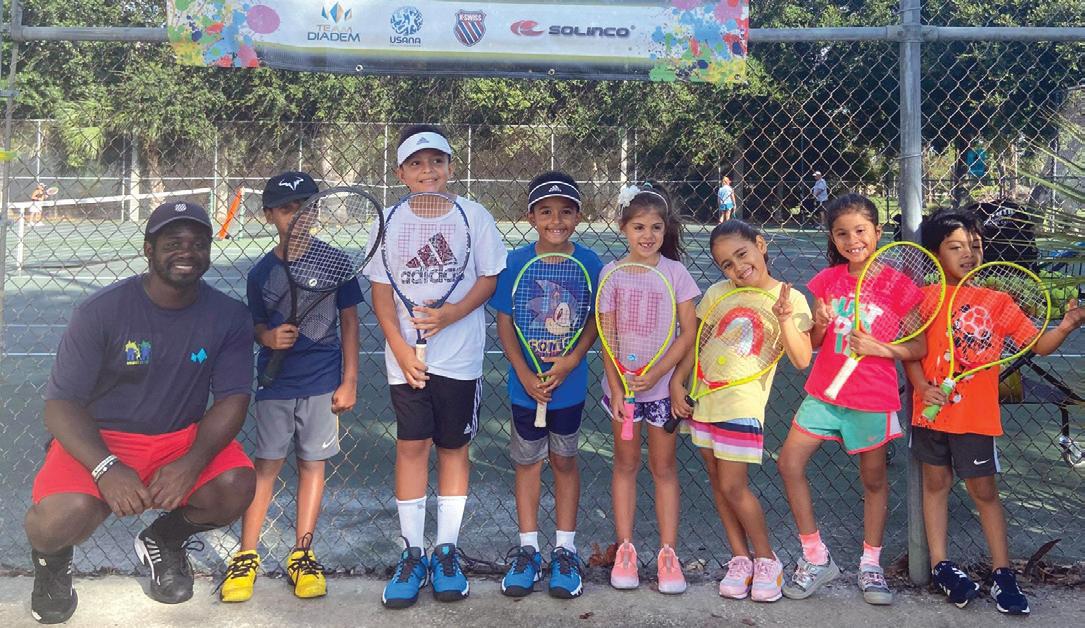
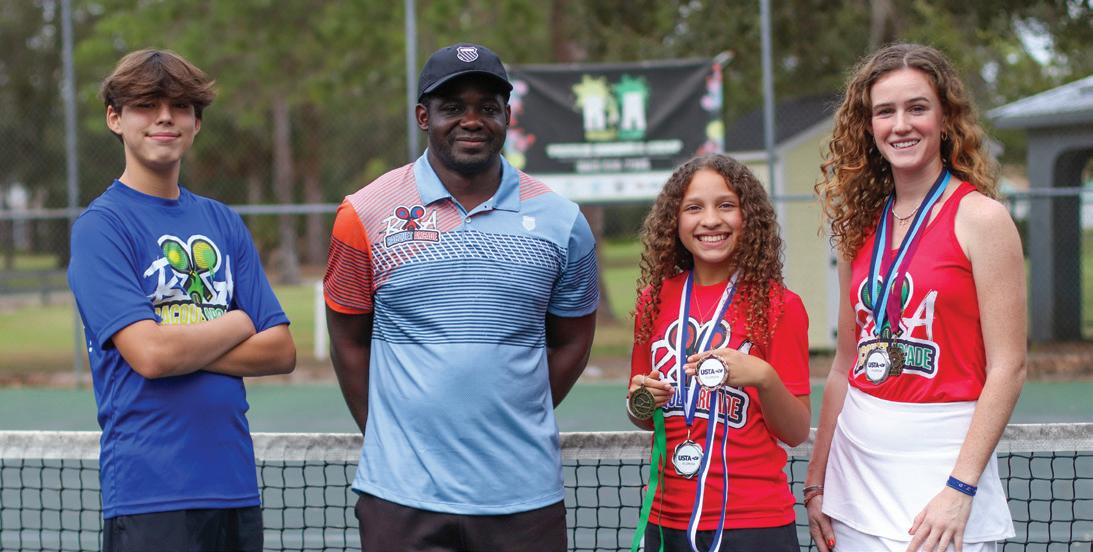
By Jaret Kappelman
The USTA Florida Community Coaching Program has undergone significant evolution since its inception, continually adapting to meet the growing demands of tennis coaches across the state. First launched as a pilot program in 2021, it has grown in response to an increased population of players needing basic instruction, especially after the Covid-19 pandemic. The program’s primary goals have always been centered on providing accessible and high-quality coaching, and these goals have been refined over the years, expanding the reach of newly trained coaches.
One of the most significant achievements of the Community Coaching Program to date is the increase in the number and diversity of community coaches. In 2024, there was a noteworthy rise in female coaches, with 178 new women trained compared to 154 men. In the previous year, 400 people were trained, and within the first five months of 2024, 332 new coaches have already been trained. This expansion has allowed the program to reach more areas, ensuring that all communities across Florida have access to quality tennis instruction.
To address the growing demand for tennis coaches in Florida, the program has expanded from 6 Community Coach trainers to 31. Community Coach trainers are the people responsible for running classes which teach aspiring coaches the fundamentals they need to know. These coaches come from diverse backgrounds, including schoolteachers, retired professionals, high school coaches, and individuals with various abilities and experi-
ences. This broad range of expertise helps cover a wide area in the state that needs coaches for their players.
The program actively seeks to attract and retain new coaches, particularly from diverse backgrounds. By showcasing a diverse group of coaches, including those of African American, Hispanic, and Asian descent, the program reflects the community it serves. This diversity is essential in creating a welcoming environment for all participants.
Adapting to changes in coaching methodologies and the latest trends, the program emphasizes cooperative play. This method involves putting racquets in the hands of all players and teaching basic drills. This approach allows players to hit more balls, experience early success, and enjoy the game more, which accelerates their improvement. Unlike traditional methods where a teaching pro feeds perfect balls to individual players, this modern method ensures all participants are actively engaged and receive personalized instruction.
Looking ahead, the program is set to continue several exciting projects and partnerships. With the USTA National Campus, USTA Florida has been hosting a large community coach training session at the start of the year, aimed at training new coaches across the state. This past year, there were more than 40 aspiring coaches in attendance and USTA Florida is excited to host this massive training in 2025 and on!
Additionally, the program has partnered with Jorge Capestany, who has developed the
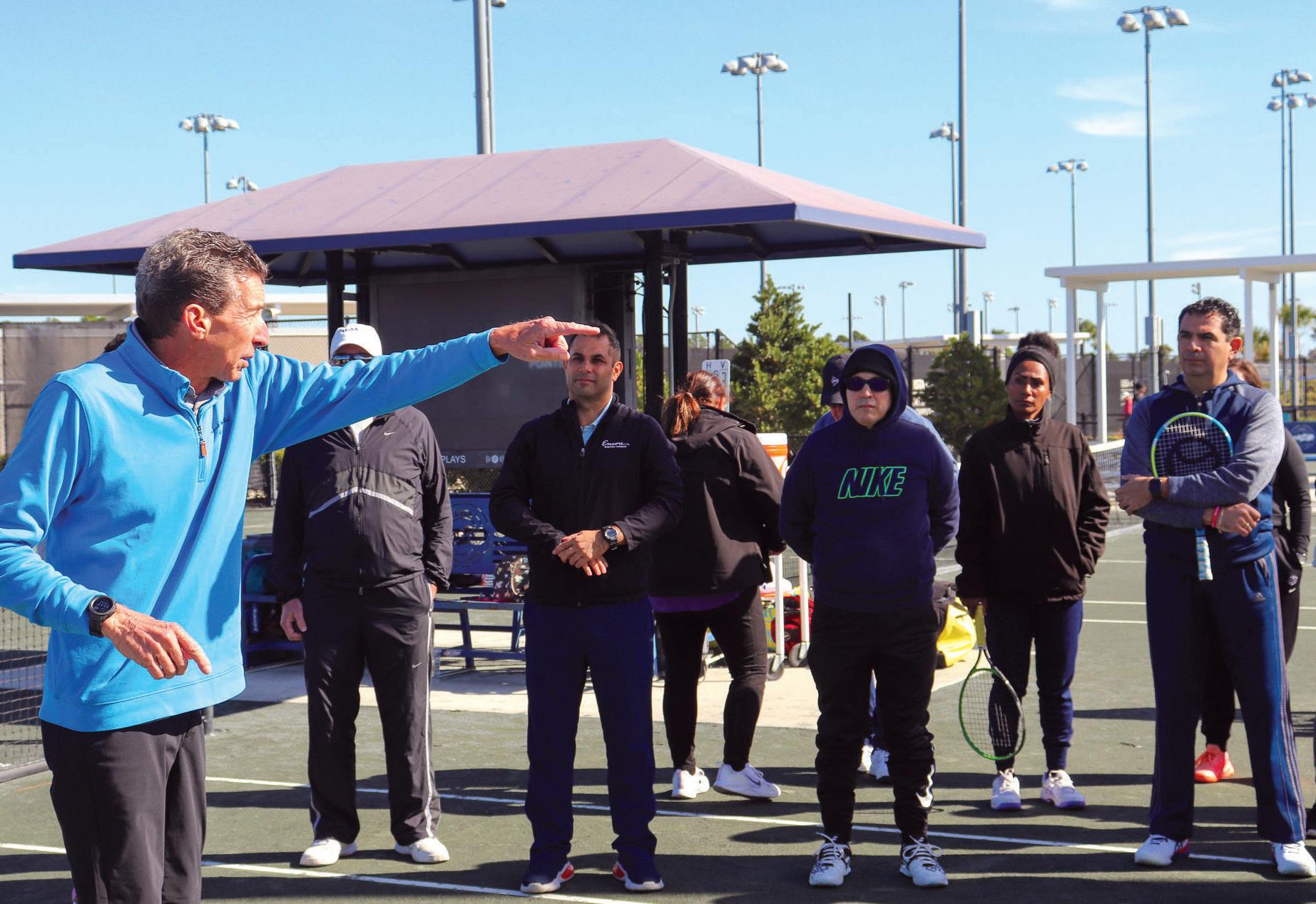
RSU video library of drills and downloadable lesson plans tailored for various coaching scenarios, including summer camp counselors, high school coaches, and adult beginners. Continuous education and professional development are integral to the program’s success. Coaches have access to comprehensive curriculum resources created by USTA Coaches Resources and RSU. The program is also working with the USTA Coach Development team to provide video training for each curriculum, ensuring coaches can easily review and execute the training.
Technology and data analytics play a crucial role in improving coaching practices and player development. The program’s webpage is a valuable resource, offering various training and curriculum tools. Additionally, the CRM database helps identify underdeveloped areas and gaps in training, enabling the program to focus on growing programs like Love Serving Autism and wheelchair tennis. Looking to the next couple of years, the long term vision for the USTA Florida Community Coaching Program is to have community coaches in every section of the state. Recognizing the challenge of meeting in person regularly, there are plans to host virtual trainings to help fine-tune the newfound coaching passion. This approach will ensure that the program continues to support the growth and development of tennis coaching in Florida, ultimately shaping the sport’s future in the state.
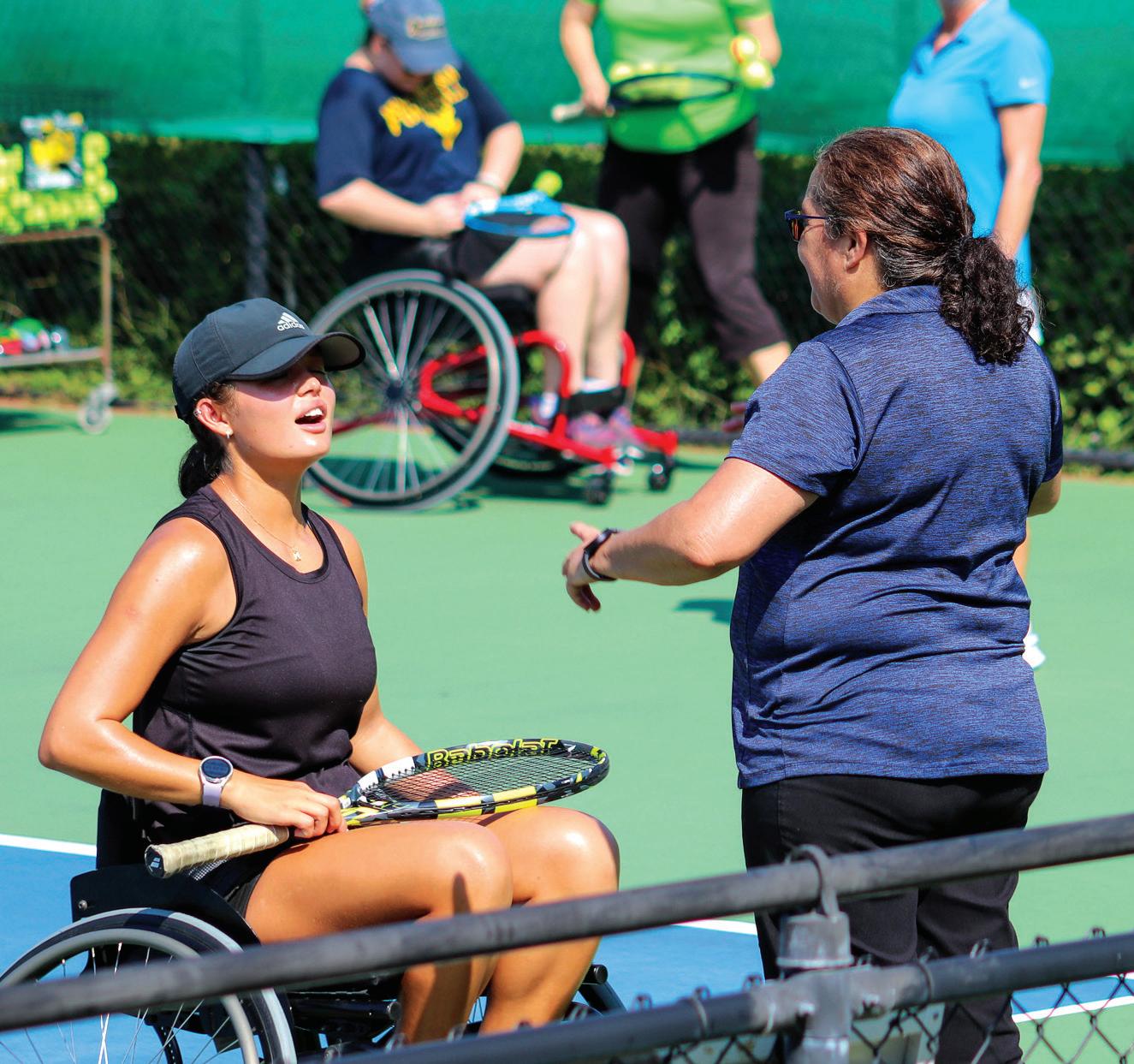
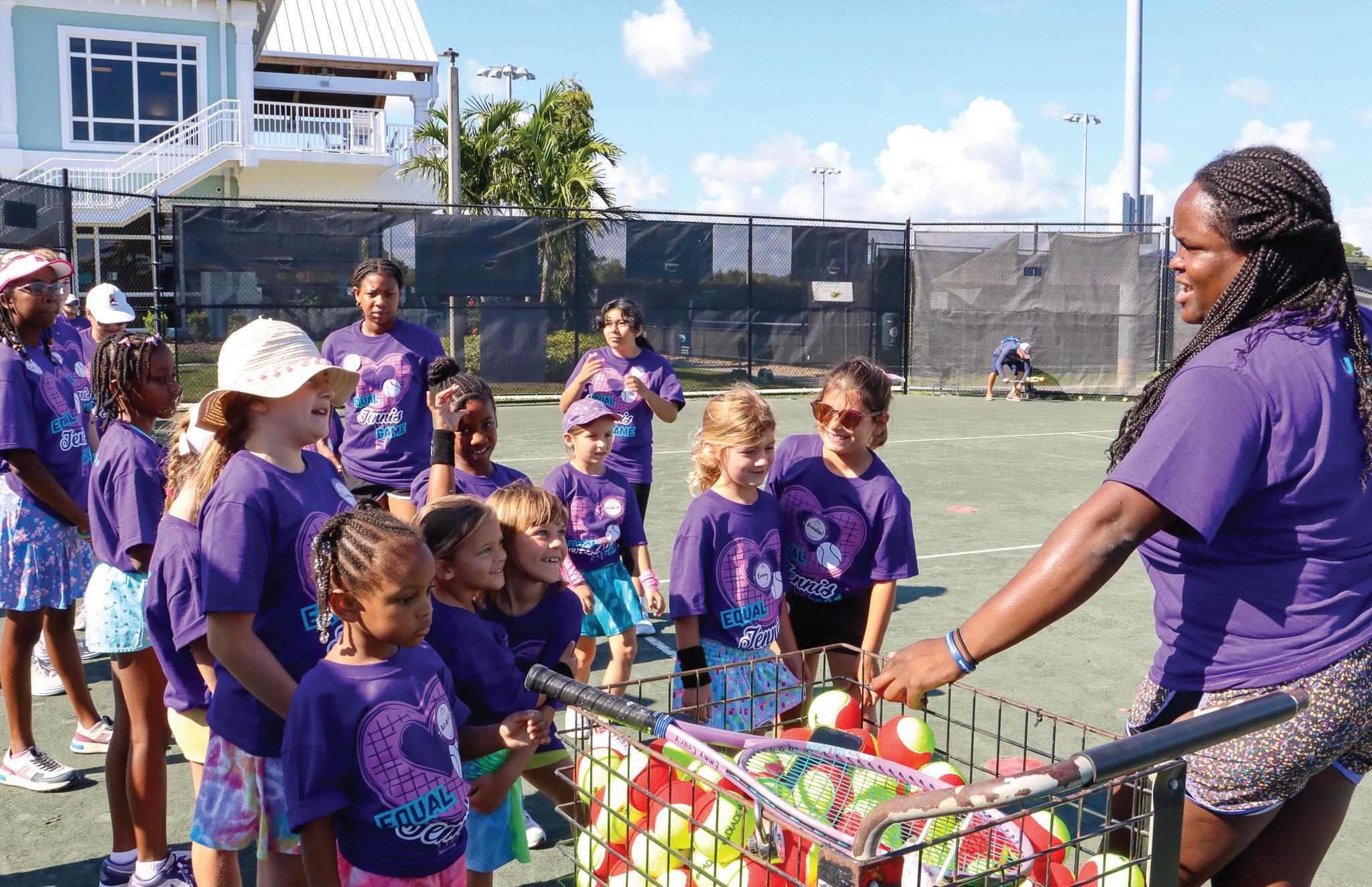
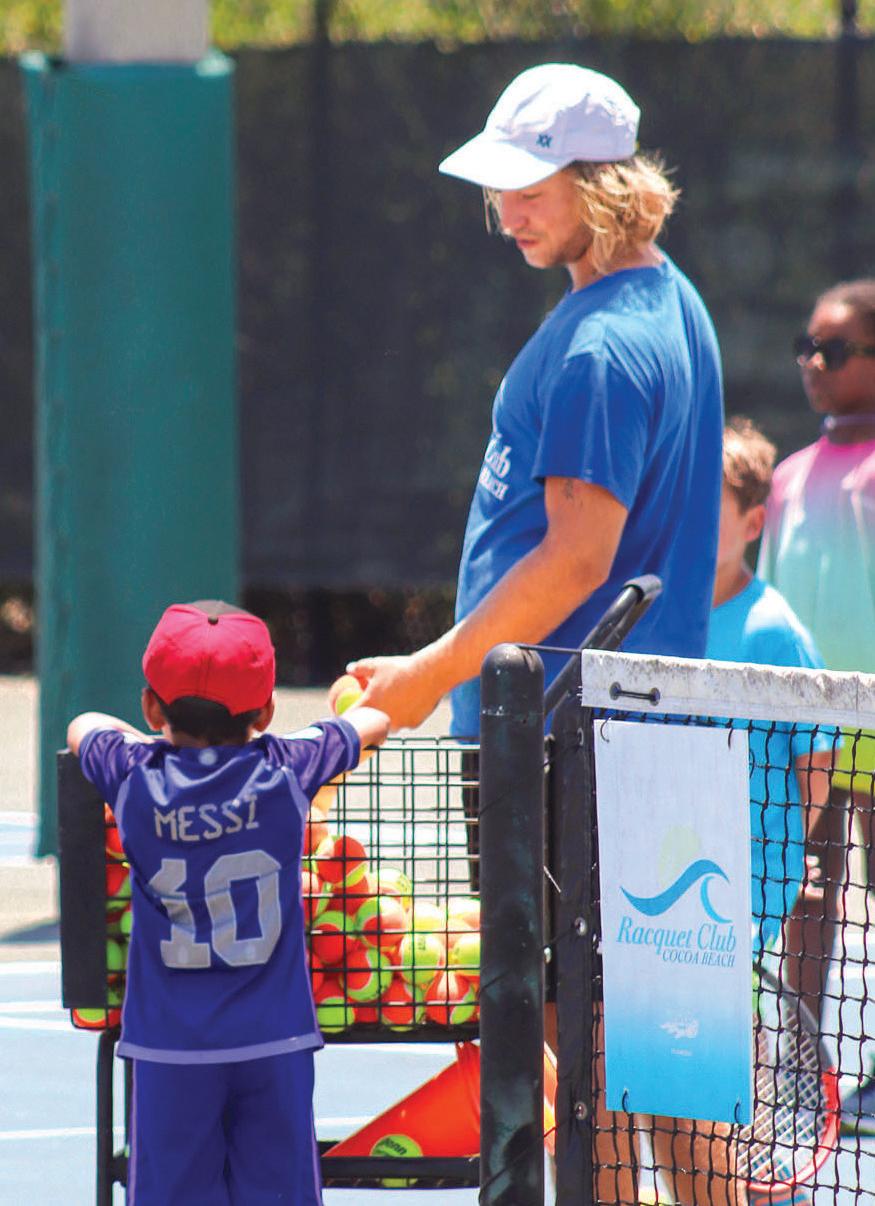
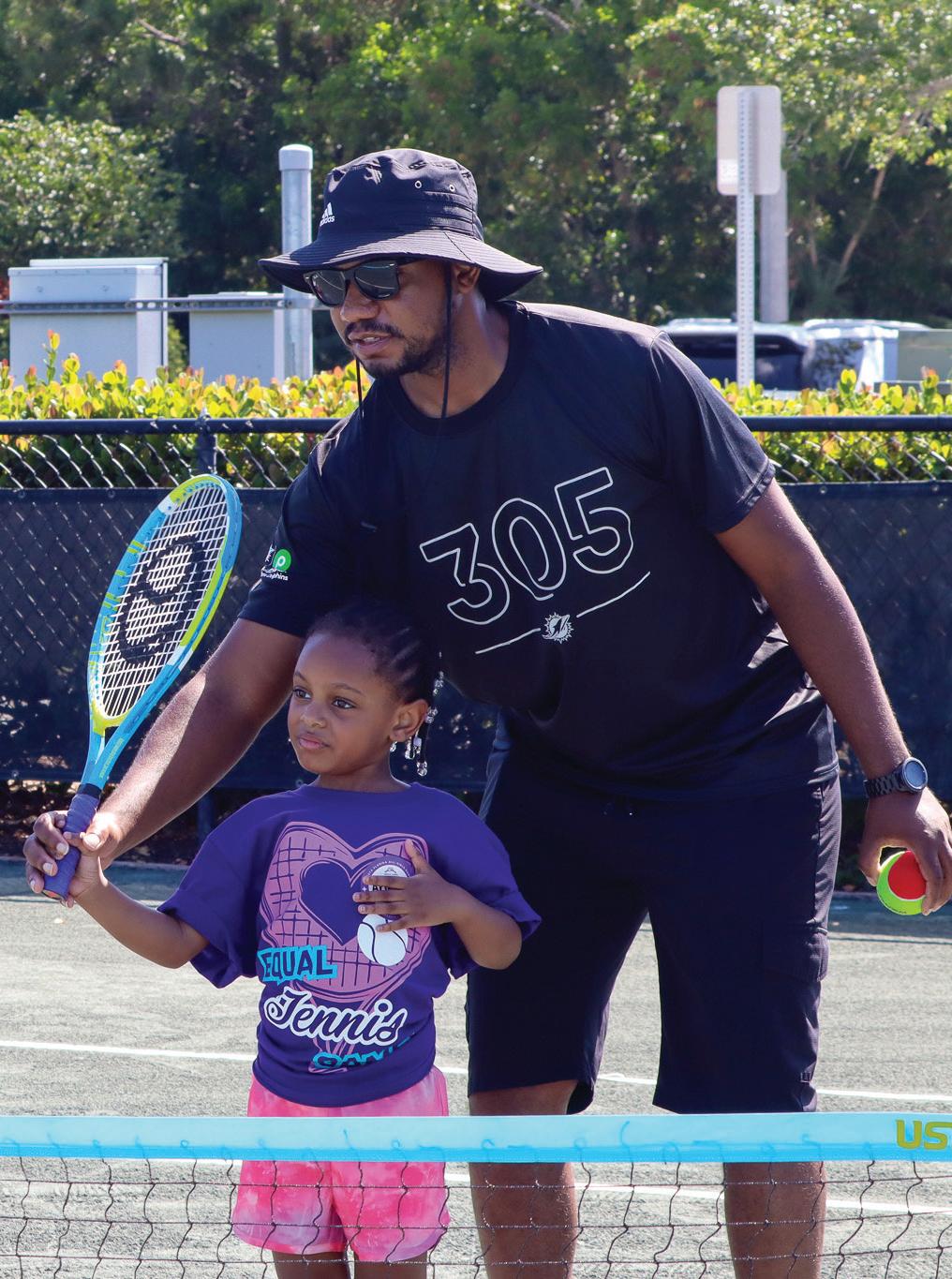
By Jaret Kappelman
In the rapidly evolving world of sports technology, SwingVision stands out as a transformative tool that is shaping the future of tennis not only in Florida but across the entire tennis community. This cutting-edge AI-powered application leverages the latest advancements in artificial intelligence and consumer technology to provide tennis players and coaches with invaluable insights and tools to enhance their game.
SwingVision offers a comprehensive suite of features designed to improve every aspect of a player’s game. From real-time video analysis and shot tracking to detailed performance metrics, the app provides an in-depth look at a player’s strengths and areas for improvement. Players can review their matches and practice sessions with precise data on shot placement, ball speed, spin, and rally length. This level of detail, not previously accessible to all tennis players, is now available to everyone!
For coaches, SwingVision is a game-changer. The app’s ability to analyze footage and provide instant feedback allows coaches to spend more time focusing on technique and strategy. With features like automated video highlights and shot heatmaps, coaches can tailor their training programs to the specific needs of each player. This personalized approach not only accelerates skill development but also keeps players engaged and motivated.
For Junior and Adult league competition, one of the biggest benefits of SwingVision is the ability to settle line disputes on the courts. Unless you’re a pro, tennis matches are often left to the players to decide if the ball was in or out. With SwingVision, players can easily review if a ball landed inside or outside of the lines.
In Florida, a state renowned for its vibrant tennis community, SwingVision has been embraced by many. In 2023, SwingVision entered a three-
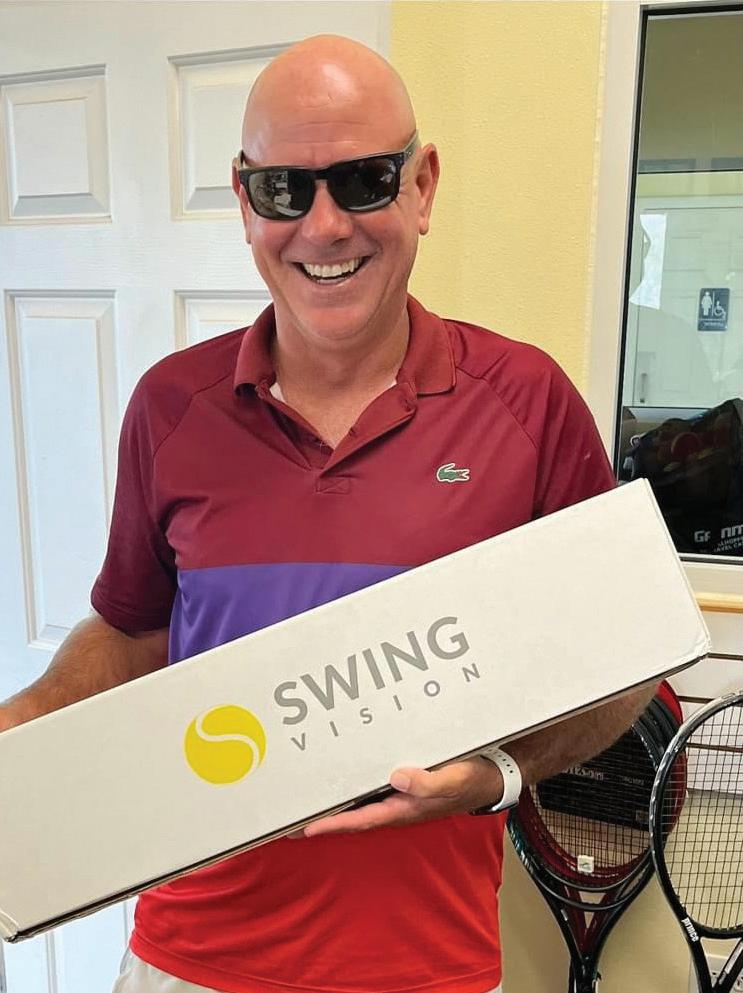
year partnership agreement with USTA Florida, recognizing the potential of SwingVision in advancing player development. SwingVision has been implemented at all four of USTA Florida’s managed facilities, Racquet Club of Cocoa Beach, Fort Walton Beach Tennis Center, Riverside Racquet Complex, and Play Tennis Gainesville and is accessible for players to use.
“I’m thrilled to share that as a result of this collaboration, we’re now setting up Florida clubs with SwingVision so players can get the pro level experience on their home court,” said George Opelka, SwingVision. “On the events front, we’ll be at select junior tournaments in 2024 providing stats and video analysis to players, with future plans to allow players to challenge line calls electronically!”
Beyond Florida, SwingVision is making waves across the global tennis community. The app’s intuitive design and powerful features have grown a significant user base, from grassroots players to elite professionals. SwingVision has been backed by Grand Slam Champions, Andy Roddick and Lindsay Davenport, both of whom are investors.
Looking ahead, the potential uses of SwingVision are endless. The app continues to evolve, with ongoing updates and new features being added regularly. As SwingVision continues to innovate, it promises to push the boundaries of what is possible in tennis training and performance. SwingVision is not just shaping the future of tennis, it is revolutionizing the way the game is played, coached, and enjoyed.
Directors that are interested in bringing the SwingVision to their club can contact George Opelka at george.o@swing.vision. Players that are interested in trying SwingVision can use this link to get a 45-day trial and discount swing.vision/r/ustafl20.
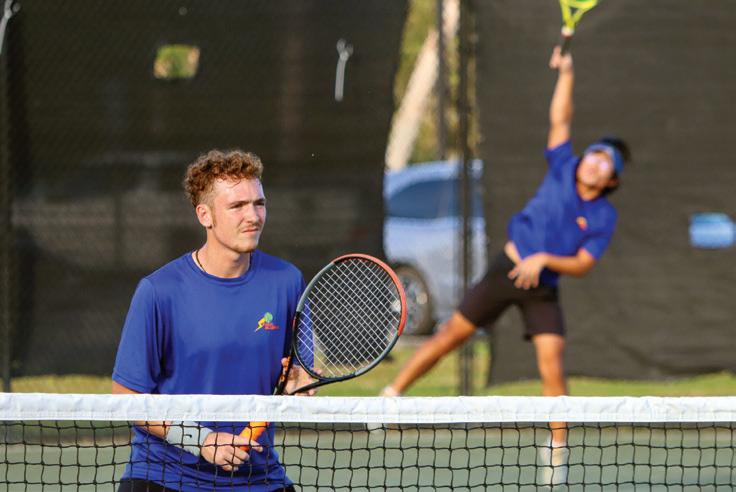
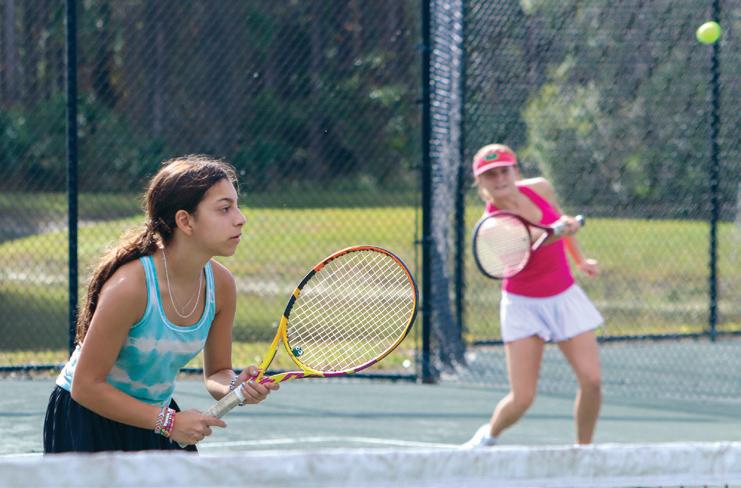
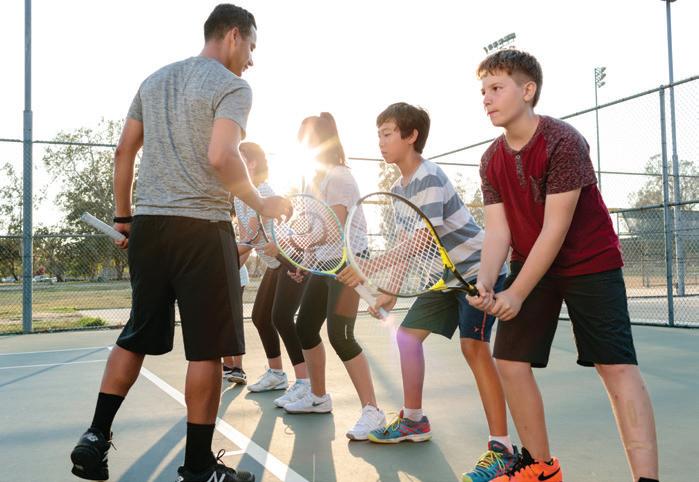
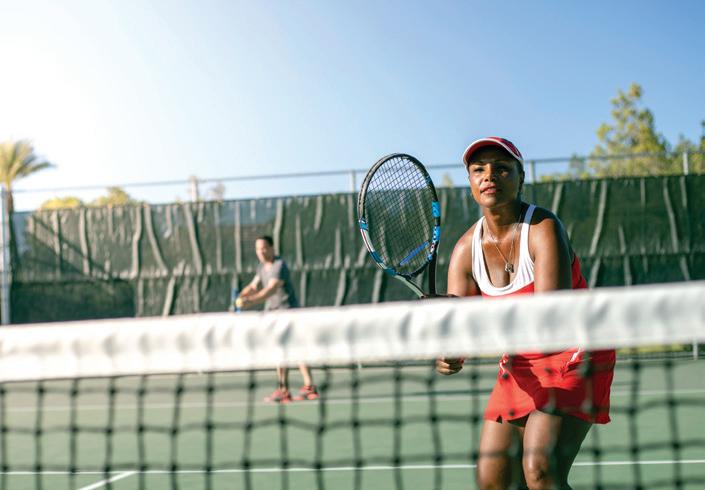
By Jaret Kappelman
The latest USTA Florida Leadership Academy Class of 2023-2024 has successfully graduated, marking a significant milestone in their journey to becoming leaders in the tennis industry. The graduation ceremony, held on June 15, celebrated the accomplishments and growth of these aspiring tennis volunteers, who are now equipped to make a profound impact on the sport.
Throughout their time in the Leadership Academy, the class engaged in a comprehensive curriculum designed to hone their leadership skills, strategic thinking, and industry knowledge. Under the mentorship of industry leaders, such as USTA Florida Board Members, they have learned many valuable lessons to take into their future roles.
Another mentor, Safi Bahcall, known for his innovative approach to business and leadership, guided the class through a series of six experiments and projects that challenged their perspectives and expanded their capabilities. Participants were broken into groups and assigned different topics to better the tennis community.
One of the experiments was focused on the Volunteer Reward and Recognition System. Their team’s mission was to harness the experiences of volunteers in hopes of collecting valuable data to aid in improving recruitment and retention of future volunteers.
The SwingVision Experiment was another significant project. This initiative involved integrating cutting-edge technology to enhance player performance and coaching techniques. Their goal was to promote sportsman ship and stress-free matches by using the electronic line calling feature that SwingVision provides.
In the USTA Florida App Experiment, the class delved into the development and optimization of a mobile application aimed at streamlining communication and engagement within the tennis community. They focused on creating a user-friendly platform that offers valuable resources, event updates, and interactive features to connect players, coaches, and enthusiasts across Florida.
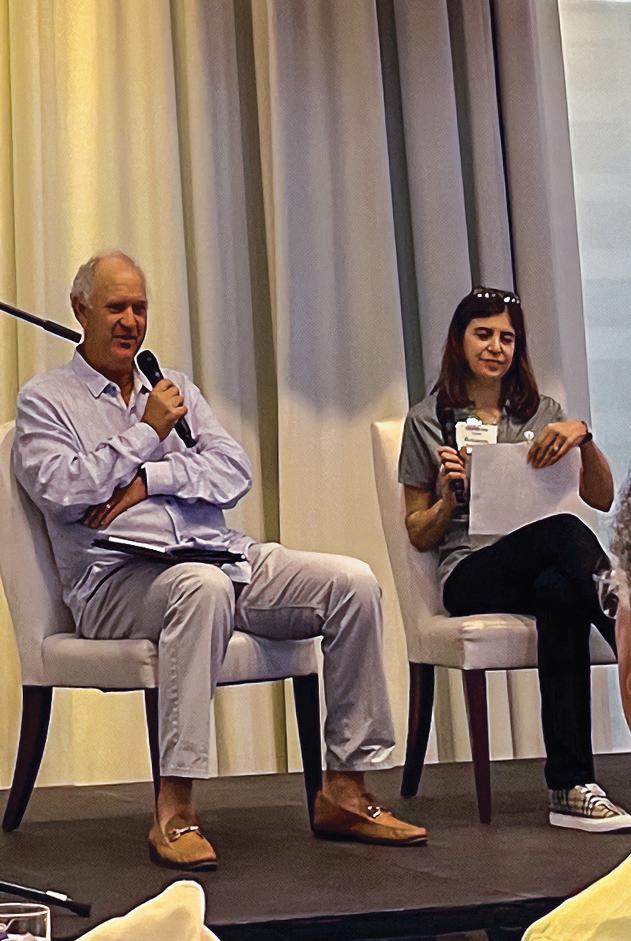
Promoting tennis in public parks was addressed through the Public Park Free Clinic Promotion project. Recognizing the accessibility and inclusivity of public parks, the class devised strategies to organize and promote free tennis clinics. These clinics aimed to introduce the sport to new audiences, particularly in underserved communities, fostering a love for tennis and encouraging lifelong participation.
The Teens Coaching Middle Schoolers initiative was designed to cultivate the next generation of tennis coaches. By empowering teens to mentor and coach middle school students, the program not only provided valuable coaching experience to the teens but also created a supportive environment for younger players to develop their skills and passion for the sport.
Lastly, the Social Events to Drive New Players experiment explored the potential of social gatherings to attract new players to the tennis community. The group organized and hosted a family event for all ages at Sarah Vande Berg Tennis Center in Zephyrhills and offered follow-up clinics to the participants to keep the new players.
Throughout these projects, mentorship from the USTA Florida Board, Industry Leaders, and Bahcall was instrumental in guiding the class through these lessons on innovation and collaboration. Their insights and expertise helped the participants navigate challenges, think creatively, and implement impactful solutions.
On top of these experiments, they have been competing learning modules, attending coffee chats, and engaging with each other in educational conversations about bettering the Florida tennis landscape.
As 17 participants from the Leadership Academy are set to graduate, they will leave with a wealth of knowledge, experience, and a strong network of peers and mentors. They are now ready to step into leadership roles within the tennis industry, bringing fresh perspectives and a commitment to fostering growth and excellence. Their journey has equipped them to drive positive change, inspire others, and ensure the continued success and vibrancy of tennis in Florida.
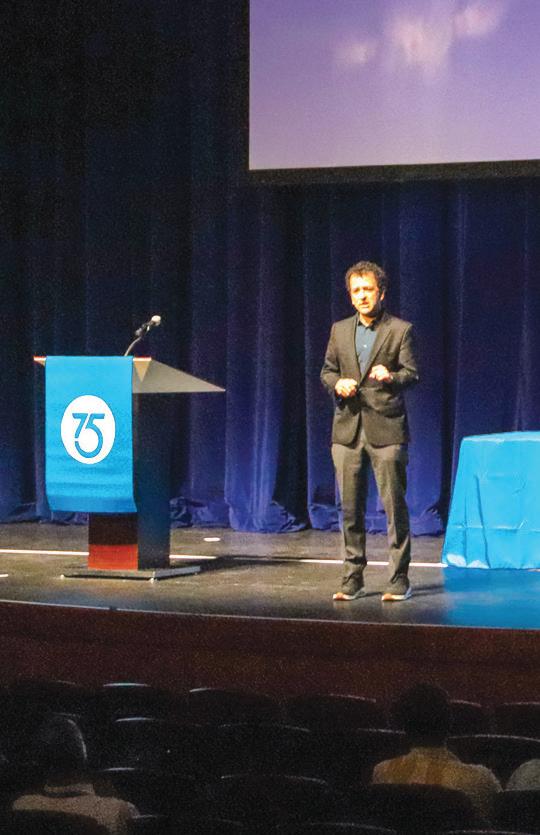
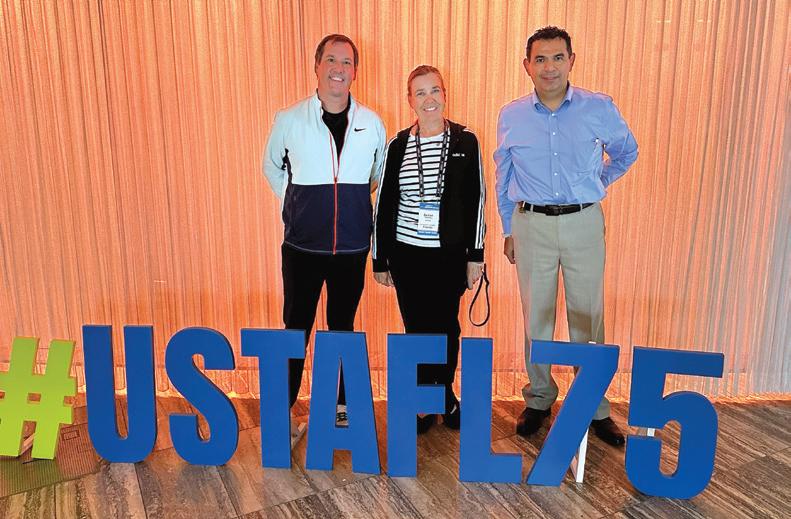

By Jaret Kappelman
Florida Tennis pros are having an amazing 2024. With the veterans still pushing strong late in their careers, as well as some young blood just beginning on their journey to stardom, there has never been a better time to be a Florida tennis fan.
Let’s take a look at the tournaments that Florida tennis pros have won in 2024 so far:
The youngster, Ben Shelton won his second career title at the U.S. Men’s Clay Court Championship. Shelton navigated a competitive field to claim the championship, following in his dad’s footsteps, when he won back in 1992. Shelton is looking to build on a successful 2023, where he reached the semifinals of the US Open.
Following her exciting end to 2023 with a US Open win, Coco Gauff got things off to a hot start in 2024, winning the ASB Classic for the second year in a row. Throughout her back-to-back wins, Gauff has a record of 20-1 in sets. This marked Gauff’s seventh career singles title, and she is looking to break into the top 2 in the world tennis rankings for the first time in her career.
At the start of June, Gauff added a Grand Slam to her resume, winning the French Open Women’s Doubles with Katerina Siniakova. She previously had lost two Grand Slam Doubles finals, but the third time was the charm for Gauff as she continues to thrive in her young career.
Following the 2024 Australian Open, Danielle Collins announced that this would be her final year competing in the WTA. Collins got her start in tennis in the Sunshine State, having grown up in Junior Team Tennis, to winning our most prestigious Junior title, the Bobby Curtis Junior State Championship, which she won three times (2006 12s, 2009 & 2011 18s). She also began her collegiate tennis career at the University of Florida as their star player.
Now, in the last year of her professional career, Collins captured her third and fourth singles title, which included back-to-back tournament wins. She went on a 13-match win streak, taking home the championships at both the Miami Open and Charleston Open.
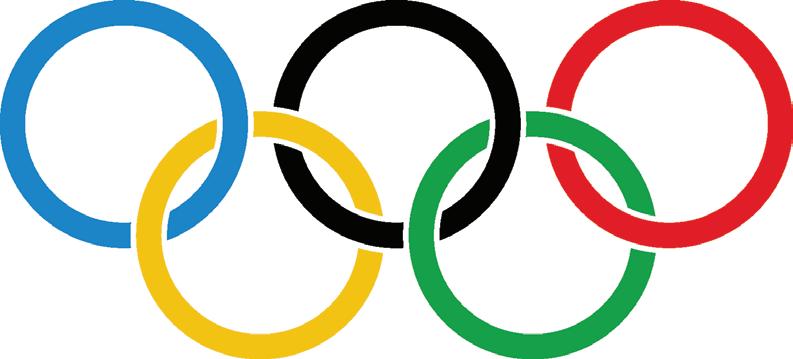
Sofia Kenin took home some hardware at the Miami Open as she teamed up with Bethanie Mattek-Sands for the pair’s second tournament win of the year. Kenin grew up playing in the USTA Florida competitive environment. She was a Bobby Curtis Champion back in 2010, taking home the Girls 12s division. Kenin also had some impressive runs at the Junior Orange Bowl and other Florida tournaments as she grew up and developed her game in the state.
The pair was clutch all weekend long as four of their five matches went to a 10-point tiebreaker. In three of the four tiebreakers, Kenin and Mattek-Sands only won by two points, showing insane nerves.
Sloane Stephens showcased her exceptional talent by clinching her eighth career title at the Open Capfinances Rouen Métropole. The first edition of this tournament, held in Rouen, France, saw Stephens dominate the indoor clay courts with her powerful baseline game. Her victory at this event not only highlights her consistent performance but also adds another significant achievement to her impressive tennis career. This win comes nearly 10 years after her first pro win, which came in 2015.
Stephens also became a first-time doubles champion at the Charleston Open. Teaming up with Ashlyn Krueger, the two dominated the competition, winning their first championship as a duo.
Cymbiotika San Diego Open, Nicole Melichar-Martinez
Nicole Melichar-Martinez continues to shine in the doubles circuit, securing her 13th career doubles title at the Cymbiotika San Diego Open. Partnering with Ellen Perez, Melichar-Martinez displayed remarkable skill and teamwork throughout the tournament. Their synergy on the court was evident as they navigated a competitive field to emerge victorious. This win not only marks a significant milestone in Melichar-Martinez’s career but also solidifies her status as a leading American doubles player.
By Jaret Kappelman
Florida has a rich history of producing exceptional tennis athletes who have represented the United States in the Olympics, brought home prestigious medals, and added to the state’s proud legacy in the sport. These athletes, through their dedication, talent, and hard work, have not only achieved personal glory but also represented American tennis on the global stage.
Jennifer Capriati, a prodigious talent from Florida, made a significant mark in Olympic tennis. Born in New York but raised in Florida, Capriati burst onto the scene as a teenager. At the 1992 Barcelona Olympics, she achieved a remarkable feat by winning the gold medal in women’s singles, defeating the legendary Steffi Graf. This victory not only showcased Capriati’s immense talent but also underscored the depth of Florida’s tennis programs in nurturing world-class athletes.
Another Florida talent, Mardy Fish, has represented Florida quite well on the Olympic stage. In 2004, Fish went on an incredible run, falling one set short of a Gold Medal. He walked away from Athens with the Silver Medal.
In the 2024 Paris Olympic Games, Coco Gauff, Danielle Collins, and Austin Krajicek are set to represent the United States and the Sunshine State on the international stage. Also, Florida’s own Kathy Rinaldi, will coach the United States team.
Florida’s contribution to Olympic tennis is significant, with athletes from the state continuing to achieve remarkable success. These Olympians not only bring honor to their country but also inspire future generations of tennis players, showing that Florida remains a powerhouse in the world of tennis.
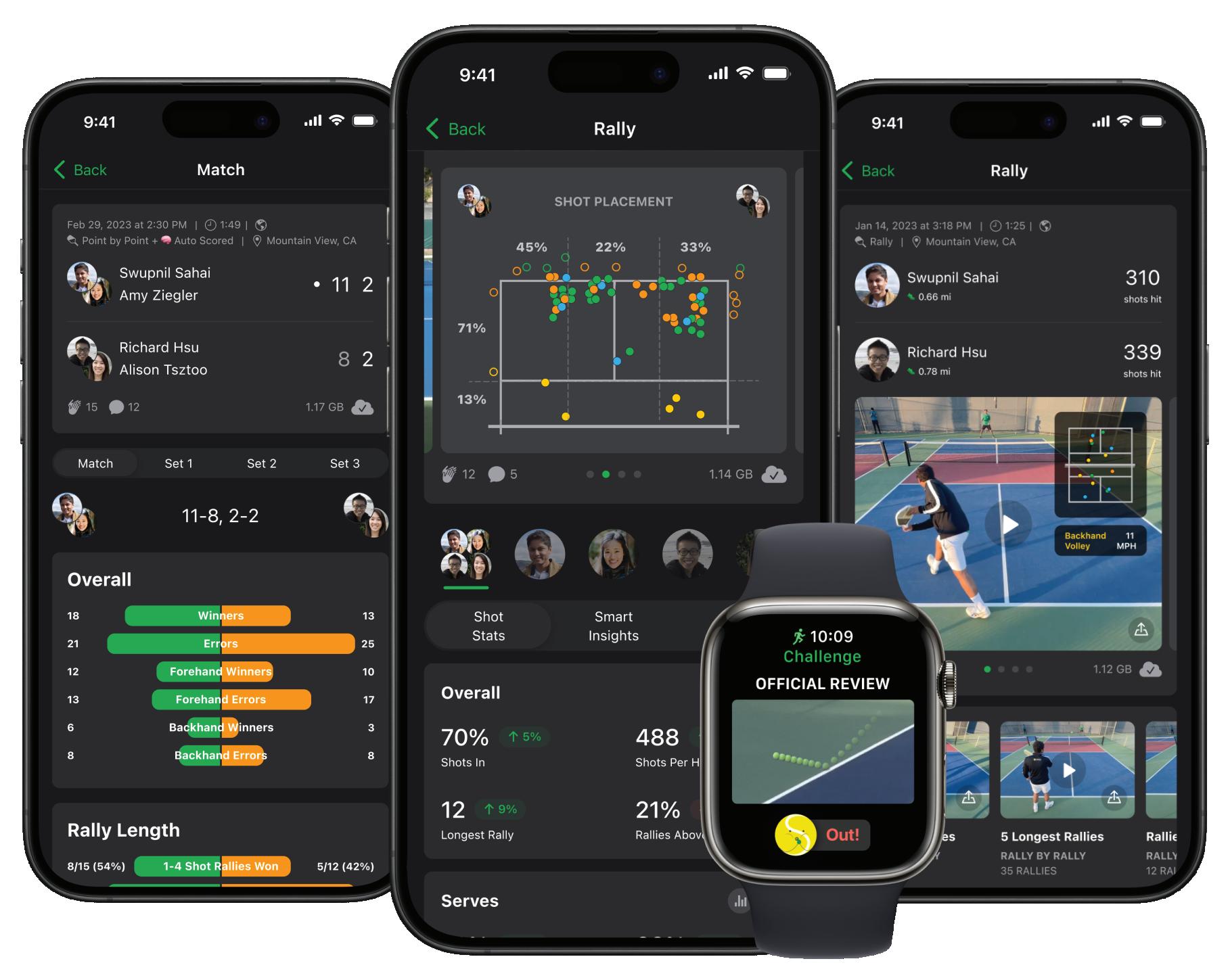
By Laura Bowen
“Quiet Please.” That’s a phrase you hear a lot on the tennis court. From the Grand Slams to local tournaments, tennis players have a reputation for asking to turn down the volume. But when it comes to advocacy, tennis players, providers, and communities need to do the opposite: turn the volume up in all public forums to keep our game growing well into the future.
In June, USTA Florida launched a new advocacy program to help our tennis community loudly and publicly support the growth of tennis. The advocacy program, which was designed by a team of volunteers with a breadth of advocacy experience, empowers local tennis players, providers, volunteers, and staff with a suite of resources to advocate on four major issues: Tennis is the healthiest sport; we welcome new and diverse players; we need more tennis coaches on our courts; and we need to add more tennis courts to serve our growing population.
Through a new, mobile-friendly web hub – ustaflorida.com/tennisadvocacy – local tennis advocates can access a wealth of new and existing information and resources. Our first-ever State of Florida Tennis report demonstrates how growth in population has led to pent-up demand for programs. This is powerful information that can help influence how communities invest in courts and programs. The report includes a number of infographics and data that can be used easily and effectively when advocates are speaking to local decision-makers about the power of tennis.
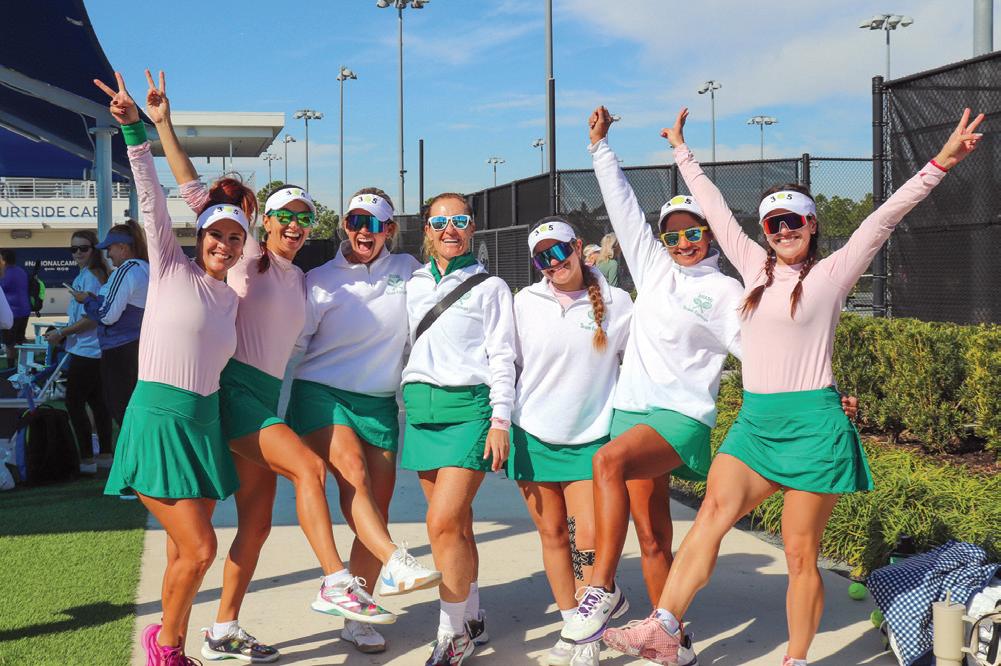
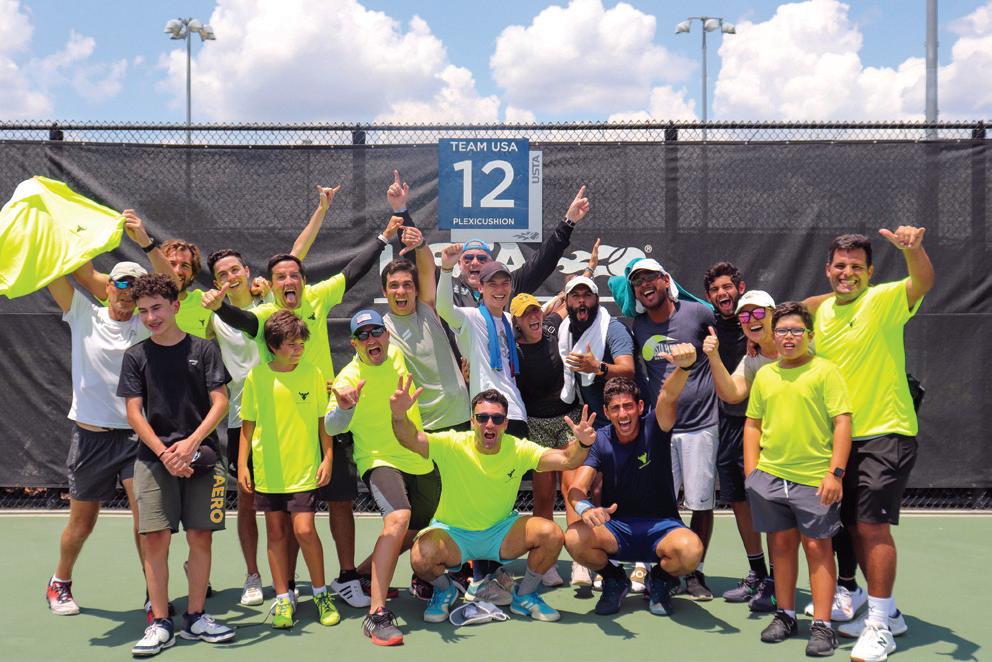
Later in 2024, we will be adding a new economic impact study to drive home the point that tennis facilities drive our local and state economy.
In addition to research, USTA Florida is providing more dedicated tools and resources to help local supporters drive new programs, build more tennis courts, and bring more coaches into their communities. Although some of these tools already are available, this program empowers individuals to bring those pieces together in a way that amplifies the message that tennis is the sport of choice for Floridians. It’s the difference between having five people in the stands cheering separately compared to 100 or even 1,000 cheering together.
As part of the program, USTA Florida has begun recruiting local advocacy leaders to help drive additional key projects in areas across the state. Those leaders will have special resources, such as full research reports, media tools, customized data and presentations, and virtual workshops and trainings, to enable them to direct their own local advocacy projects. Three pilot projects are currently under development in Tampa, Palm Beach County and the Panhandle, with many more planned for 2025.
The goal of the new tennis advocacy program is to build a robust network of advocates across the state who can – and will – raise their voices loudly and often when issues and opportunities arise. Yes, tennis can still be quiet on the court, but let’s max out the volume everywhere else.
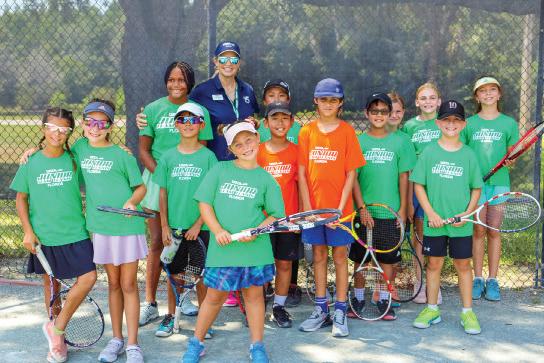
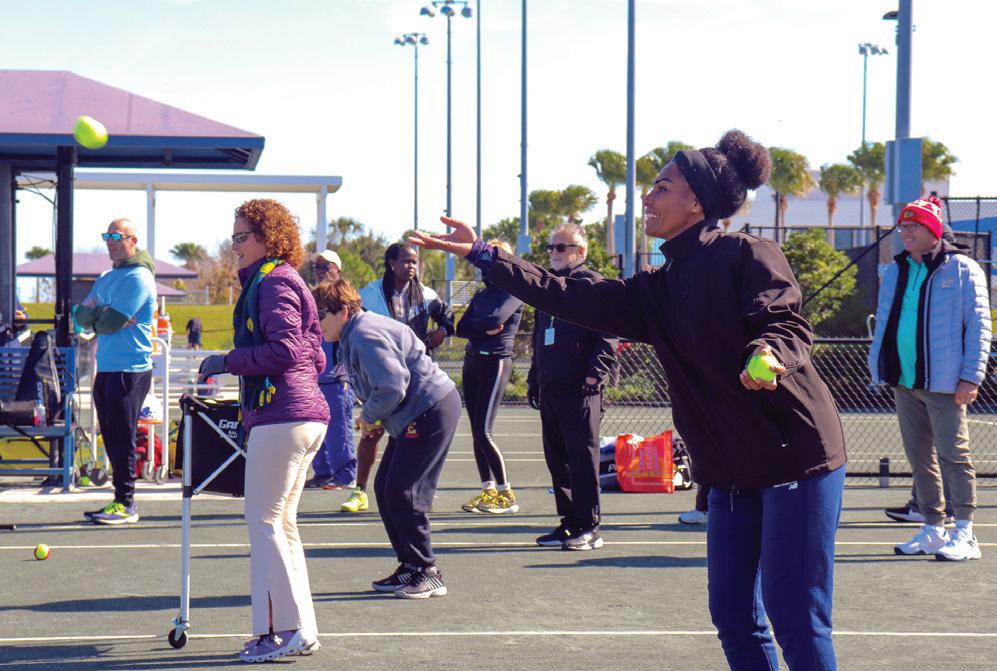
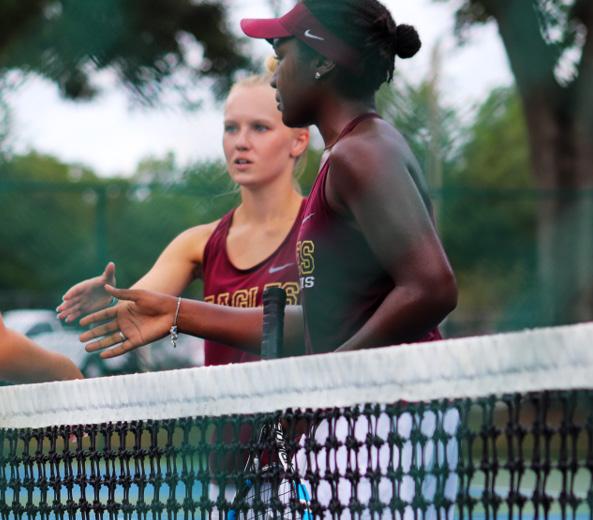
Get custom T-Shirts, Polos, Bags, and more to celebrate 75 years of Florida tennis. Scan the QR code or visit the link below to view USTA Florida’s limited edition 75th Anniversary apparel.



